The ultimate guide to running shoe foams
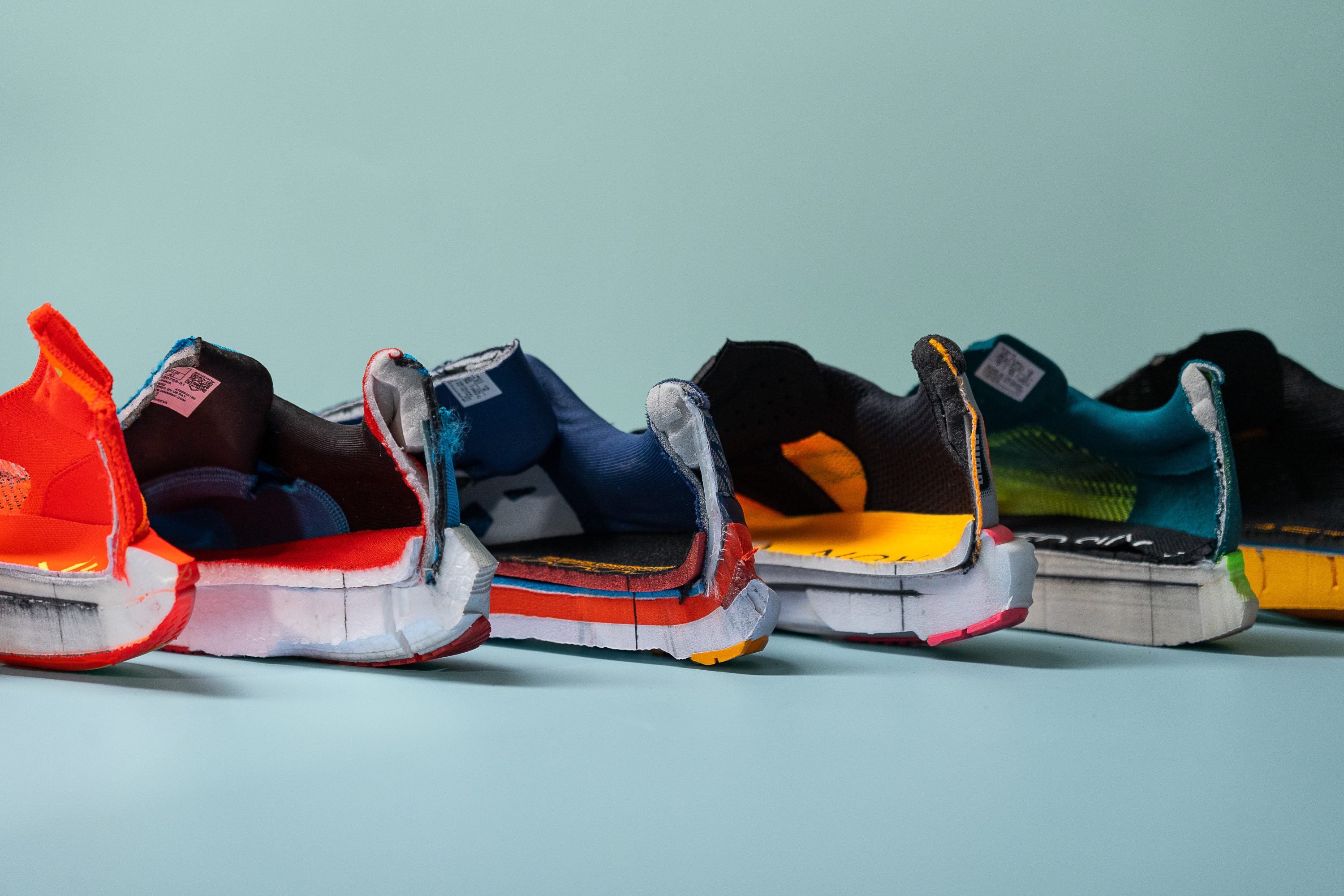
Running shoe companies aren't as transparent as we'd love, making it difficult for both casual and advanced runners to gather detailed information about specific running shoe foams.
Recognizing this challenge, we've done an extensive guide for you, presenting our findings and knowledge about running shoe midsoles in a clear and comprehensive manner.
What makes foam so important for running shoes?
The midsole in a running shoe is undeniably the most crucial component, as it enables every runner to cover greater distances and achieve faster speeds while minimizing the risk of injury.
Running shoe foam works as a shock absorber, cushioning the impact on your feet with each stride. This reduces stress and potential damage to joints and muscles, allowing for increased comfort and decreased fatigue. In other words, we can sustain a faster pace, run longer distances and recover faster.
Choosing the perfect foam for your running shoes is essential, as it can significantly influence your performance and recovery. Whether you're striving to demolish your PB in a short race or seeking enhanced injury prevention and reduced fatigue through increased impact protection, the right foam and stack height can make a world of difference.
Winter running: How it affects your running shoes
One of the best—and underrated—advantages of most premium foams when compared to standard foams is the performance under cold temperatures.
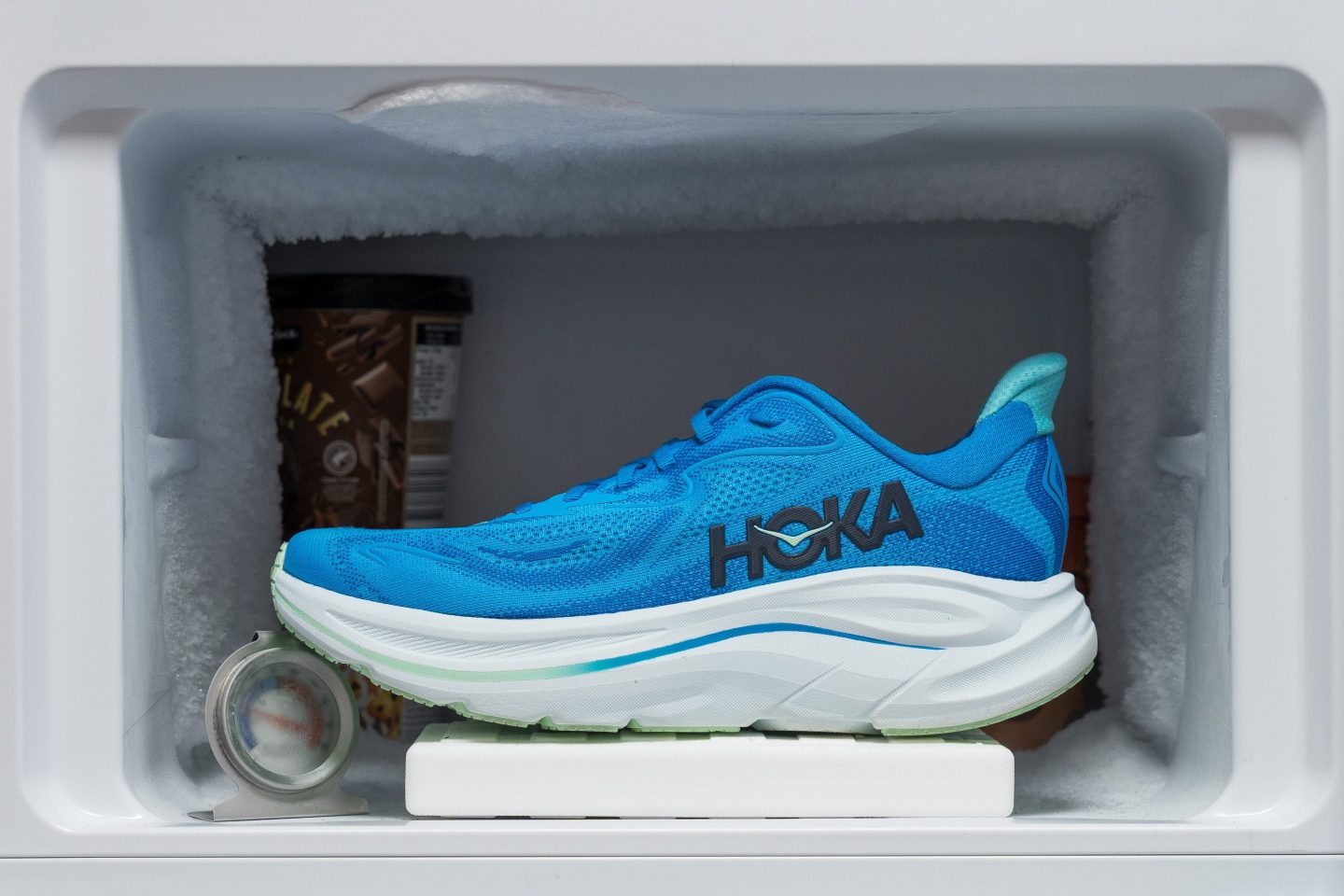
Let’s go deeper in this regard with 4 examples of premium foams from our lab tests:
| Shoe | Foam | Durometer at room temperature (HA) | Durometer after 20 min in the freezer (HA) | Change |
| Nike Air Zoom Alphafly Next% 2 | ZoomX (Pebax) | 19.1 | 20.8 | 8.5% |
| Adidas Adizero Adios Pro 2.0 | Lightstrike Pro (TPEE) | 22.5 | 23.5 | 4.4% |
| ASICS Metaspeed Sky+ | FF Turbo (PEBA) | 28.8 | 31.0 | 7.8% |
| Saucony Endorphin Speed 3 | PWRRUN PB (Pebax) | 13.8 | 14.5 | 5.1% |
As you can observe, the so-called premium foams maintain their consistency even in freezing temperatures. Now let’s look into 4 foams from standard midsoles:
| Shoe | Foam | Durometer at room temperature (HA) | Durometer after 20 min in the freezer (HA) | Change |
| New Balance Rebel v2 | FuelCell (TPU + EVA) | 6.5 | 14.0 | 115.4% |
| Adidas Adizero Adios 7 | Lightstrike EVA (EVA) | 24.0 | 30.6 | 27.5% |
| ASICS Gel Nimbus 25 | FFBlast+ (EVA + OBC) | 18.6 | 25.4 | 36.3% |
| Saucony Endorphin Shift 3 | PWRRUN+ (EVA + TPU) | 22.0 | 30.5 | 38.6% |
Unfortunately, standard foams often become excessively rigid and firm, losing the comfortable feel of the original shoe you purchased in the store.
If you want to delve deeper into this relationship, check our in-depth guide about running shoes and temperatures.
Softness (compliance) vs. energy return (resilience)
Some runners mistakenly believe that the softer (or compliant) the shoe, the greater the energy return (resilience). It's easy to see why this misconception arose, as when Nike’s ZoomX was introduced in 2017, it was noticeably softer and bouncier compared to other foams available at the time. It felt nothing-short-of-miraculous.
This idea stuck in many people's minds, and now we often hear complaints about a shoe not returning as much energy as another simply because it's firmer. However, that's not how it works.
In reality, while a softer midsole (compliant) may offer enhanced cushioning and comfort during a run, it could also result in increased energy loss if it doesn't rebound quickly enough or compresses too much under pressure. It’s very common in mushy midsoles like the pre-2024 FuelCell.
Let’s take a look at 4 examples we curated using our lab’s shock absorption and energy return results:
| Shoe | Energy return | Shock absorption | Midsole softness |
| Nike Vaporfly 4 | 78.1% | 137 SA | 19.9 HA |
| New Balance 1080 v14 | 58.0% | 142 SA | 11.9 HA |
| Adidas Adizero EVO SL | 74.3% | 147 SA | 21.3 HA |
| Mizuno Neo Vista 2 | 60.3% | 170 SA | 10.0 HA |
As you can see, softness is not related at all with energy return. And it's also important to note that energy return (resilience) is just one aspect of a shoe's performance. For example, if you are an overpronator and run in a very soft midsole, regardless of the shoe's energy return, it may guide you to worse performances in every distance.
Let your shoes rest and recover
You may have heard from a friend that it's essential to let your shoes recover. Well, it's just like that.
In this chart created by the American-based company Dow to showcase the advantages of its EVA + OBC compound, various foams undergo static compression at room temperature for 22 hours. Afterward, they’re set for recovery during 24 hours. If a foam manages to return to its original shape entirely, it will have a compression set of 0%—which doesn’t happen at all.
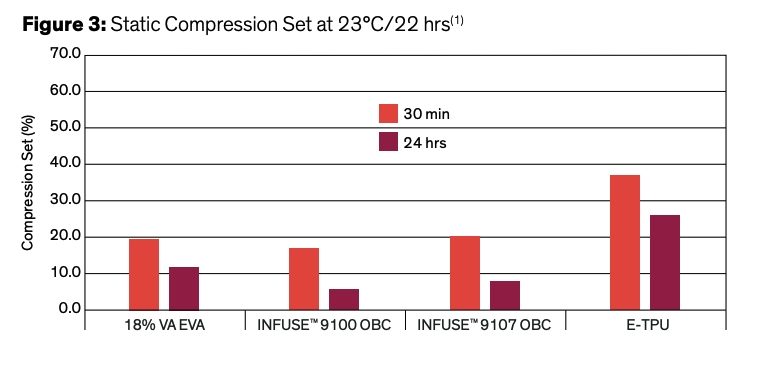 *INFUSE™ foams are EVA+OBC midsoles like ASICS FlyteFoam Blast+ or On Helion.
*INFUSE™ foams are EVA+OBC midsoles like ASICS FlyteFoam Blast+ or On Helion.
The results are truly astounding. Surprisingly, regular EVA foam outperforms EVA + OBC in the 30-minute test, although it falls short in both variants over 24 hours. However, when compared to a E-TPU foam the difference is absolutely astonishing.
But that's not the only test Dow conducted regarding foam recovery after exertion. They performed an even more captivating test—how different foams recover after 100,000 cycles at 40 degrees Celsius. The results are fascinating because EVA foams (represented by the grey line) show remarkable durability, hardly fatiguing at all, but only maintaining 70% recovery. However, both E-TPU and EVA + OBC foams initially struggle to regain their edge within the first 24 to 100 hours, but recovery significantly improves, soaring to 90% after five days.
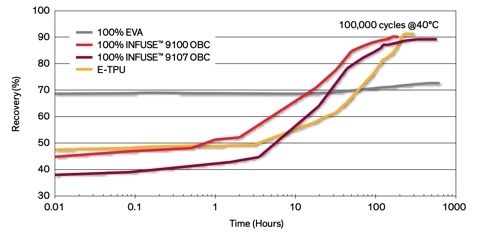
Source: Dow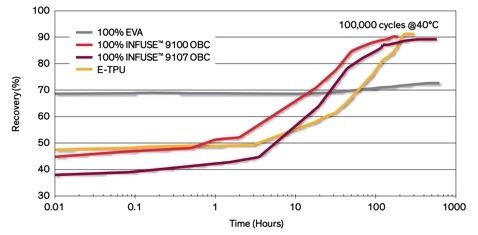
From our perspective, to be extra cautious, it's wise to rotate between two or three pairs of shoes, allowing at least 48 to 72 hours before reusing the same model when not using standard EVA foams. If you're aiming for optimal recovery for your footwear, we've found that letting them rest for at least five is the way to go.
Just as with your own body, the longer and faster you run, the more rest your shoes will need to fully recover. By following this practice, you'll not only ensure better protection for your legs and enjoy more bounce in your step, but you'll also prolong the lifespan of your shoes by allowing them adequate recovery time between workouts.
Stack height: higher is better?
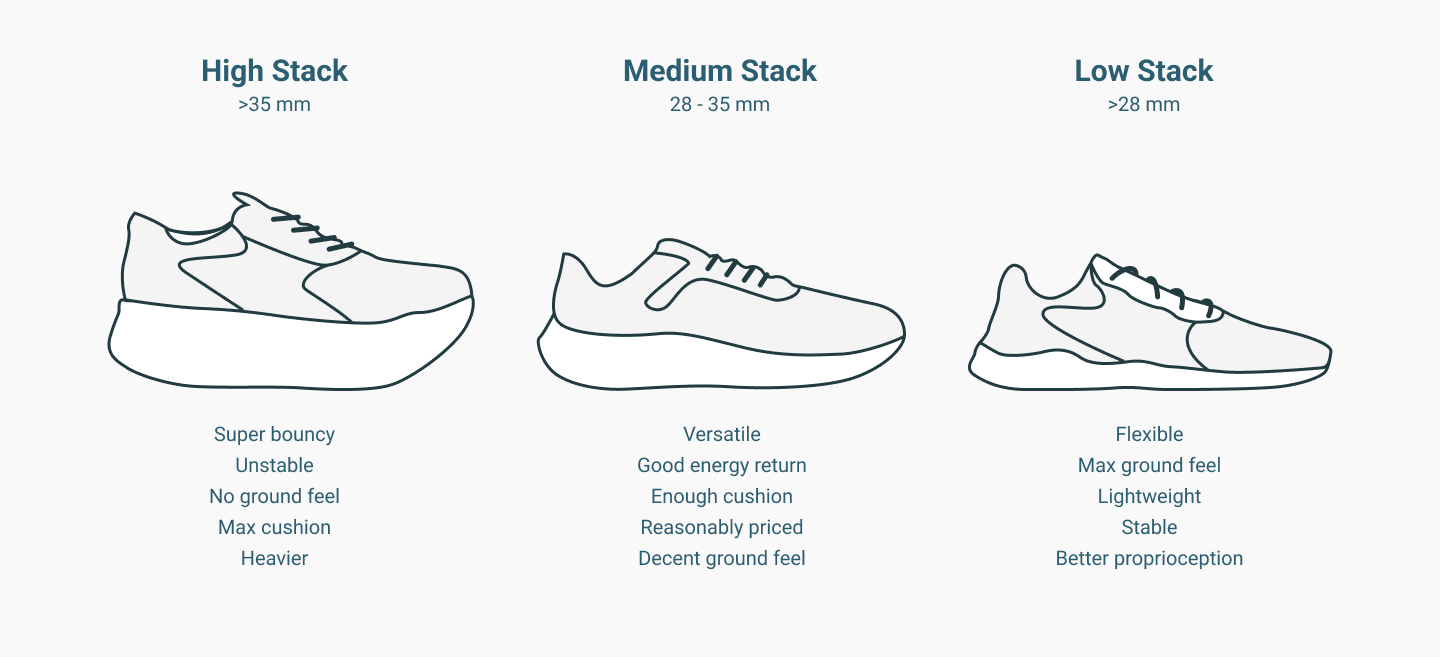
No, higher is just higher... though it could be better when considering shock absorption alone.
In recent years, the popularity of ultra-high running shoes has soared. The epitome of this trend was the Adidas Adizero Prime X with its 50-mm heel stack height. To be fair, Eliud Kipchoge's original, unreleased Alphafly worn in the INEOS 1:59 event in 2019 also had a 50-mm stack—and 3 carbon-fiber plates—but it was finally reduced by Nike to 40 mm due to World Athletics regulations for road running shoes. Regardless, even a 5-cm shoe has become normalized, though it was unheard of just a few years ago.
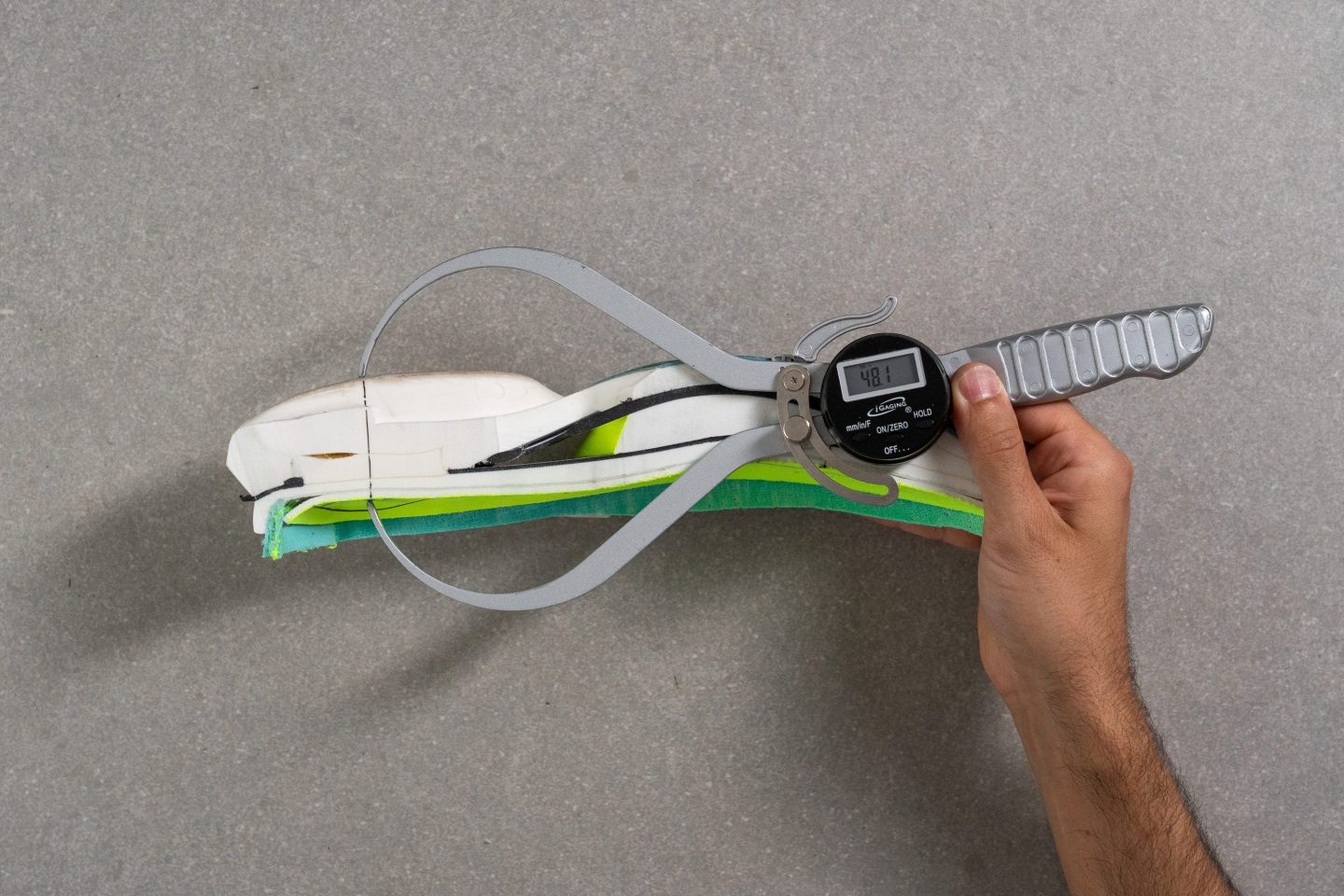
Since the introduction of the OG Vaporfly and the realization that a high stack of premium foam combined with a carbon plate was a winning formula, brands have been making their shoes taller, affecting not just racing shoes but all kinds.
However, the final answer depends on the individual:
- For neutral long-distance runners with good form, a thick midsole (>35 mm) can work wonders even for training purposes, such as the Adidas Adizero Prime X3 STRUNG.
- Pronators or overpronators should think twice before investing in a skyscraper-high, soft shoe. They'll gain shock absorption but may experience instability issues and lose energy laterally. A firmer shoe like the Saucony Hurricane 24 could be a better option.
- Mile, 5K, and 10K runners may benefit more from a lower-stack shoe like the Nike Streakfly 2, as energy return isn’t harmed by a lower stack height when the shoe contains sufficient foam.
It's worth noting that the market is demanding taller shoes because most runners want impact protection and do not prioritize ground feel or a more natural ride. As a result, brands are delivering taller shoes to meet these demands.
Same branding, different foams
Most runners believe that the ZoomX foam in the Alphafly series is identical to that in the Vomero 18. However, that's not the case.
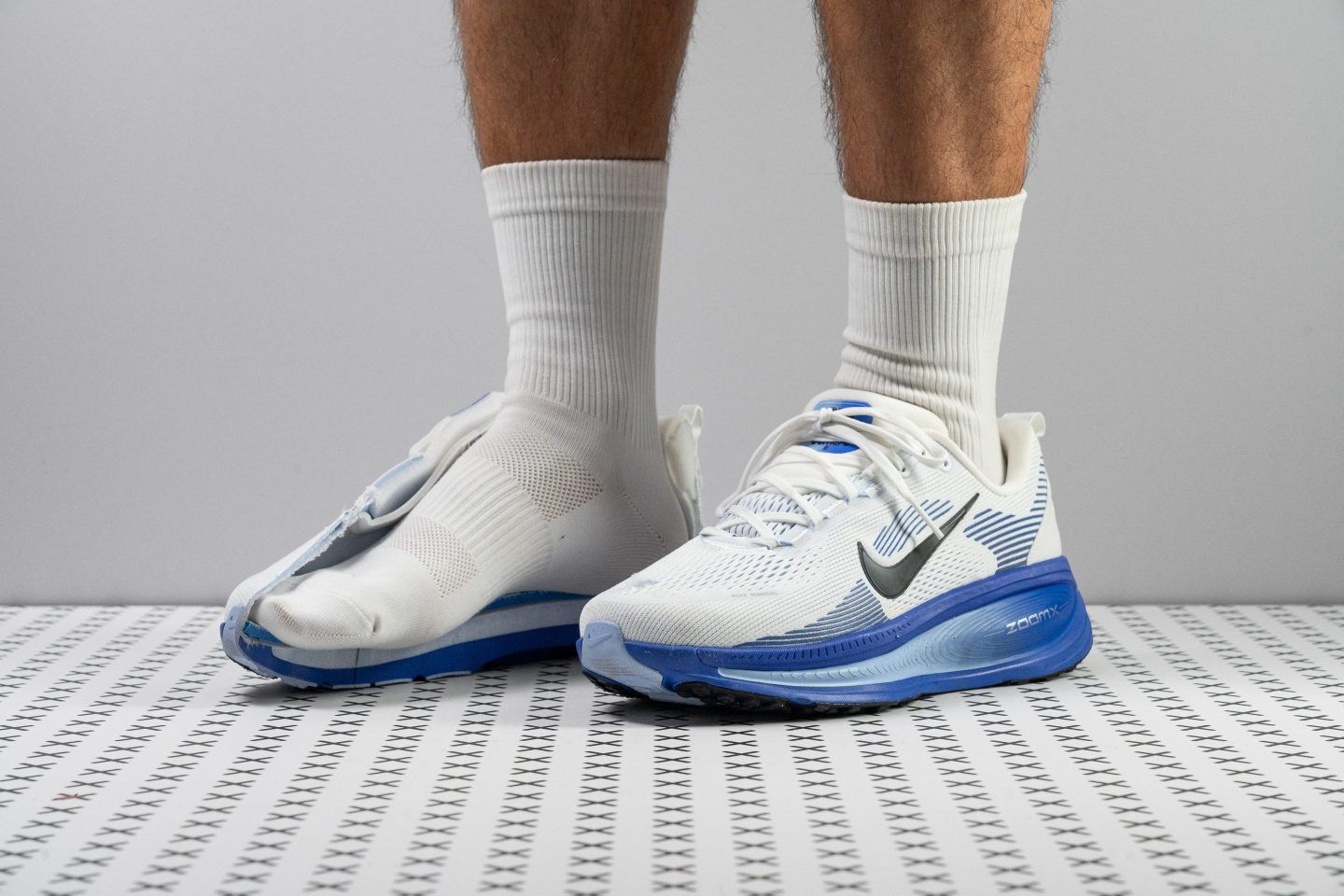
Nike, like many other brands, adjusts and modifies the foam to enhance its softness and durability for each shoe model, aiming to improve energy return and lower weight in racing shoes, and extend the average life in daily trainers. They achieve these changes by tweaking the foam's formula, adding more rubber or more nitrogen to the supercritical midsoles. But they call it with the same name.
How can we confirm that? It's quite straightforward for us. We took our microscope here in the lab and compared the ZoomX foam used in the Vomero 18 (right) and the Alphafly 3 (left). Here's what we discovered.
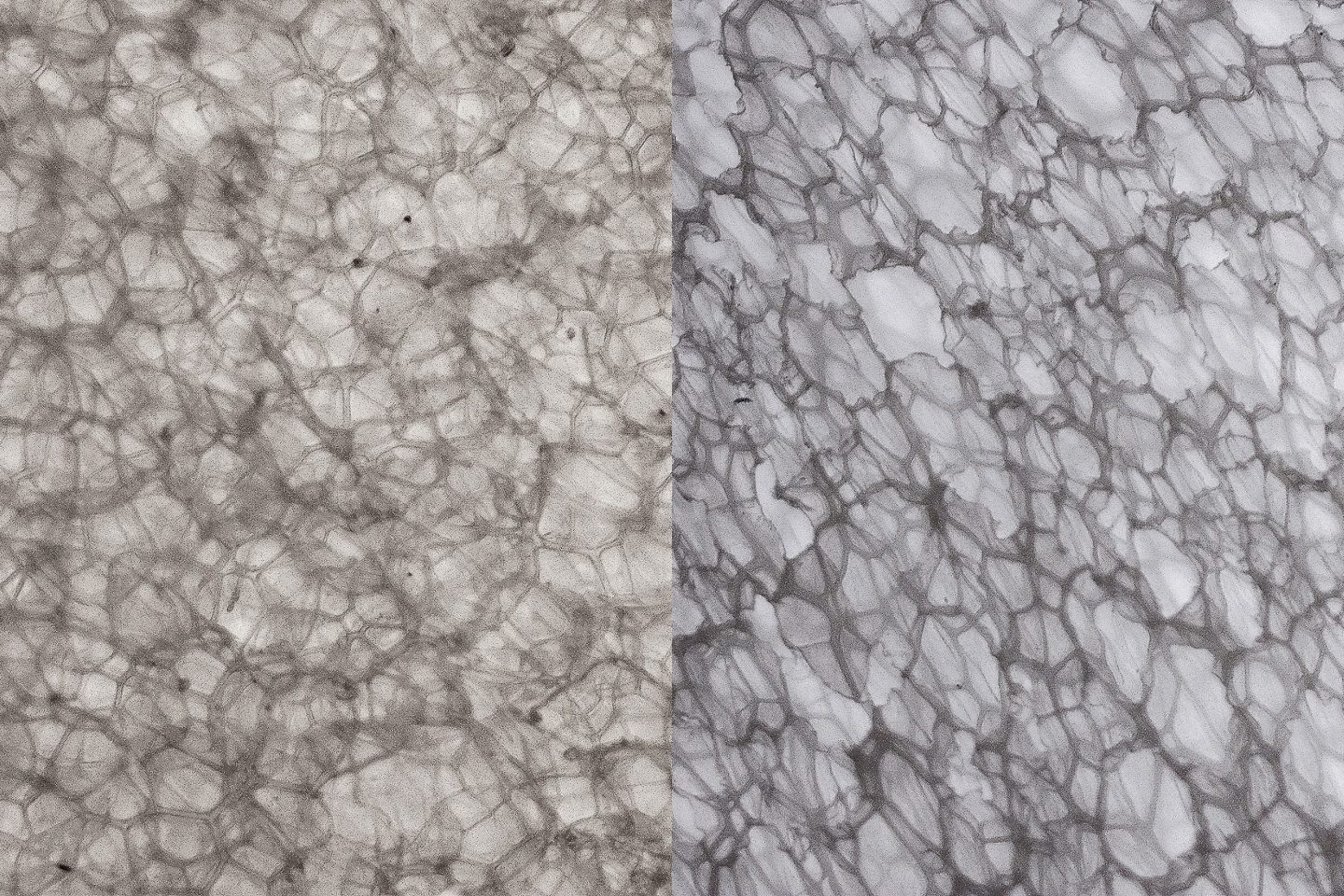
As you can see, the ZoomX in the Vomero 18 is denser and therefore heavier, while the Alphafly 3's foam is airier and more lightweight. And on top of that, the ZoomX on the left is made from TPE, while the one on the right is made from Pebax.
In the last two years, we’ve seen a clear trend of brands keeping the same foam name while using wildly different formulas. Puma’s Nitro can be TPEE, PEBA, or A-TPU, and New Balance’s Fresh Foam X follows the same pattern mixing EVA and PEBA. So we better get used to this...
Why investing in premium foams can be worthwhile
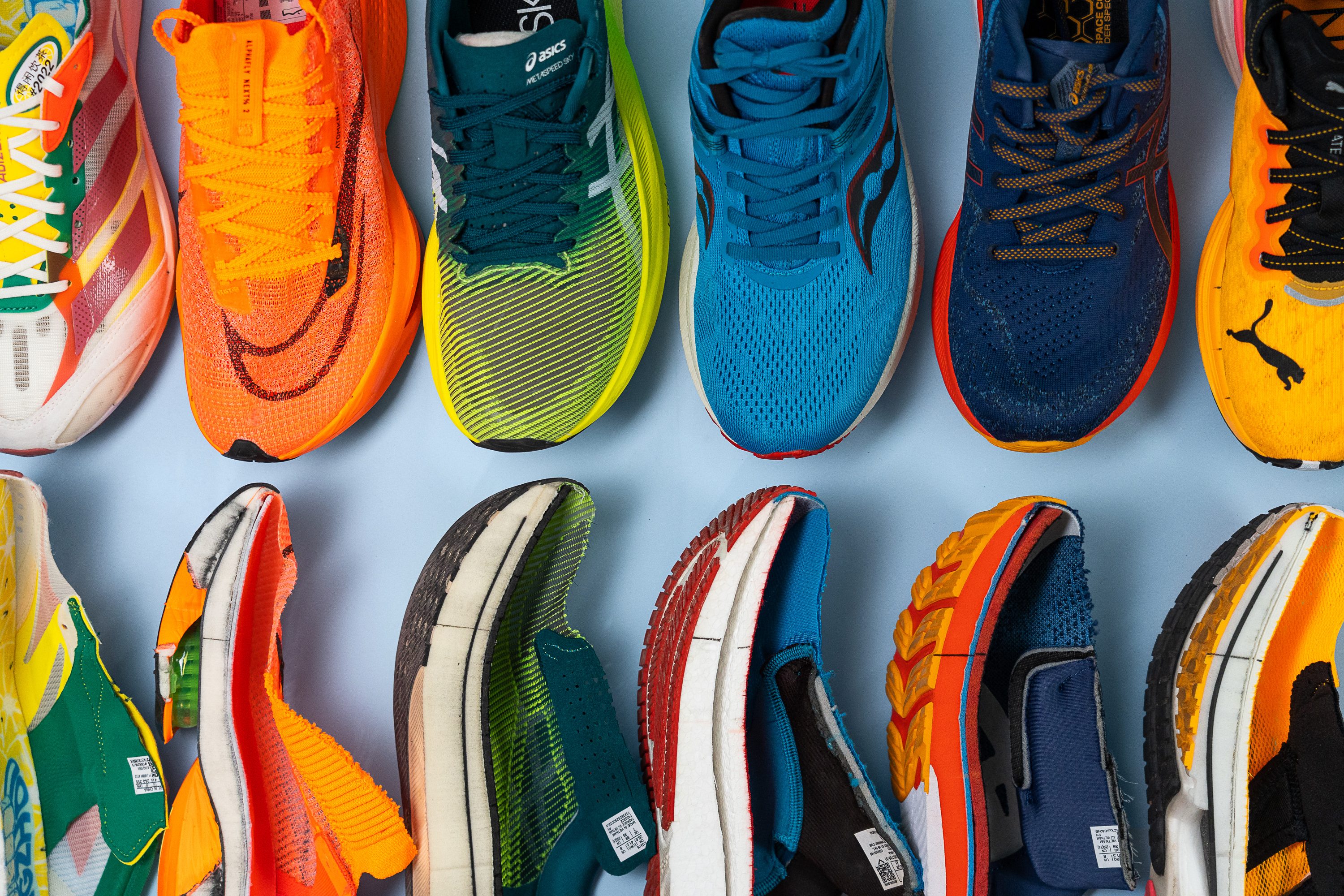
While you may think that it’s all about energy return and faster paces, it isn’t. Many elite athletes have praised the so-called superfoams for its ability to avoid DOMS and muscular fatigue the days after a big workout or race. And for how they allow every runner to increase mileage, lowering joint pain and injury risk.
So if you run a moderate amount of kilometers, like 40 or 50 a week, you won’t notice a big difference between ZoomX or React, for example. But if you are into high mileage—which is almost a lifestyle—and you run more than 100 kilometers a week, is a blessing.
So think of it this way. If a session on your PT costs you between $50 and $150, only a single session makes up the difference between a Nike Pegasus 41 and a Nike Vomero Plus, which on top of being a total leg-saver, is also faster and has more energy return. However, these shoes should not be seen as a substitute for PT sessions by any means!
The science behind supercritical foams
It’s likely that you’ve heard, not only in this guide, but also in many other running-related websites, about supercritical foams, or just the “supercritical” word. And undoubtedly, the word sounds really fancy and high-tech, so it’s no wonder why brands love to say it when their foams have this technology. Let’s explain the thing with an EVA example:
A supercritical EVA is just a plain-and-regular EVA foam that was pumped with a supercritical agent—usually nitrogen or CO2—in order to improve two main characteristics: weight and energy return.
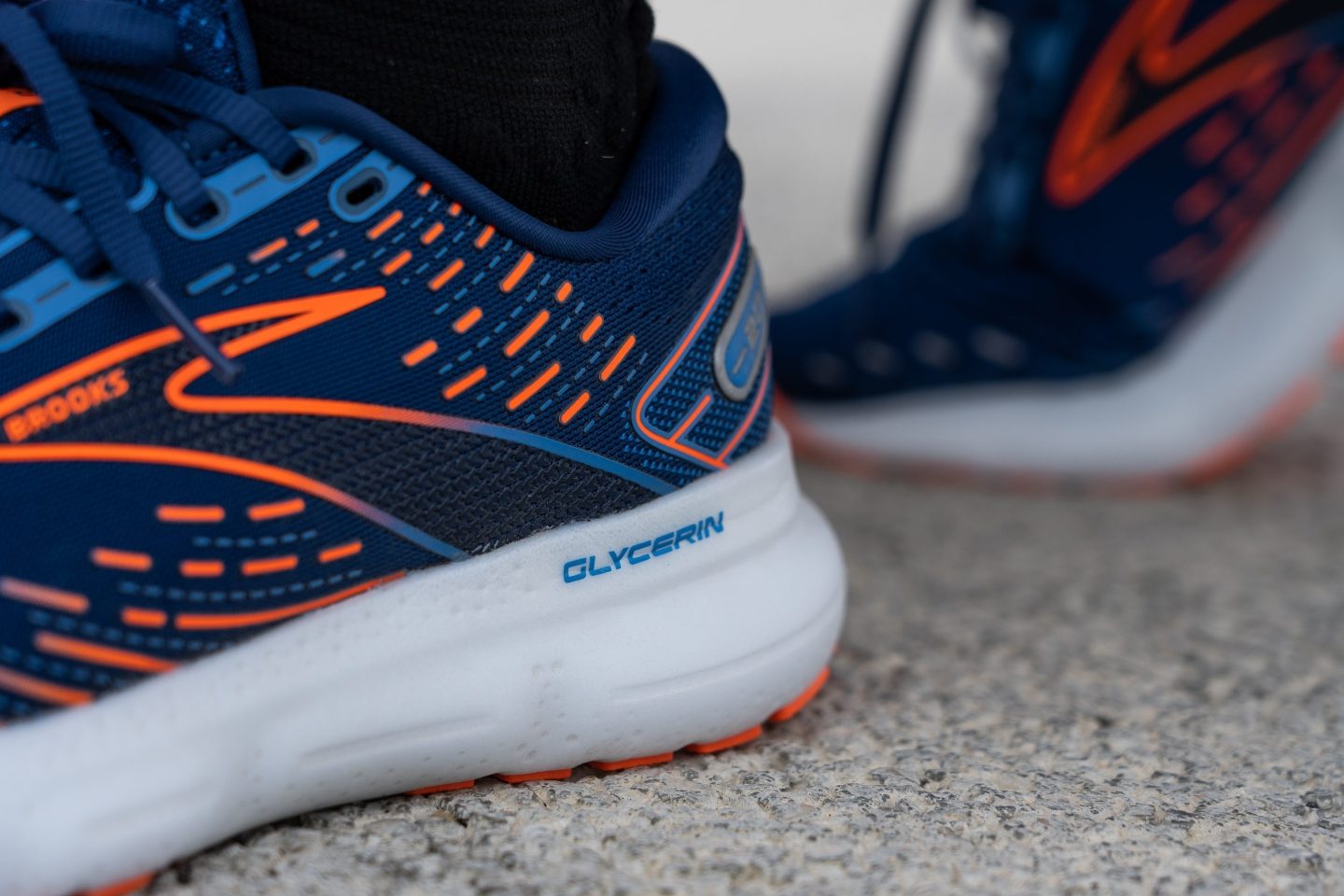
This process involves injecting the gas, always in supercritical liquid state, when the foam is forming in the mold. The result is a foam that provides a more comfortable and efficient ride, as it offers better cushioning and energy return compared to regular foams, plus the added benefit of reduced weight, as there is less foam and more gas.
For example, let’s compare the energy return of two EVA-based foams from the same brand:
- Hoka Mach 6 (supercritical EVA): 65.4%
- Hoka Clifton 10 (CMEVA): 52.3%
Of course, we can't wrap up here without providing a clear explanation of what a supercritical gas is, right? Well, it is a substance in a state where it's neither a liquid nor a gas. It may sound weird, but it's real. This is because the nitrogen or CO2 in a supercritical state has the properties of a gas, but the density of a liquid, allowing it to be pumped into the mold along with the foam.
By the way, this unique state occurs when a gas is subjected to extremely high pressure and temperature conditions, causing its properties to change. And if you're curious to see what it looks like, check out this video of CO2, the gas used by Skechers to improve their midsoles.
Why premium midsoles are worth it for all runners
"Why do you run in Vaporflys if you're slow?" I can't count how many times I've come across this situation with friends and colleagues. And it's truly frustrating because virtually everyone can enjoy the advantages of a high-performance shoe in various ways.
While it might not be as crucial for a sub-5-hour marathoner to shave a few minutes off their PB compared to a sub-3-hour runner, the primary benefits of advanced running shoes can be appreciated by all: your pace will likely improve, and you'll definitely recover faster after a race or a hard, punishing 22-miler.
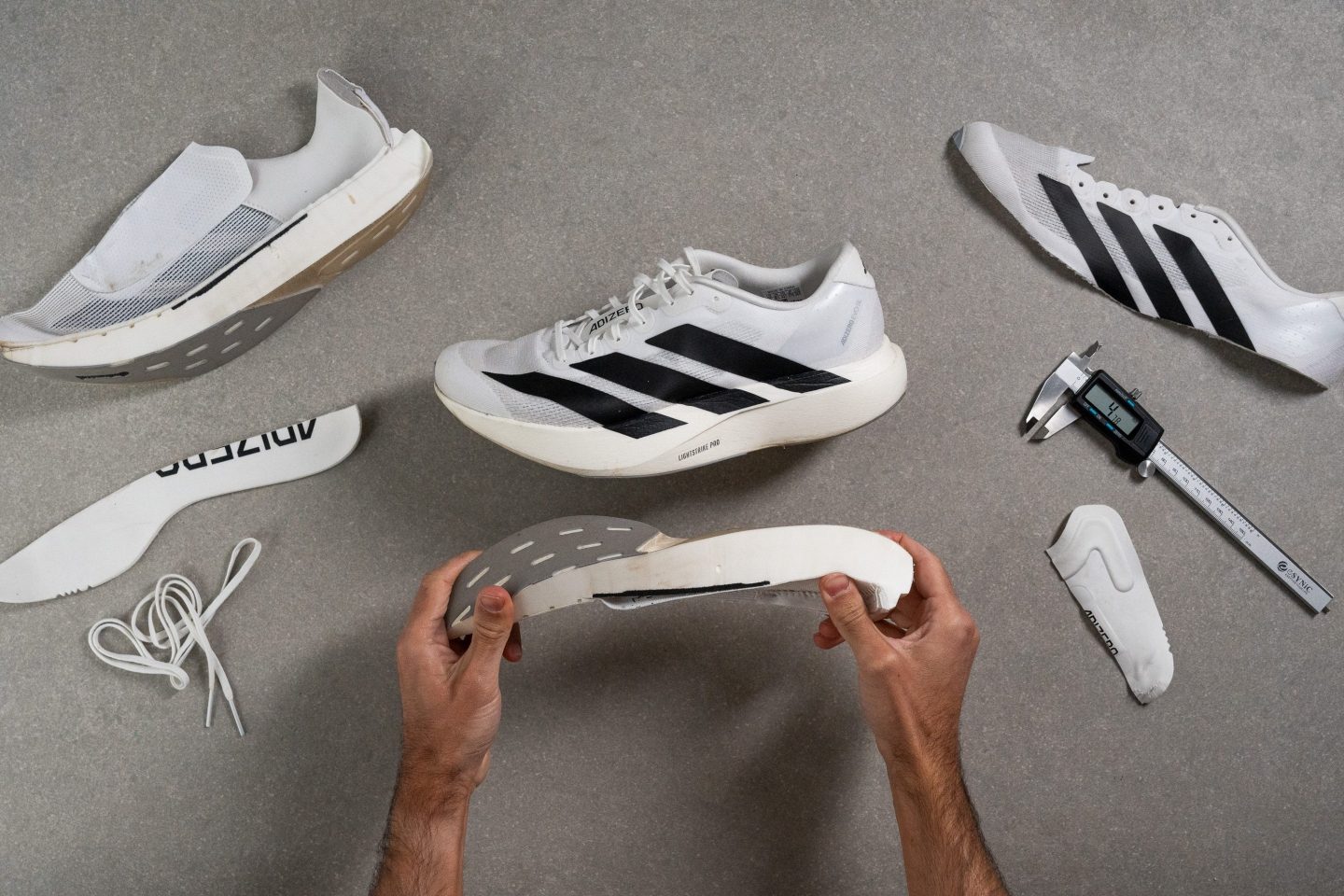
I say "likely" because not everyone experiences a faster pace with high-performance shoes. In fact, some slower runners may find their performance worsened by these shoes. A recent study focused on slower speeds revealed that a small fraction of participants (5 out of 16) actually ran slower in supershoes. However, even in those cases, the benefits of faster recovery after a race outweigh the minimal decline in performance. Who wants to go down the stairs backward the day after the marathon?
How long do running shoe foams last?
The longevity of running shoe foams depends on several factors:
- The foam itself: Some EVA and TPU foams last like... forever, while others like PEBA only have a limited peak-bounce window of 100 or 200 miles.
- Runner's weight: Heavier individuals place greater demands on the foam, causing it to wear out faster than expected.
- Pace: Similar to weight, a faster pace requires more work from the foam, whether due to increased cadence or stride length… or both.
- Temperature: Mild temperatures are ideal for foams to prevent excessive wear. Running in extreme cold or heat can cause the foam to wear out sooner.
- Runner's preference: Some may consider a foam "dead" once it no longer delivers peak performance, while others may not notice a difference and continue to use the shoe beyond 1000 km without issues.
Generally, premium foams can maintain their performance for up to 300 miles, although results may vary depending on weight, pace, and surface. Most of these foams, however, lose their "magic" within 100-200 miles and then continue to perform at a satisfactory level for training purposes.
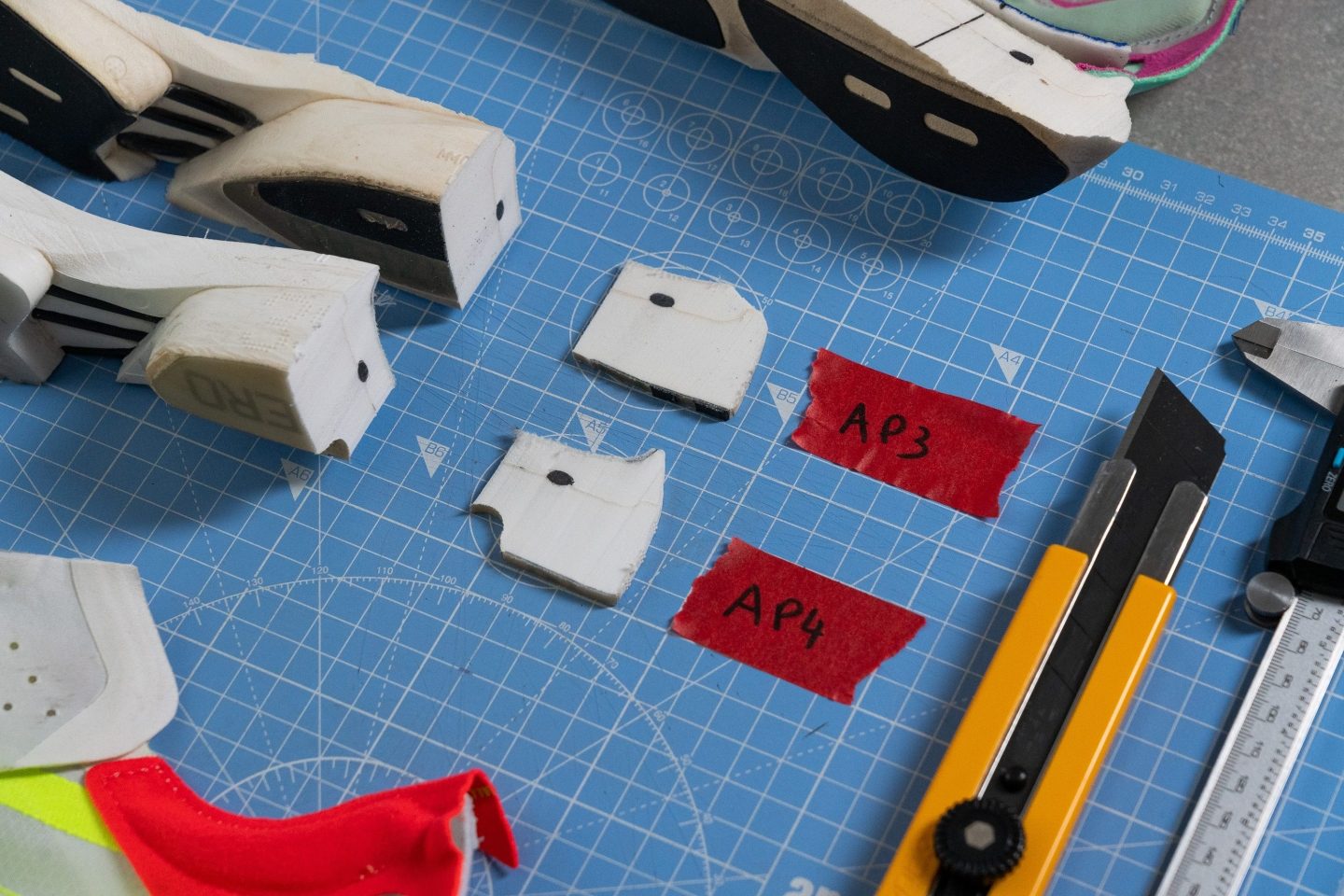
In 2023, a study conducted by Victor Rodrigo-Carranza highlighted a clear advantage of using PEBA over EVA for running economy. Yet, after 450 km of use, the performance of PEBA and EVA shoes became nearly indistinguishable for them.
We were skeptical about PEBA wearing out so fast. Then, in 2024, a fantastic study by Geoffrey T. Burns and Dustin P. Joubert presented contrary evidence—supporting the idea that PEBA foams maintain their high-performance characteristics even after extensive use.
On the other hand, we still believe it's best to avoid racing in premium foams with over 200 km of usage, as the risk may outweigh the benefits.
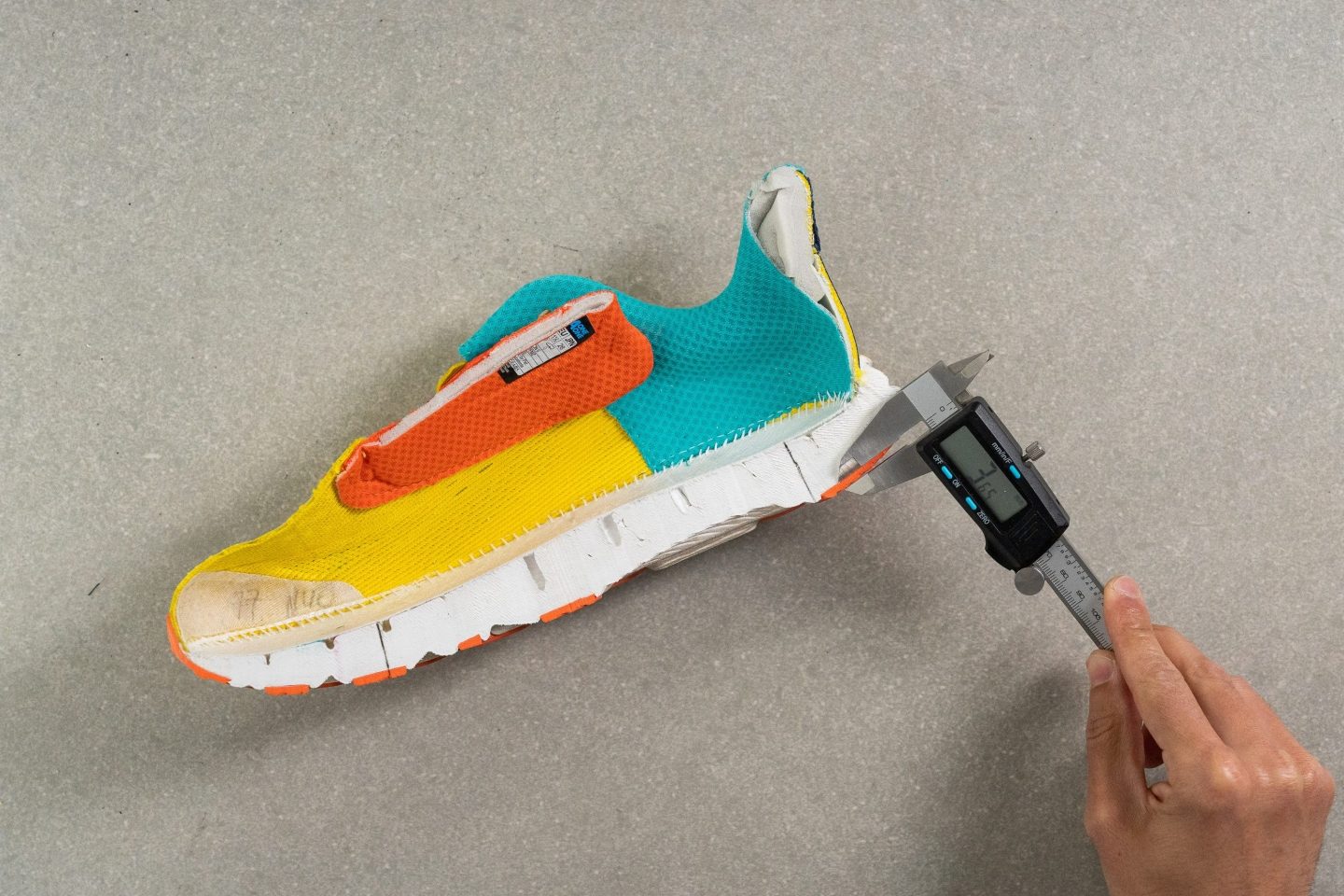
To enhance durability for both standard and premium foams, choose shoes with thicker rubber and less exposed midsoles—at the expense of weight. Additionally, you can consult our comprehensive lab tests, which detail the thickness and hardness of the outsole's rubber.
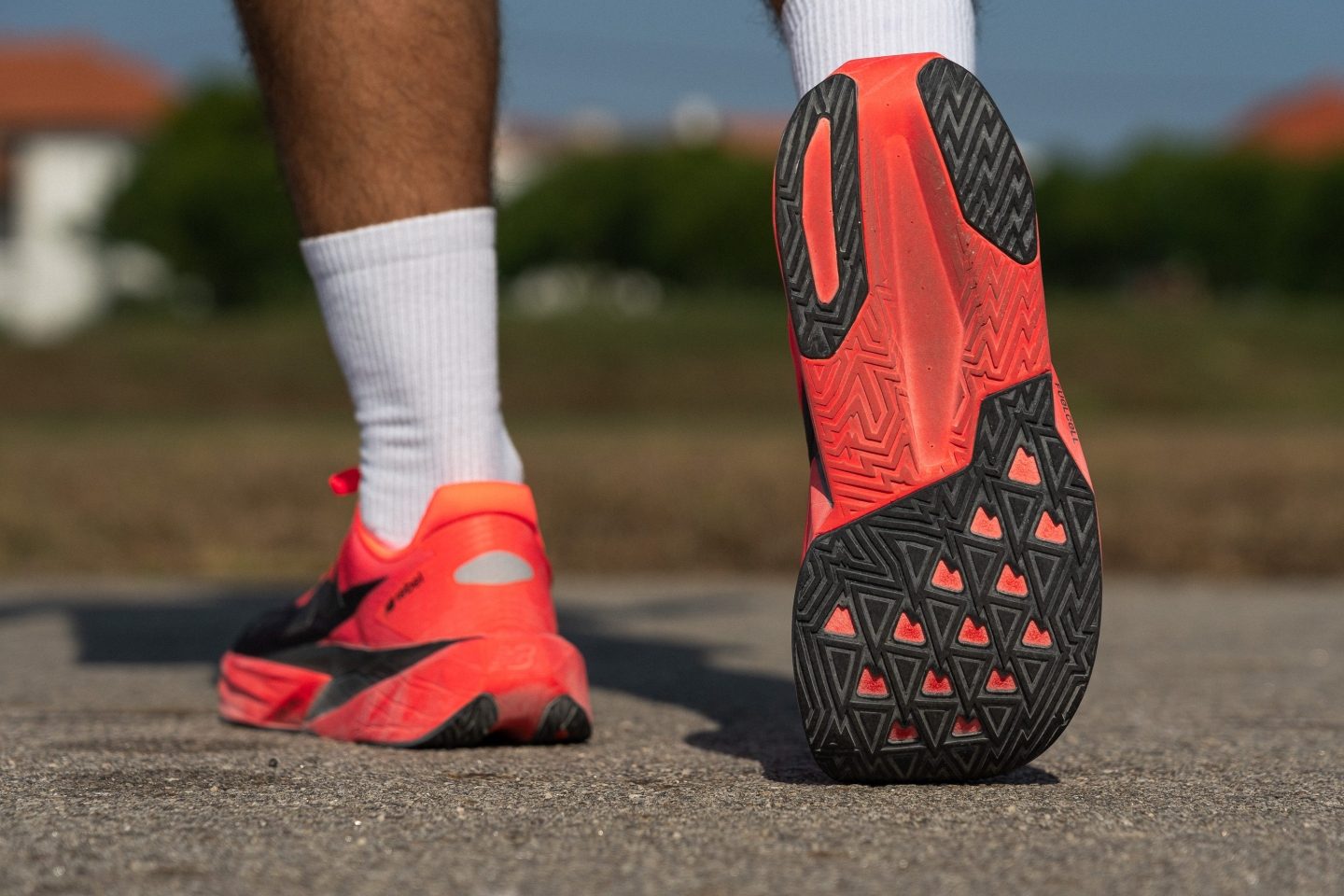

When a premium midsole isn't really premium: Encapsulated foams
Brands adore—and primarily focus on—selling shoes, plain and simple. High-end foams like ZoomX or Lightstrike Pro serve as fantastic marketing tools, drawing in buyers. However, these premium foams are costly to produce, making it challenging to incorporate them into more affordable shoes. This is where encapsulated premium foams come into play.
A running shoe featuring encapsulated premium foam does contain that top-tier material, but it's encased within a less expensive and typically firmer EVA foam. Notable examples include the Zoom Fly 5 (Recycled ZoomX + SR-02) and the Adizero SL (Lightstrike Pro + Lightstrike). In both cases, the so-called "carrier foam" adds durability, but the overall ride falls short compared to a genuine premium foam shoe.
The issue arises when, as with the ASICS Magic Speed 4, brands prominently display the premium foam logo, creating the illusion that the entire shoe is made from that material. Mmm… nope!
What you see: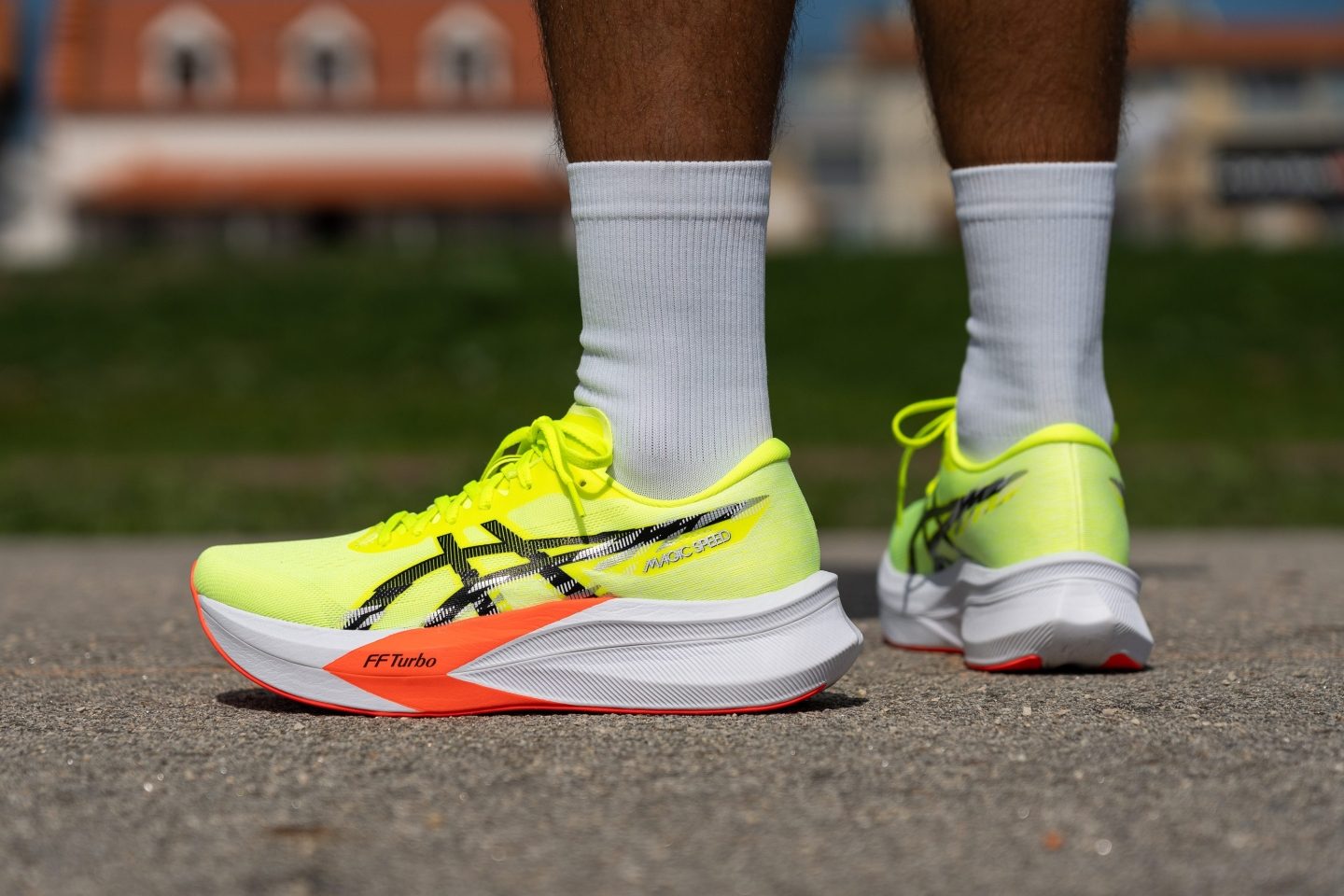
What you get—only a small piece of FF Turbo:
Other brands, like Topo, choose to disclose the whole truth even in their official product page, which we truly appreciate. The Topo Specter is another example of encapsulated foams, where Topo places the yellow, pellet-based Pebax-powered foam—similar to PWRRUN PB—inside an EVA frame to protect it and reduce manufacturing costs.
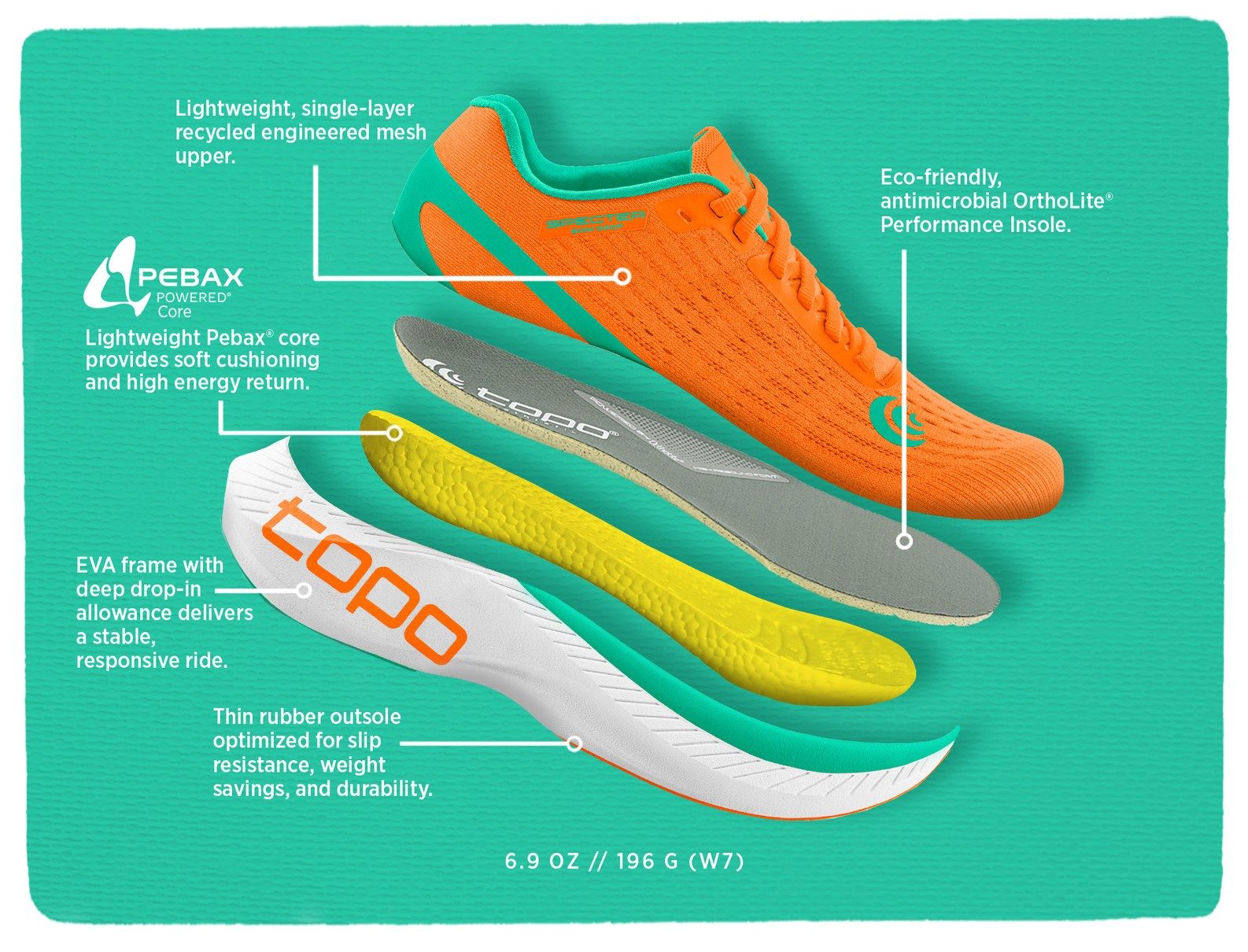
Techniques for midsole manufacturing
Despite having explored our extensive guide, you might still be curious about how midsoles are crafted. With very few exceptions, almost all midsoles are produced using one of two predominant methods: compression molding or injection molding.
Compression Molding
Compression molding is a cost-effective and time-honored technique extensively utilized in the running shoe industry. This process begins by preheating plastic or rubber materials, then placing them into a heated mold. Subjected to high pressure, the material conforms to the mold’s shape as it cools and solidifies.
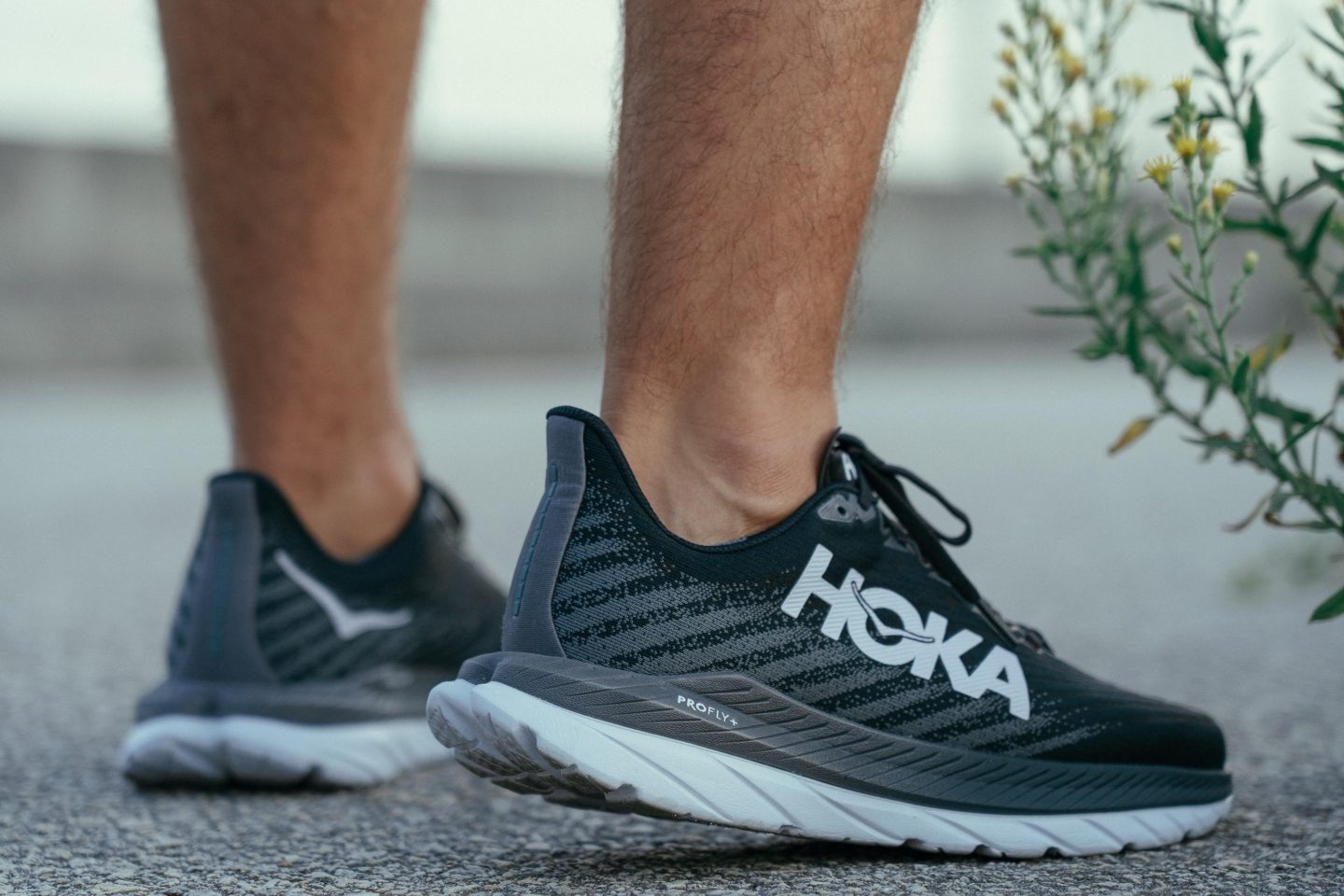
This method is particularly effective for combining various foams or materials into a single midsole component. Moreover, this technology grants precise control over the density and softness of materials such as EVA, TPU and PEBA.
Injection Molding
Conversely, injection molding involves injecting heated material directly into a smaller mold with a blowing agent, where it cools and takes its final form. This method is renowned for its energy efficiency and is commonly used to produce lighter running shoes, enabling the creation of less dense, airy midsoles.
Injection molding offers faster production cycles compared to compression molding, enhancing manufacturing times, and is the preferred method for rapid production and softer midsoles, whereas CM excels in delivering superior detail and quality.
Identifying a Compression Molded Midsole
If you're curious about whether the midsole of your running shoes was crafted using the compression molding technique, check for tiny dots or intricate shapes, which are typically absent in injection molded midsoles. Let's consider two examples.
Take the New Balance More v4. Notice the multiple tiny dots emerging from the midsole. These dots are a clear indication that the midsole was created by compressing material within a mold.
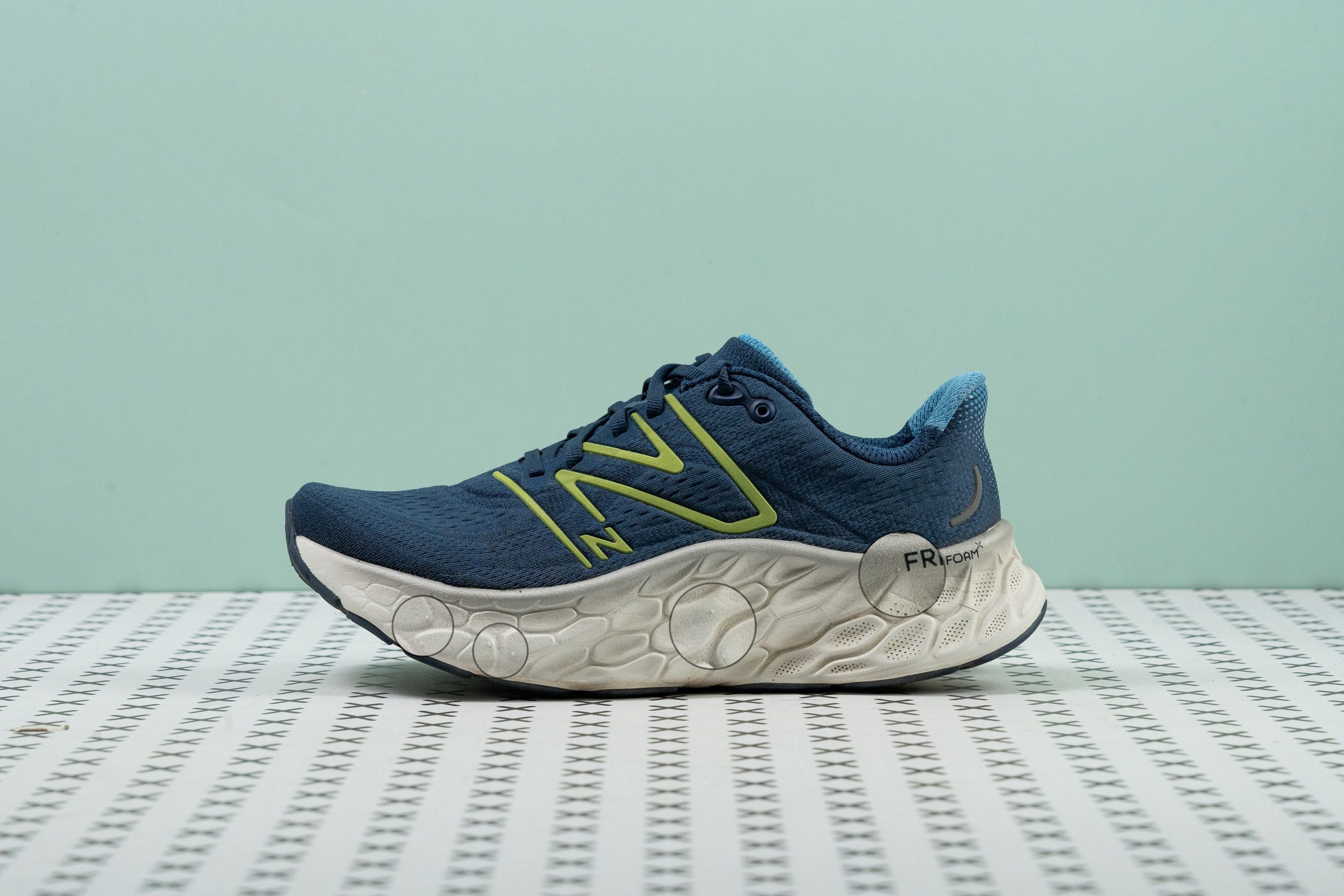
Conversely, not all compression molded foams show these distinct minidots. However, the complex shapes of their midsoles suggest a molding process.
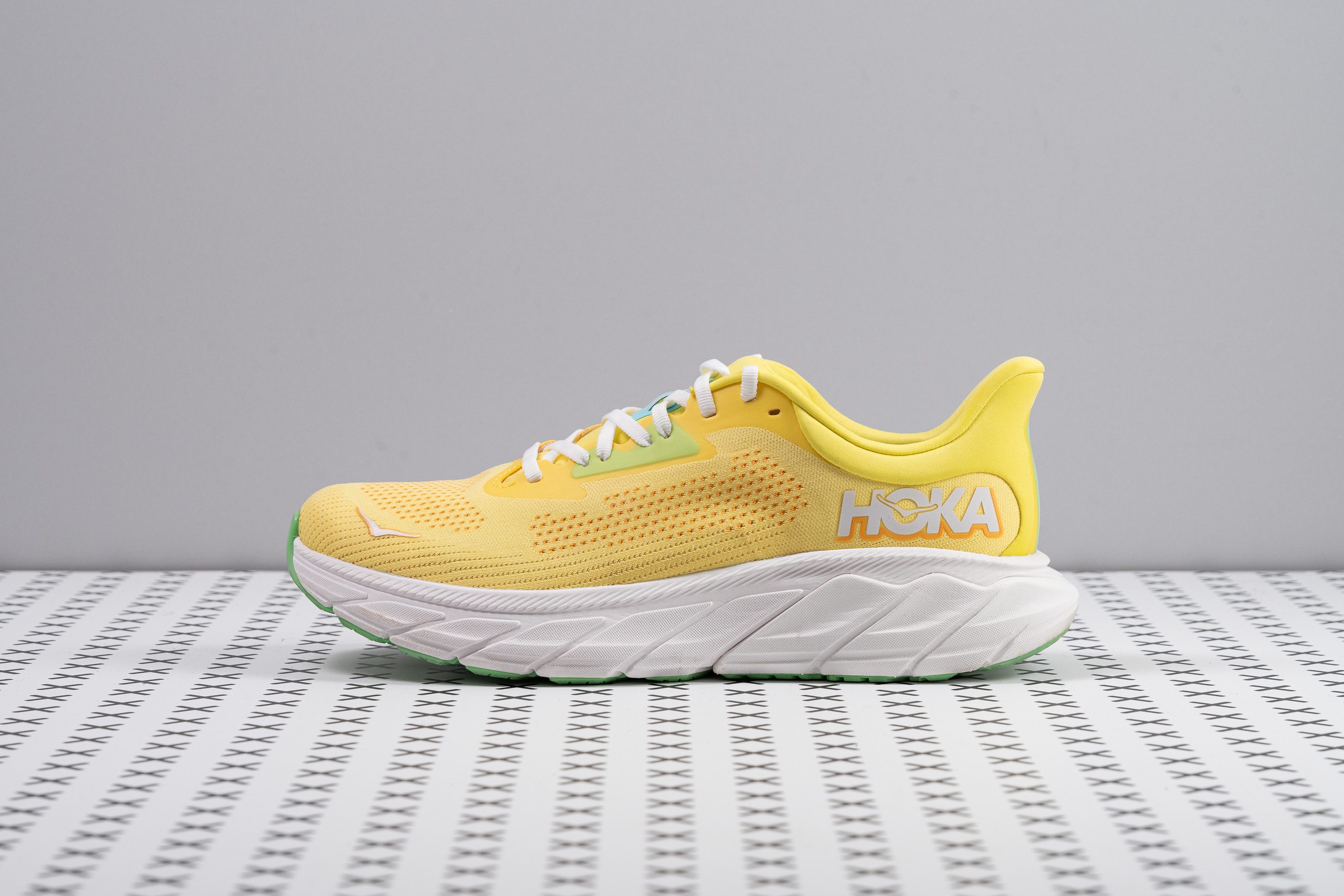
A prime example is the Hoka Arahi 7, where the elaborate midsole design clearly points to the use of a compression molding technique.
Non-compression molded midsoles
In the pursuit of lighter running shoes, Adidas introduced a groundbreaking innovation in 2023 with its "Lightstrike Pro Evo" midsole in the Adizero Adios Pro Evo 1. This midsole is produced using a revolutionary technique distinct from the compression molding and gas-inflation methods we described earlier.
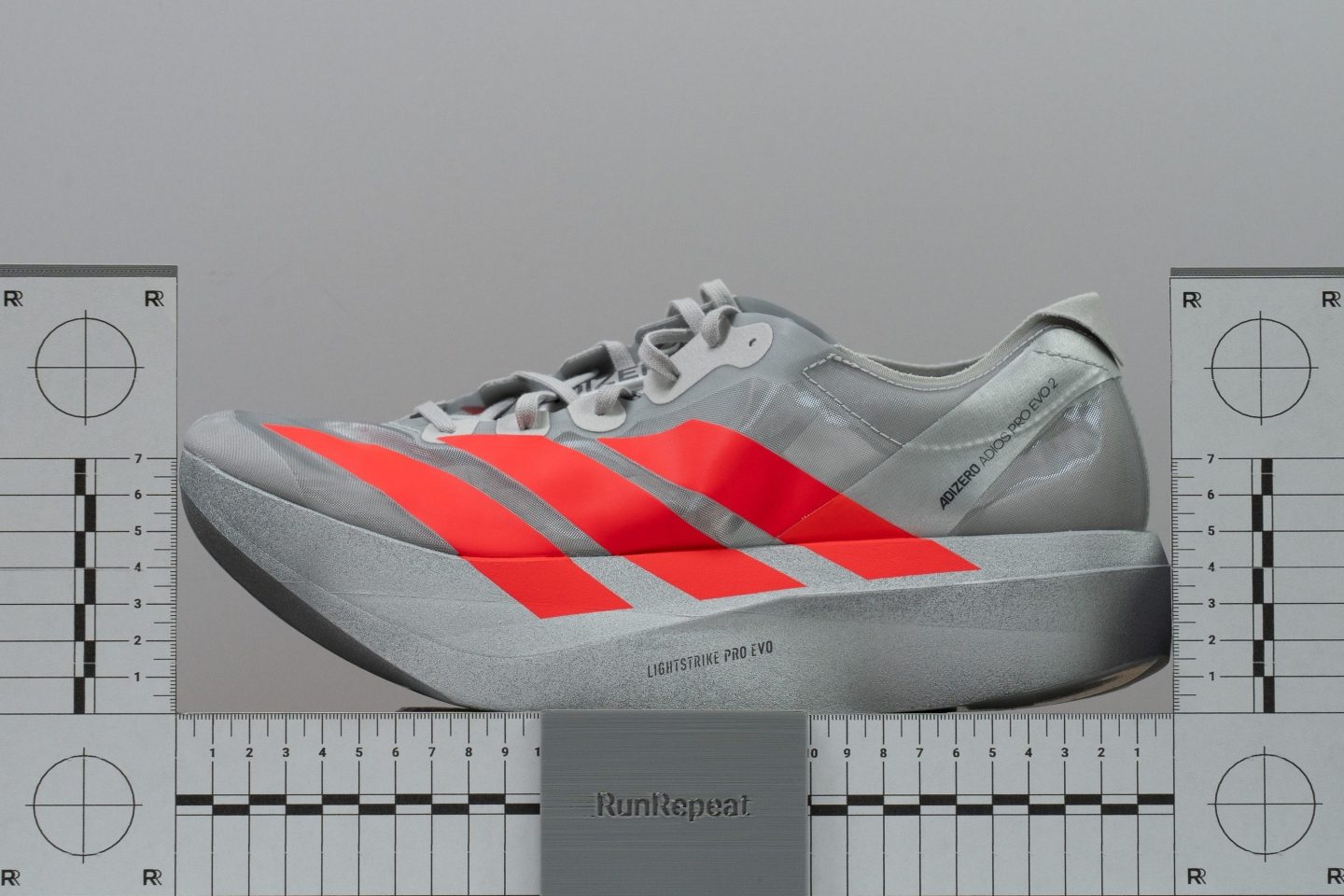
Instead of compressing a midsole in a mold or inflating it with nitrogen or CO2 to achieve its final shape, Adidas drew inspiration from other industries and took a different approach. They manufactured massive blocks of Lightstrike Pro Evo material and precisely cut them into the final shape using CNC machines, crafting each midsole individually.
What are the advantages of this technique? There are two major benefits. First, it eliminates the additional weight associated with compression-molded midsoles. Second, it avoids the inconsistencies of injection molding, where the edges of the midsole become denser while the center is lighter due to gas action. This method ensures uniform density and consistency throughout the midsole, resulting in a remarkably lightweight construction—lighter than anything we've encountered before!
However, this innovative process comes with a significant drawback: cost. Manufacturing running shoes this way is exceptionally expensive, which is why this method is currently reserved for the so-called hypershoes.
The future of midsoles
Running shoe geeks are now wondering when the next big leap will occur. However, it doesn't seem like it will happen anytime soon.
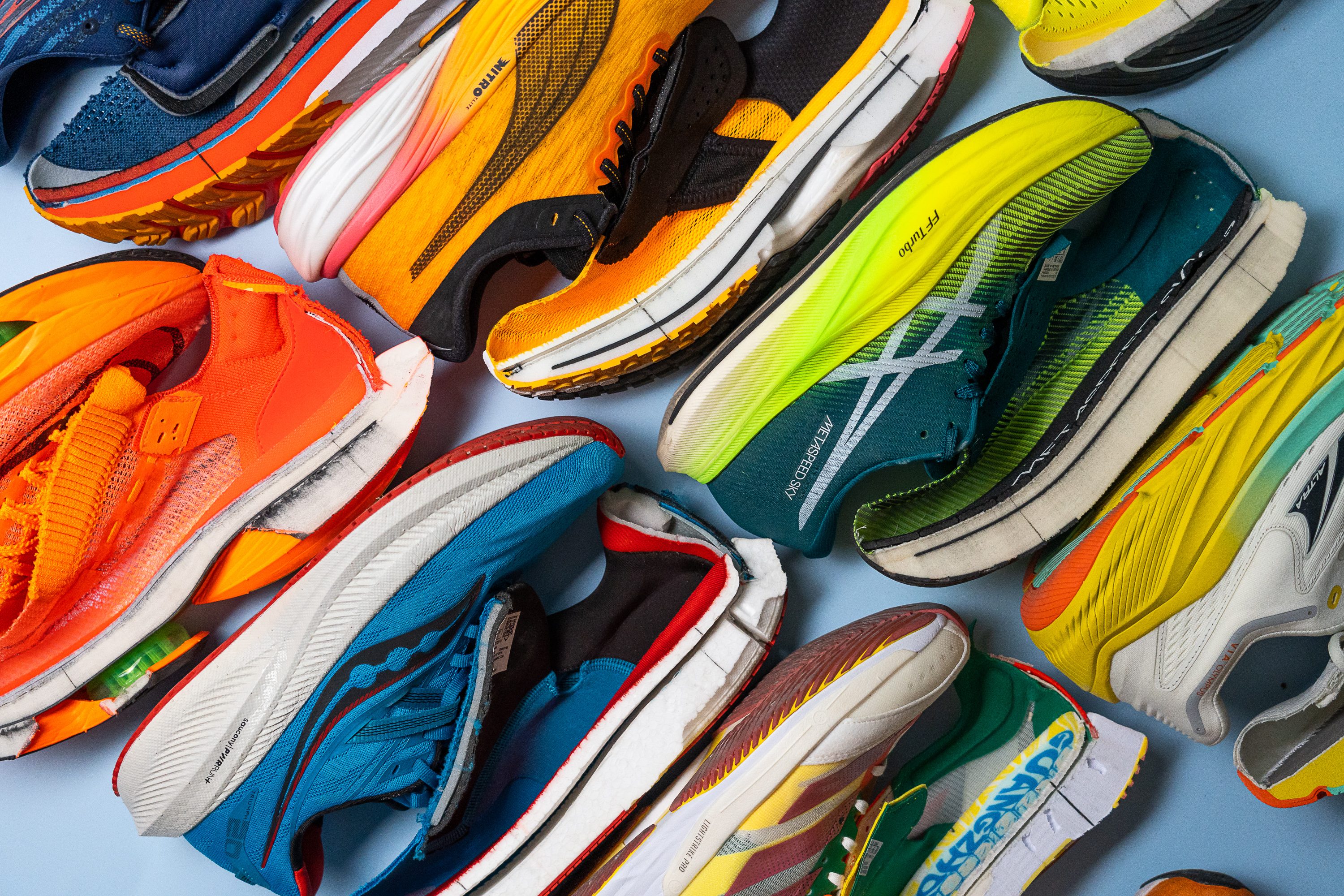
In the modern running world, after the introduction of EVA midsoles, we witnessed two major advancements: Boost (TPU) in 2013 and ZoomX (Pebax) in 2017. Boost continues to sell shoes at a steady pace although with a rebranded update as Light Boost, while ZoomX has largely remained on top, with no other foam surpassing it until 2023 in terms of performance.
However, since 2023 there have been some interesting improvements. Lightstrike Pro Evo revolutionized the industry by adopting a first-of-its-kind manufacturing process with CNC machines, resulting in a lighter midsole. Meanwhile, Saucony, PUMA and Adidas transitioned to Aliphatic TPU, enhancing energy return and supposedly reducing foam fatigue compared to any other foam on the market.
At present, the maximum energy return hovers around 80% for best midsoles based on our lab testing. Coupled with the 40mm stack height limit and the restriction to a single carbon-fiber plate, a significant, ZoomX-like revolution under the World Athletics guidelines seems unlikely. However, brands will continue to push boundaries wherever possible, with the ASICS Metaspeed Ray and the Adidas Adizero Adios Pro Evo 1 serving as a prime examples, boasting a remarkable sub-5-oz weight.
Running shoe foams
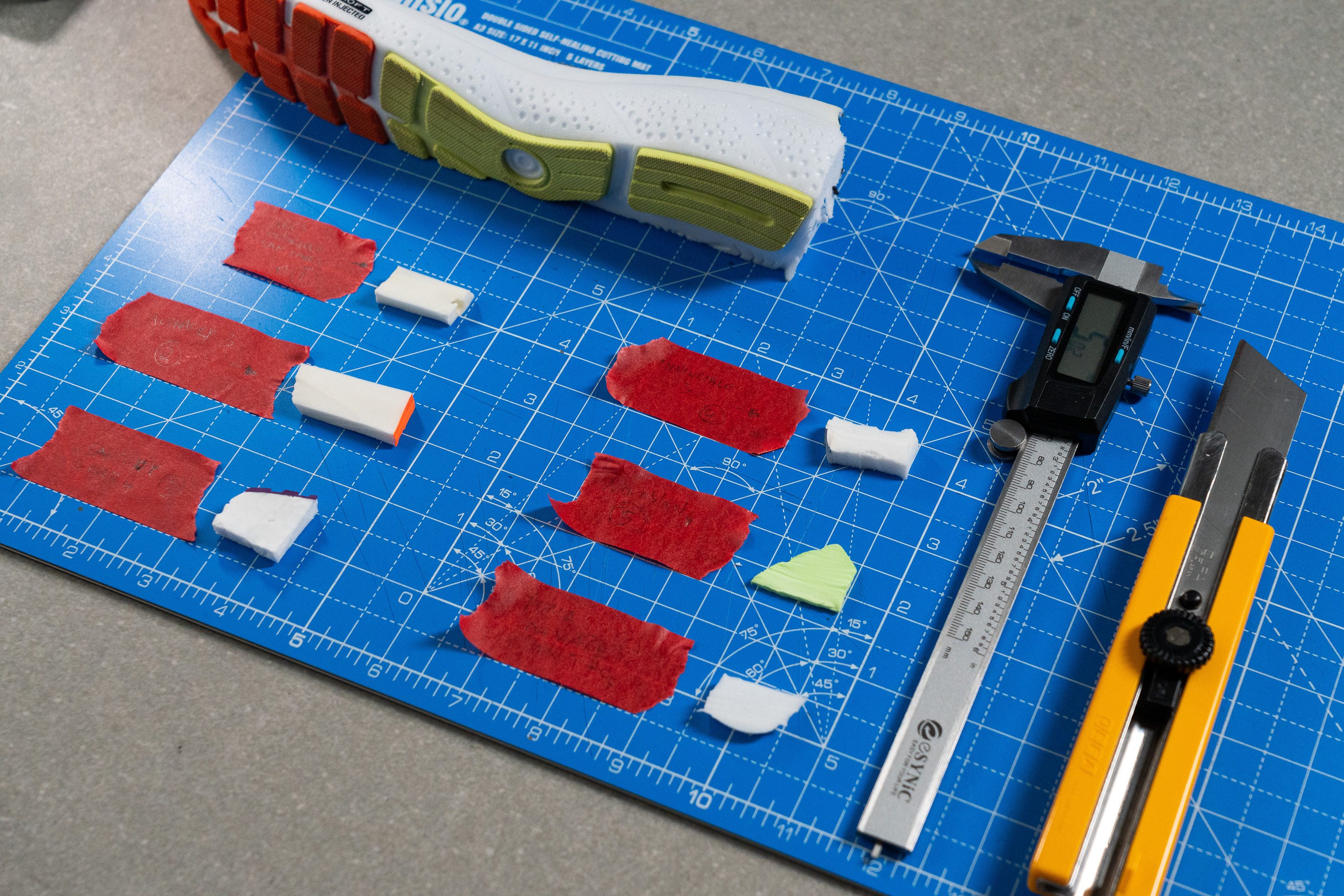
There are so many running shoe companies out there, so it basically would take forever to go over every type of foam used in shoes. This is especially true if we consider all the discontinued or basic foams, which make up 99% of the market and are just plain EVAs.
However, we still made a big effort to cover with detail as many foams as we could. We've dedicated entire sections to most of them, but we'll also just mention a few below. And we'll regularly update this guide!
Foam family cheatsheet
Here’s a quick cheatsheet that breaks down the main foam families found in modern running shoes.
| Foam Type | Chemical name | Energy return | Durability | Cost |
| A-TPU | Aliphatic TPU | High | High | High |
| PEBA | Polyether Block Amide | High | Mid | High |
| TPEE | Thermoplastic Polyester Elastomer | High | High | Mid |
| TPE | Thermoplastic Elastomer | Mid | Mid | Mid |
| TPU | Thermoplastic Polyurethane | Mid | High | Mid |
| PU | Polyurethane | Mid | High | Mid |
| POE | Polyolefin Elastomer | Mid | Mid | Mid |
| SC-EVA | Supercritical Ethylene Vinyl Acetate | Mid | Mid | Mid |
| EVA | Ethylene Vinyl Acetate | Low | High | Low |
Premium foams overview
And before diving into the detailed breakdown of each foam, we’ve also created two comprehensive tables covering nearly every foam on the market from the most popular brands.
| Brand | Foam |
| 361º | Quickflame (PEBA) |
| Adidas | Lightstrike Pro (TPEE / A-TPU) |
| Adidas | Lightstrike Pro Evo (TPEE) |
| Anta | NitroEdge (PEBA) |
| ASICS | FF Turbo (PEBA) |
| ASICS | FF Turbo+ (PEBA) |
| ASICS | FF Turbo² (A-TPU) |
| ASICS | FF Leap (A-TPU) |
| Brooks | DNA Gold (PEBA) |
| Decathlon | VFOAM (Pebax) / VFOAM PLUS (Pebax + EVA) |
| Diadora | ANIMA PBX (Pebax) |
| Hoka | Unnamed (PEBA) |
| Kiprun | VFoam (Pebax) |
| Kiprun | VFoam Plus (Pebax) |
| Li-Ning | BOOM (Pebax) |
| Mizuno | Enerzy Lite+ (PEBA) |
| Mizuno | Enerzy XP (PEBA / TPEE) |
| New Balance | FuelCell (PEBA) |
| Nike | ZoomX (Pebax / TPE) |
| On | Helion HF (Pebax) |
| PUMA | Nitro (PEBA / A-TPU) |
| PUMA | Nitro Elite (A-TPU) |
| Reebok | Floatride (Pebax) |
| Saucony | PWRRUN PB (Pebax) |
| Saucony | PWRRUN HG (Pebax) |
| Saucony | incrediRUN (A-TPU) |
| Topo | Pebax Powered (Pebax) |
Standard foams overview
| Brand | Foam |
| 361º | CQT (eTPU) |
| 361º | Quikfoam Lite (EVA) |
| 361º | Quikspring (EVA) |
| Adidas | Boost (TPU) |
| Adidas | Dreamstrike+ (Bio-based PEBA) |
| Adidas | Light Boost (TPU) |
| Adidas | Lightstrike (EVA / TPU) |
| Altra | EGO (EVA) |
| Altra | EGO PRO (TPE) |
| Altra | EGO MAX (EVA + TPU) |
| Altra | EGO PRO (EVA) |
| Altra | EGO P35 (POE) |
| ASICS | AmpliFoam / AmpliFoam+ (EVA) |
| ASICS | FF Blast / FF Blast+ (EVA + OBC) |
| ASICS | FF Blast MAX (POE) |
| ASICS | FlyteFoam (EVA) |
| Brooks | BioMoGo DNA (EVA) |
| Brooks | DNA Amp (TPU) |
| Brooks | DNA Loft (EVA) / DNA Flash (EVA) |
| Brooks | DNA Tuned (EVA) |
| Diadora | ANIMA / ANIMA N2 (EVA) |
| Hoka | ProFly (EVA) |
| Hoka | ProFly+ (EVA) |
| KEEN | QuantumFoamX (PEBA + EVA) |
| Kiprun | Kalensole (EVA) |
| Inov-8 | Powerflow Pro (EVA) |
| La Sportiva | XFlow (EVA) |
| La Sportiva | XFlow Speed (EVA) |
| La Sportiva | XFlow Endurance (eTPU + EVA) |
| Merrell | FloatPro Foam (EVA) |
| Merrell | Super Rebound Compound (EVA) |
| Mizuno | Enerzy (TPE) |
| Mizuno | Enerzy Core (TPE) |
| Mizuno | Enerzy Lite (Nylon) |
| Mizuno | Enerzy NXT (EVA / TPU) |
| Mizuno | U4ic / U4icX (EVA) |
| New Balance | Fresh Foam / Fresh Foam X (EVA / EVA + PEBA) |
| New Balance | FuelCell (TPU / EVA) |
| NNormal | EExpure (EVA) |
| Nike | Phylon / Cushlon / ComfiRide / SR-02 (EVA) |
| Nike | React / ReactX (TPE + EVA) |
| On | Helion (EVA + OBC) |
| PUMA | Nitro (TPEE) |
| PUMA | Profoam / Profoam Lite (EVA) |
| Reebok | FloatRide Energy (TPU / TPE) |
| Reebok | Floatride Fuel (EVA) |
| Salomon | Energy Foam (EVA + OBC) |
| Salomon | Energy Foam+ (PEBA + EVA) |
| Salomon | Energy Foam EVO (eTPU) |
| Salomon | EnergyCell / EnergyCell+ (EVA) |
| Salomon | optiFOAM (EVA + OBC) |
| Salomon | optiFOAM+ (PEBA + EVA) |
| Saucony | PWRRUN (EVA + TPU) |
| Saucony | PWRRUN+ (TPU) |
| Skechers | HyperBurst (EVA) |
| Skechers | HyperBurst ICE (EVA) |
| Skechers | HyperBurst PRO (TPU / TPEE) |
| Topo | ZipFoam (EVA + TPU) |
| Under Armour | Charged (EVA) |
| Under Armour | FLOW (EVA) |
| Under Armour | HOVR (EVA + OBC) |
| Under Armour | HOVR+ (TPU) |
Premium foams
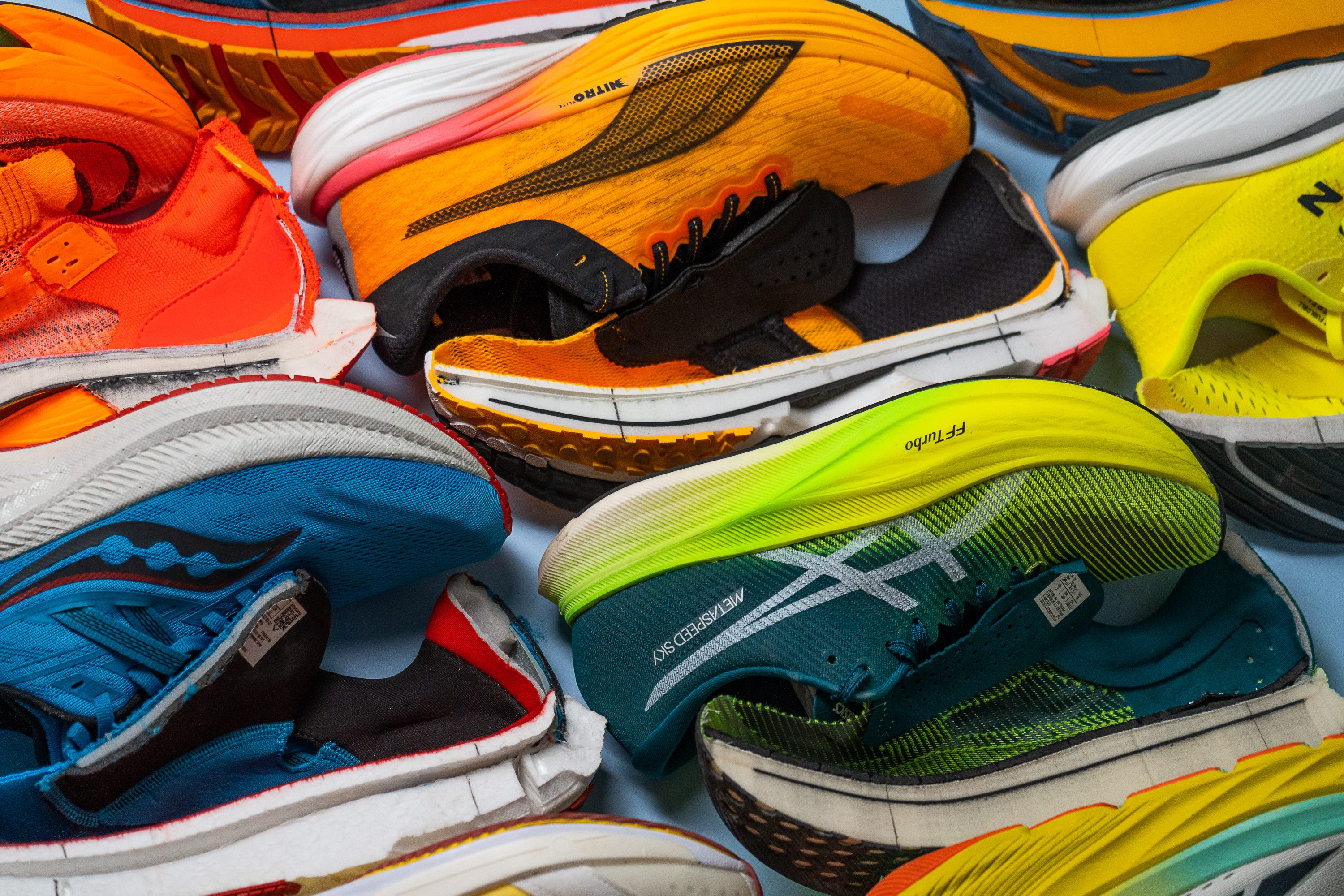
The world of running shoes was transformed with the introduction of Nike's ZoomX foam in 2017, even though it had already been worn by some pro athletes—Kipchoge, Rupp, Lilesa— throughout 2016. It was the first true super foam, boasting an incredible energy return, and Nike backed it with much-needed scientific evidence. And contrary to what many believe, ZoomX it's not a Nike invention, but product called ZOTEK® PEBA from the UK-based company Zotefoams.
The latest high-performance running shoe foams have a unique chemical structure, consisting of numerous hydrogen bonds between the polymer strands. This special structure enhances energy return and bounce, as shown in this 2018 study. The findings revealed that Boost foam delivered a very solid energy return, while the ZoomX-equipped Vaporfly prototype—named Vaporfly 3% in that moment—provided a huge enhancement over Boost. Another two studies in 2023 and 2024 confirmed the improvements of PEBA when compared to EVA, especially when paired with carbon plates.
And now, aliphatic TPU foams like Saucony's incrediRUN, ASICS FF Leap or PUMA Nitro Elite are slightly edging out PEBA in most performance metrics, quickly becoming the go-to superfoam for the top-tier running shoes on the market.
So, what sets a premium foam apart from the crowd? Superior midsoles with this foam have 3 clear advantages. They...
- offer an impressive energy return that goes over 70% in our energy return test;
- possess fantastic leg-saving features with superior shock absorption. Put simply: logging a 20-miler in one of these shoes feels more like a 10 or 15-miler in your reasonably-good daily trainer;
- are usually super fun to ride!
However, there are a couple of drawbacks to consider:
- Durability may take a hit, because these premium foams tend not to last as long as their standard counterparts. However, that's not always the case, as TPEE and A-TPU foams are really durable!
- Purchasing a pair of shoes with premium foam will come with a premium price tag. Most of these shoes, even with discounts, often hover well above the $100 mark, sometimes soaring as high as $200, $250, or even $300.
But let's get back to it. As we mentioned before, the ZoomX foam changed everything. This innovation gave Nike a two-year advantage over its competitors—a groundbreaking edge in the intensely competitive world of running shoes. Finally, though, many brands caught up with the Oregon-based company, resulting in a wide range of premium foams available for you.
Interestingly, while carbon-fiber plates are often hailed as the ultimate performance-enhancing feature, most of the improvement actually comes from the foam. This is supported by various scientific publications, such as those from 2019 and 2021, where the only shoes that matched the Vaporfly's performance had what we consider "premium foams." In contrast, others like the SC Elite v3 and Brooks Hyperion Elite 4 lagged significantly behind the best.
Now, let’s talk about ‘em, beginning with the one that started it all.
Nike ZoomX (Pebax / TPE)
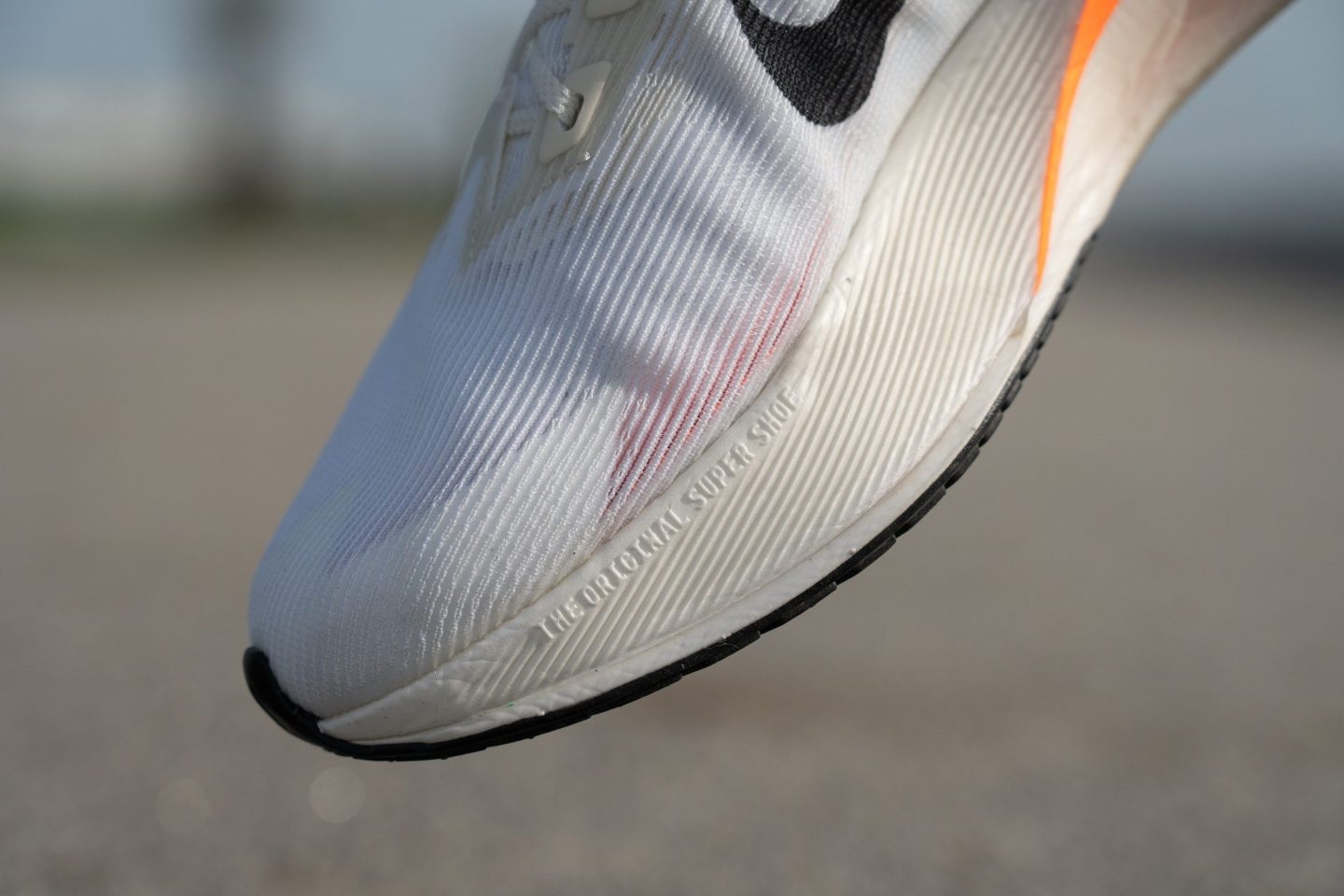
We have to credit Nike and say that they made the original supershoe with the first superfoam. Period.
ZoomX it’s a foam made from Pebax. And as you are going to read this word a lot, let’s clarify this once and for all: Pebax is a trademarked and patented variation of PEBA (Polyether Block Amide) invented by Arkema, an industry-leading French company.
It’s a class of thermoplastic elastomers characterized by their alternating hard and soft segments, which give them a unique combination of flexibility, resilience, and mechanical strength. In other words: it’s bouncy, soft and light at the same time!
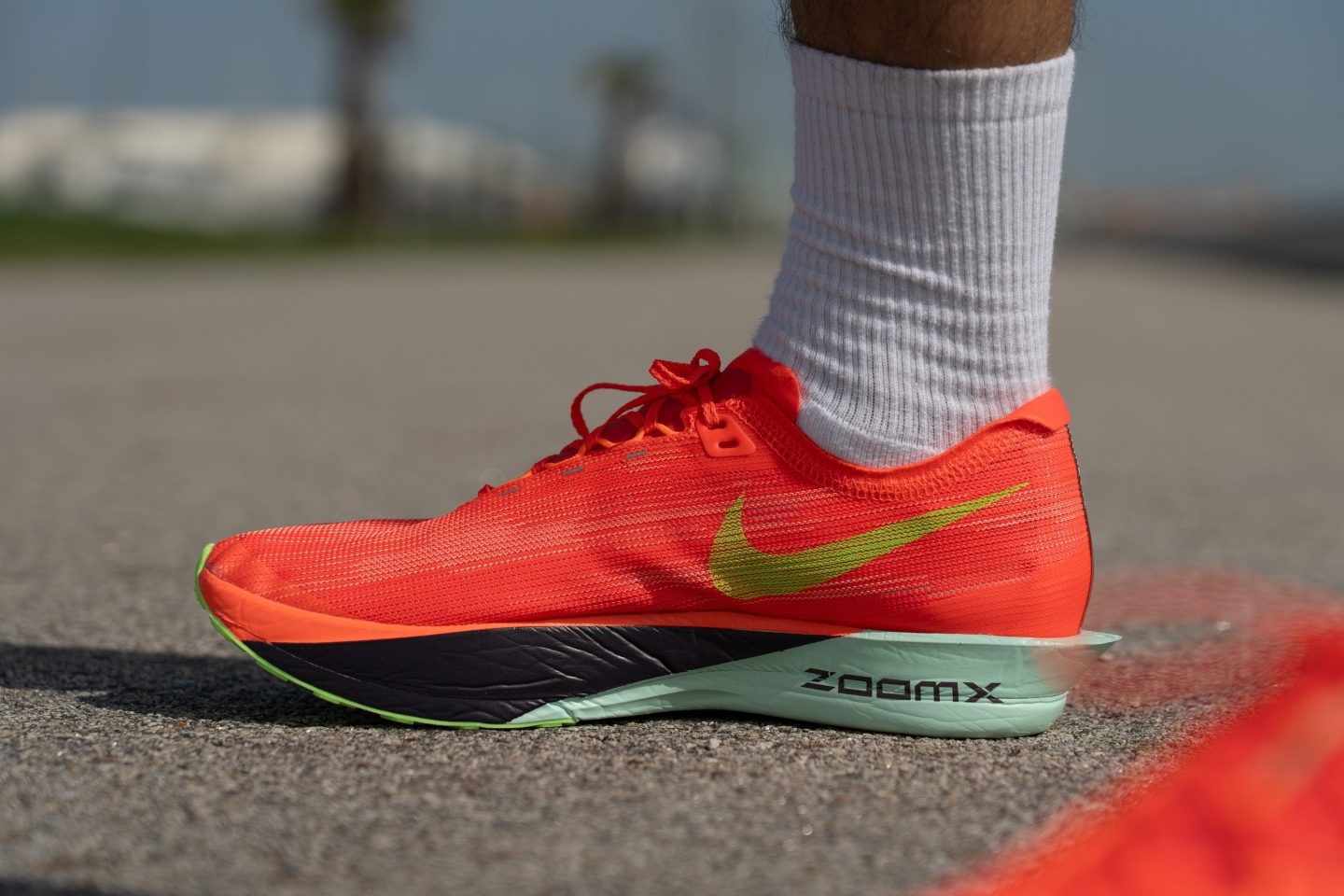
Over the years, running shoe geeks (like us) have noted that ZoomX has undergone significant changes. While we might not cover every detail, we can distinguish between various ZoomX blends:
- From 2017 to 2021, ZoomX was incredibly soft in the first Vaporflys, giving an almost magical feel, but it suffered from low durability—which was a constant complaint from users given the cost of these shoes. The foam developed creases quickly, and after about 200 or 300 km, it suddenly felt "dead." Other running shoes featuring this 1.0 version of ZoomX included the Nike Air Zoom Alphafly Next%, Nike ZoomX Invincible Run, and Nike Pegasus Turbo 2.
- In 2021, Nike launched the Vaporfly Next% 2, and everyone almost immediately reported that it felt firmer than the original, despite supposedly being the same midsole. A similar situation occurred with the Nike ZoomX Invincible Run 2 and Alphafly Next% 2, launched in 2022. These shoes featured a firmer yet more durable ZoomX, allowing runners to get more mileage for their money. The exception to the rule in 2022 is the Streakfly, which is really soft despite being launched in the same year.
- In early 2023, Nike released the highly anticipated Vaporfly 3 and ZoomX Invincible 3. While some reports suggested a softer feel, our lab measured the ZoomX in the Invincible v3 to be 16% firmer than the one in the previous version.
- In 2025, Nike introduced new shoes like the Vomero Plus, featuring a TPE-based foam instead of PEBA. This marks the next chapter for ZoomX in the brand’s training-focused lineup. And energy return reaches premium levels with 68.8% in the forefoot for this model.
Nike also features eco-friendly recycled ZoomX in its Next Nature lineup, such as the latest Pegasus Turbo. Unfortunately, the recycled ZoomX is heavier, firmer, and provides less energy return, so we don't classify it as a premium foam. However, it does outperform React and, of course, any standard EVA (ethylene-vinyl acetate) in the market.
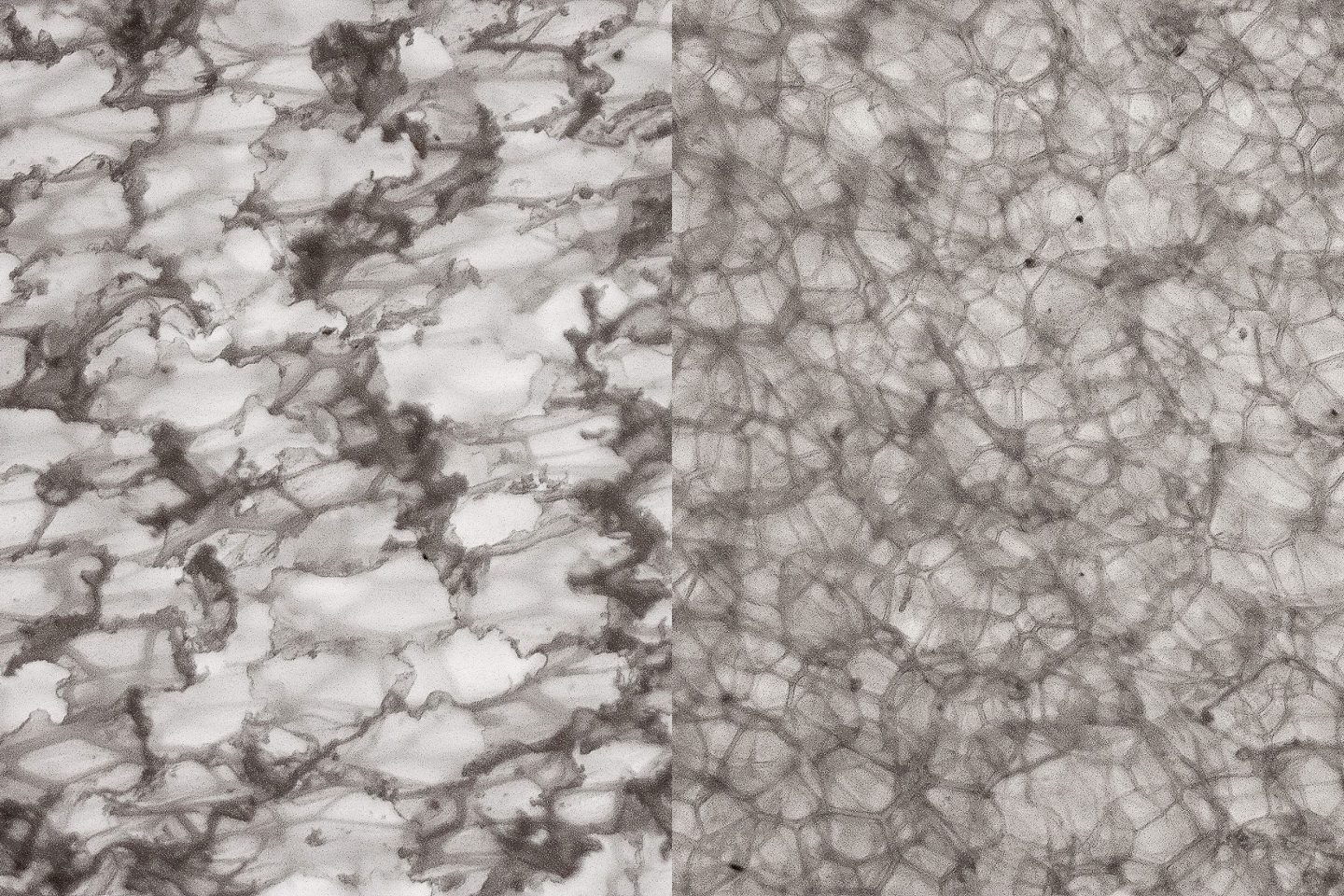
It’s also important to remember that Nike adjusts ZoomX for each shoe, and the foam in a training model like the Pegasus Plus can be wildly different from what’s used in the Alphafly 3. If you’re skeptical, we put both under our microscope, and the difference is crystal clear. As expected, racing-focused foams are lighter, bouncier and less durable.
ASICS FF Leap (A-TPU)
The latest foam from ASICS is called FF Leap, and it follows the trend we've been seeing in the last two years: A-TPU (Aliphatic TPU) is quickly replacing PEBA as the new gold standard in running shoes.
Unveiled in May 2025, this next-generation foam delivers a boost in energy return compared to the previous FF Turbo+, putting it on par with rival compounds like Adidas’ new Lightstrike Pro.
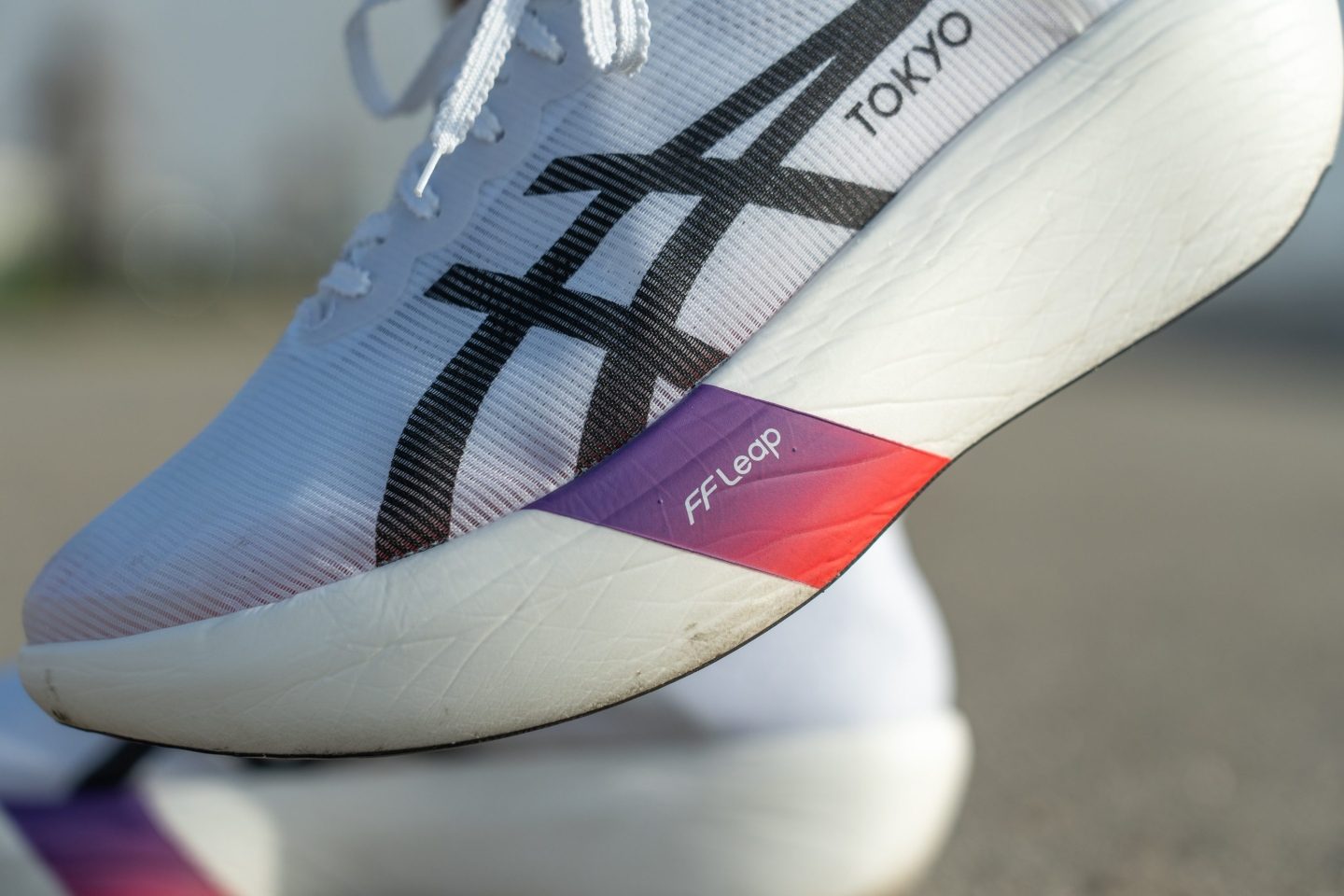
The first shoes to debut this material were the new Metaspeed series launched in 2025, and of course we immediately bought them and tested them in the lab. The Metaspeed Sky Tokyo impressed us, but the Metaspeed Ray is the only one featuring 100% FF Leap and it simply blew us away!
ASICS FF Turbo² (A-TPU)
ASICS has been on fire in recent years, surprising the market with a wave of new foams. While brands like Nike or Adidas might launch a brand new foam every three or four years, ASICS introduced four top-quality foams in under two years, with FF Turbo² being the most unexpected.
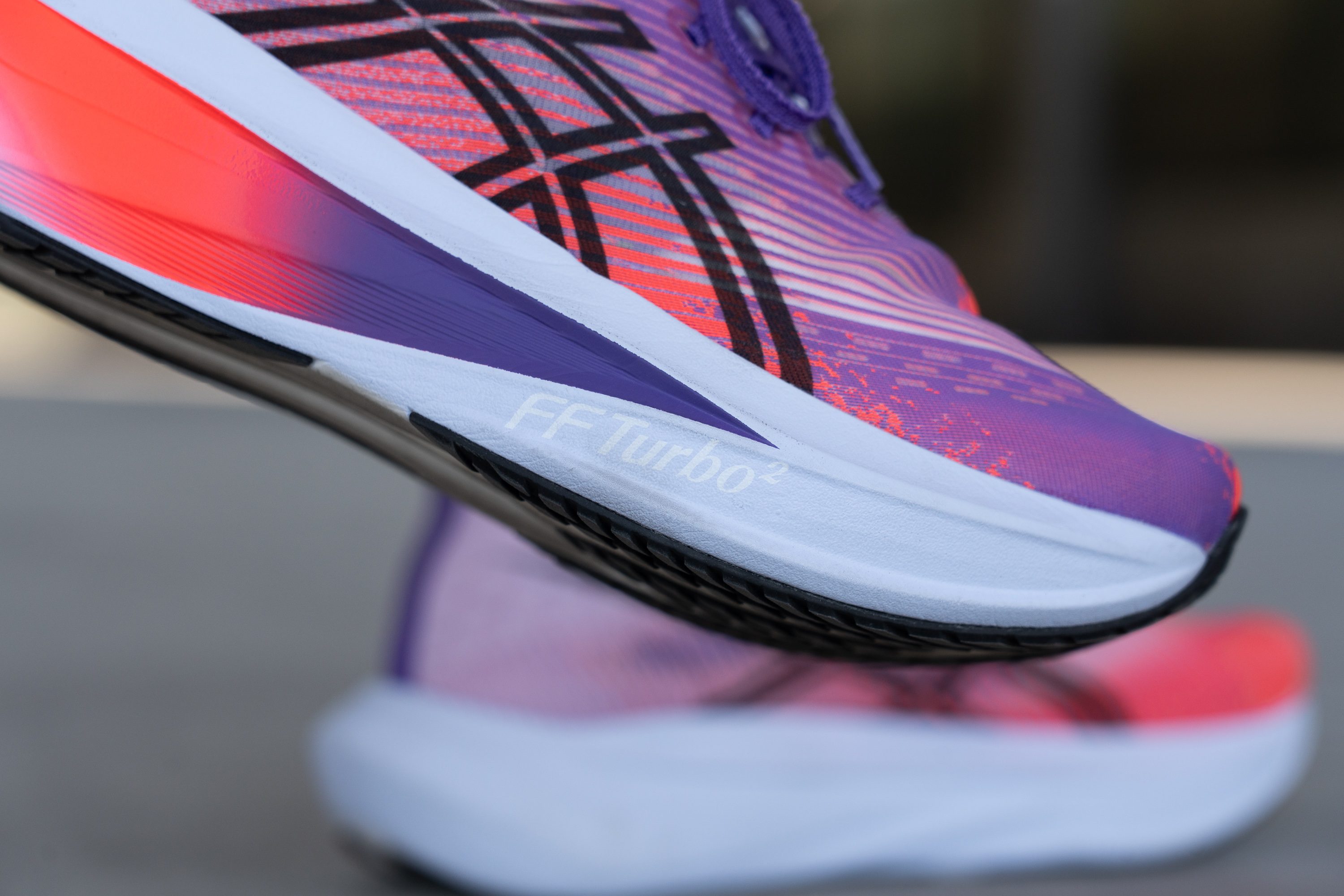
The first shoe to showcase FF Turbo² is the ASICS Megablast, which caught us off guard since we assumed the Superblast would remain their bounciest, most premium daily trainer. Instead, ASICS pushed the limits again, and we just love that.
So, why A-TPU? The big advantage over PEBA lies in durability. While PEBA often starts to feel flat after 150 or 200 miles, A-TPU keeps its bounce much longer, making it a perfect choice for a supertrainer where runners expect to rack up high mileage without losing energy return.
ASICS FF Turbo+ (PEBA)
In 2024, ASICS launched the FF Turbo+, an advanced upgrade from the original FF Turbo, highlighting increased resilience and responsiveness. This latest version is noticeably bouncier and softer, and it even comes with the added advantage of being lighter than its predecessor. The enhancement results from a refined supercritical manufacturing process, which introduces more nitrogen into the foam, leading to larger bubbles and a more uniform texture throughout the material.
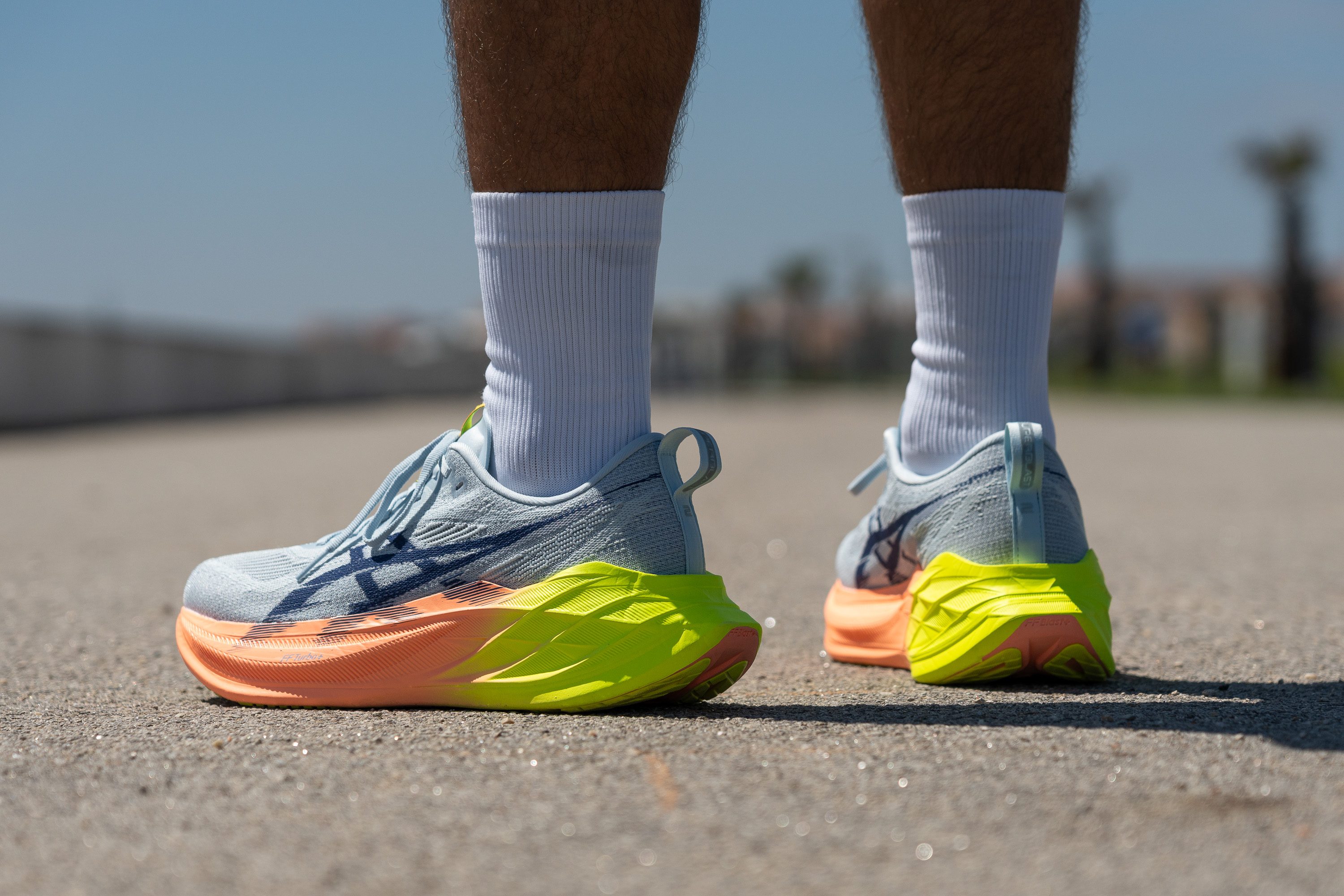
This development not only improves the feel underfoot but also transforms the overall performance of the new ASICS shoes incorporating this foam. Though the name implies a minor update, the changes are substantial.
We verified these improvements firsthand in the lab with the ASICS Metaspeed Sky Paris, where the new foam contributed significantly to a superior running experience. The difference in how the shoe handles and responds while running is palpable and impressive.
However, it’s also clear from our lab data that FF Turbo+ remains a step behind the top-tier foams in energy return, highlighting the significance of ASICS’ new FF Leap foam.
ASICS FF Turbo (PEBA)
This foam was one of the first to truly level the playing field against Nike's ZoomX back in 2021.
Unfortunately, ASICS hasn't disclosed the materials used to create FF Turbo, but we do know that it's a nylon-based or generic PEBA midsole—think of it as the store brand for Pebax—which is quite similar to Pebax in terms of energy return and bounciness. However, it's noticeably firmer and more stable, so keep that in mind if you're considering this alternative.
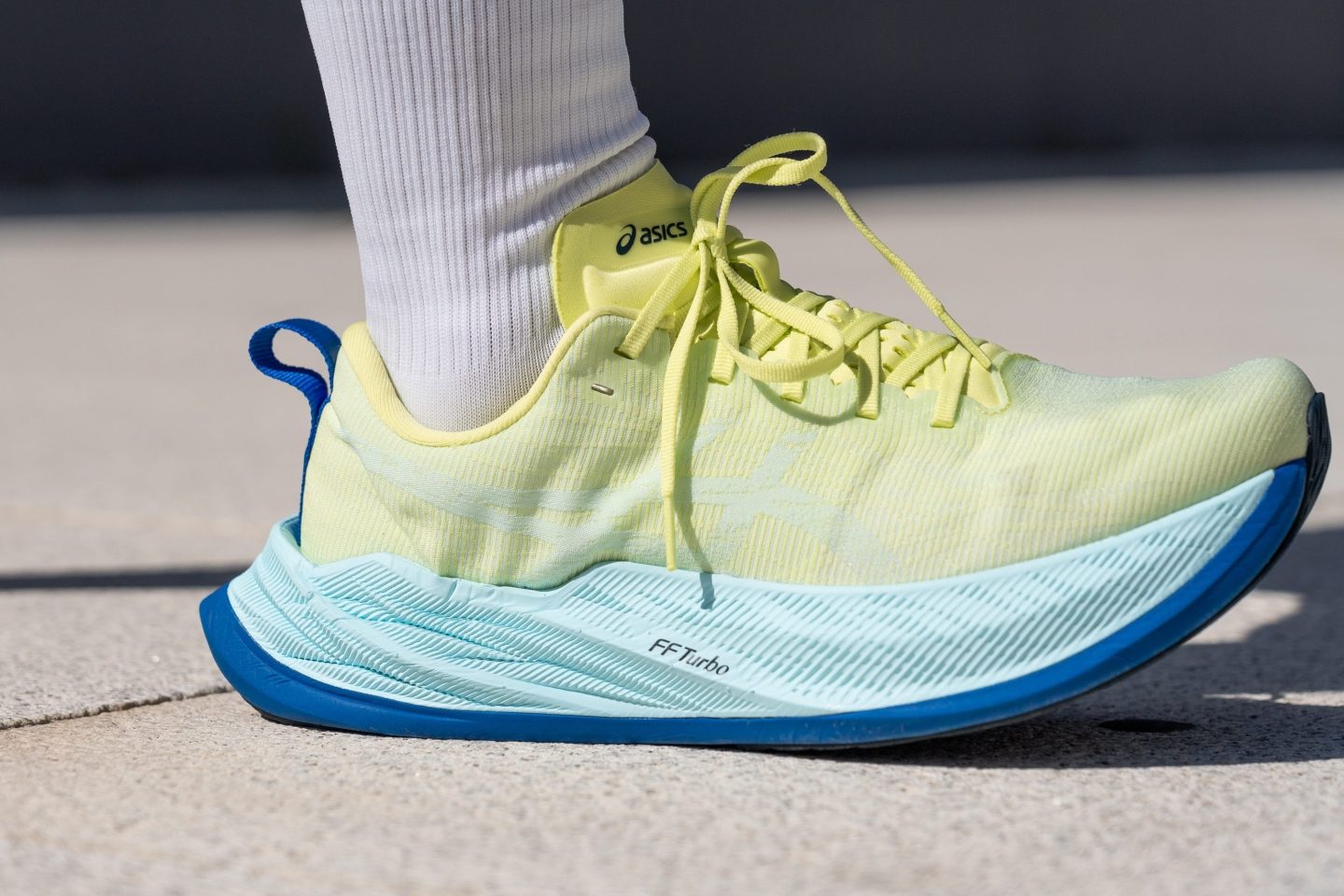
We have analyzed in our lab many FF Turbo shoes, and we can confirm that this foam is firmer than ZoomX. For instance, the ASICS Metaspeed Sky+ was measured at 28.8 HA in our durometer, which is 34% firmer than the Nike Vaporfly Next% 2.
Interestingly, this foam emits a strong glue-like scent, particularly when fresh out of the box—this is completely normal and there's no cause for concern. Additionally, Asics boasts that FlyteFoam Blast Turbo is an impressive 45% lighter and 36% bouncier than your average EVA midsole.
Adidas Lightstrike Pro (TPEE / A-TPU)
Due to its large size and extensive elite roster, Adidas had a rough time from 2017 to 2020. Initially, they rushed and tried with the Adizero Pro, a carbon-plated shoe featuring a mix of Boost and Lightstrike, two standard foams. However, it quickly became clear that it was no match for the Vaporfly.
Eventually, they launched the original Adizero Adios Pro, internally referred to as Majambo, which featured their new top-tier foam called Lightstrike Pro, which is manufactured by Shincell in China. And boy did they deliver.
Unlike most premium foams made of PEBA, the original Lightstrike Pro is built from TPEE (Thermoplastic Polyester Elastomer), which offers some unique properties:
- Amazing durability: While many premium foams wear out relatively quickly, Lightstrike Pro performs at its best even after 200 or 300 kilometers. We've received reports of some shoes being used for intervals or long runs with more than 1,000 km.
- Lightstrike Pro exhibits a unique behavior compared to other premium foams. It requires a short break-in period of at least 2-3 runs, and the shoe will be at its best between 50 km and 250 km in terms of energy return. Log your miles first!
- The ride is on the firmer side compared to many other super foams, but it becomes considerably softer in summer.
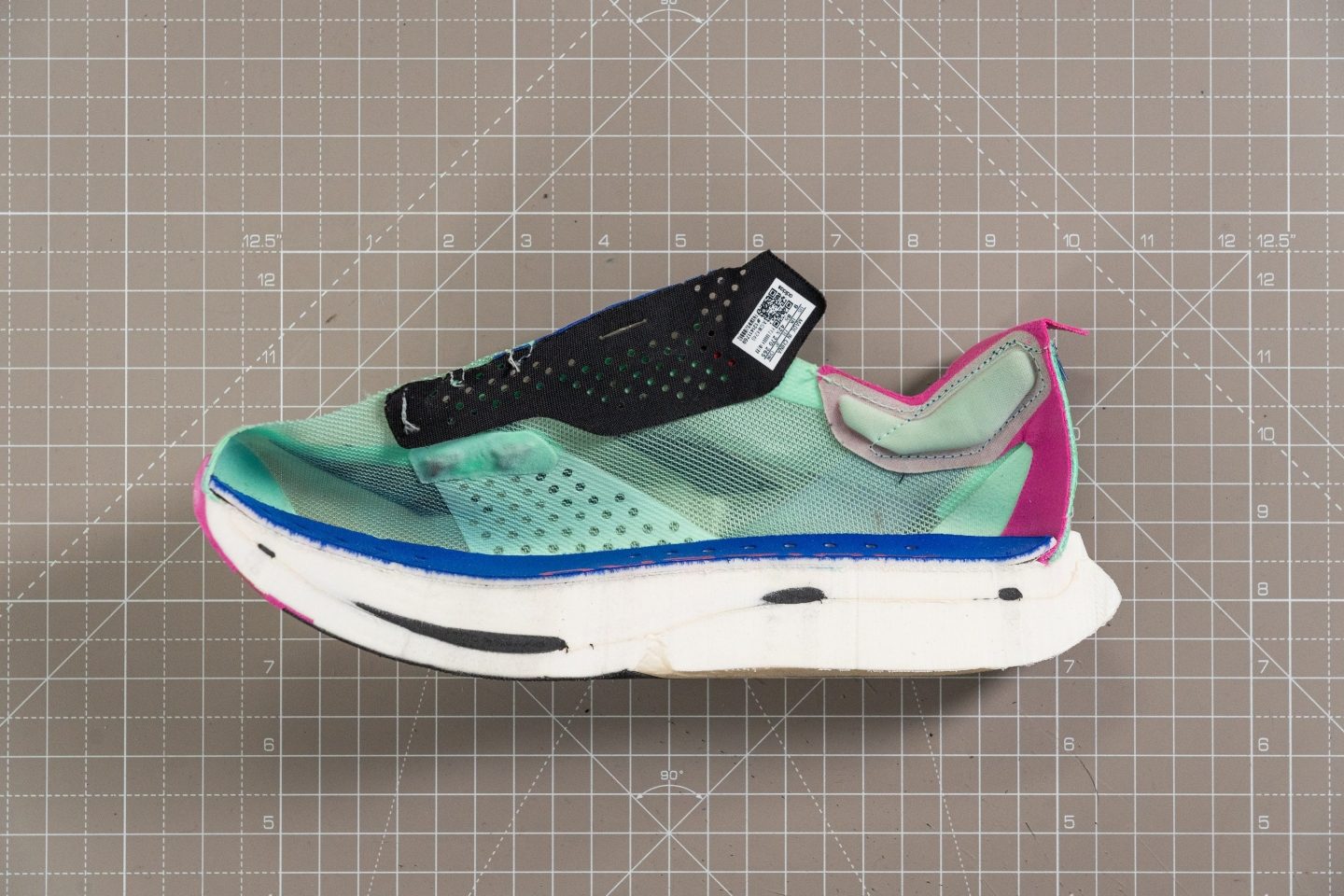
While the first-gen Lightstrike Pro it’s a very good foam, our lab tests confirmed that it delivers slightly less energy return than the very best. For instance, the Adios Pro 3 reached 75.1% in the forefoot, whereas the Saucony Endorphin Elite 2 hit 82.1%.
Even so, the foam’s impressive track record—including multiple World Marathon Majors victories and a podium sweep in Boston 2023—proves that this difference is not a deal-breaker at all.
In 2024, Adidas reformulated Lightstrike Pro for its new racer, the Adios Pro 4. They're now using A-TPU, and while that means a minor decrease in durability, energy return and softness has been greatly improved. For instance, it clocked a fantastic 80.3% in energy return here in the lab, improving 5.2% over its predecessor and becoming one of the best shoes we've ever tested.
Adidas Lightstrike Pro Evo (TPEE)
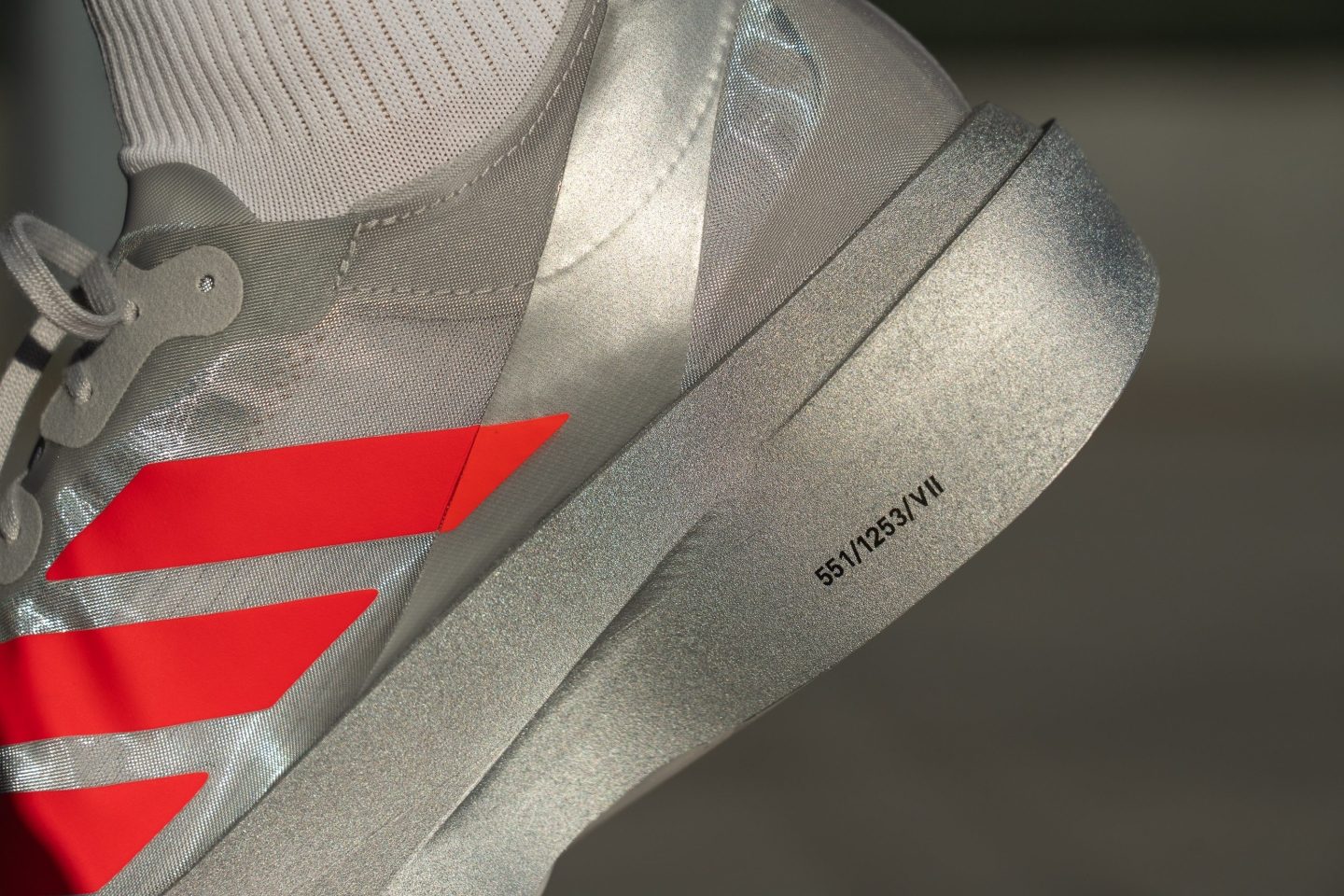
In 2023, Adidas unveiled the Adizero Adios Pro Evo 1, a limited-edition shoe primarily designed for elite athletes. To adhere to World Athletics regulations, a 521 pairs were made available to the general public in an initial release. This shoe introduces Lightstrike Pro Evo, which is less dense and incredibly light.
The innovative Lightstrike Pro Evo foam is crafted through a groundbreaking non-compression molding technique and a supercritical process. Unlike traditional methods, the foam is produced in large blocks and then precisely shaped with CNC machines—an industry-first approach. This advanced—and incredibly expensive—manufacturing technique significantly reduces the weight by 50g compared to the Adios Pro 3, while also boosting energy return... and price.
The Adidas Adizero Adios Pro Evo 2 continues this same high-end construction, keeping the CNC-shaped Lightstrike Pro Evo midsole and further refining the design.
Saucony PWRRUN PB (Pebax)
The American brand also has an agreement with Arkema to use Pebax, but it employs a different formulation and format compared to ZoomX. PWRRUN PB is composed of tiny pellets—similar to Boost—rather than a single block.
Boasting a distinctive soft yet responsive feel, impressive durability, and great energy return, PWRRUN PB is considered a fantastic all-rounder but it’s slightly behind the top performers. Nevertheless, it ranks among the best foams, and Saucony has achieved remarkable success incorporating it into the Endorphin series.
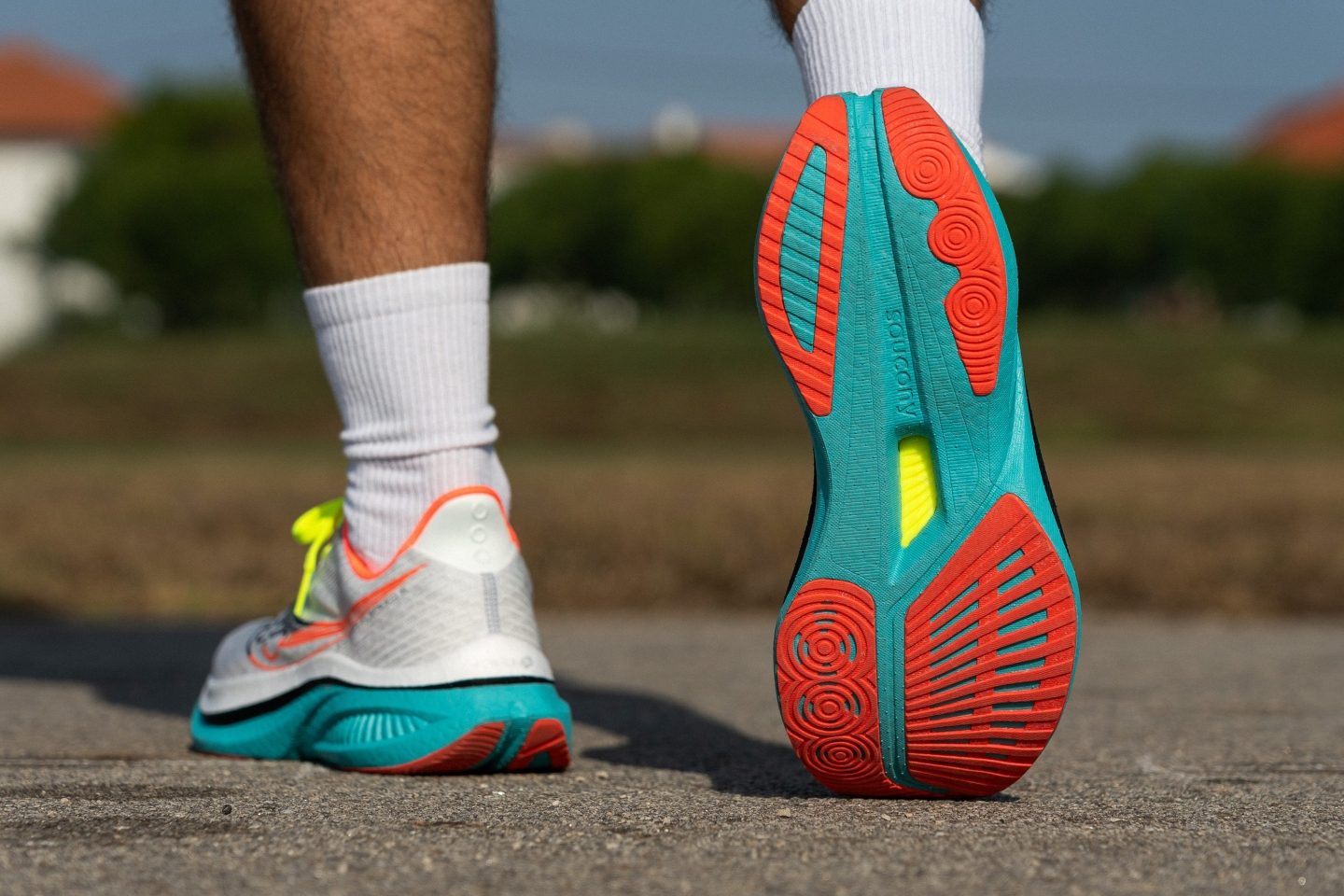
This pellet-based design features a network of grooves and flex points that enable the foam to adapt to the foot's movements, delivering a customized fit and enhanced comfort. And in terms of energy return, it’s a true superfoam, delivering impressive results such as 78.2% forefoot rebound in the Endorphin Speed 5.
Interestingly, PWRRUN stands for "Performance Welded, Responsive, Resilient, UNderfoot foam," and PB is derived from Pebax.
Saucony PWRRUN HG (Pebax)
The HG version of PWRRUN is noticeably firmer and more stable—think more Lightstrike Pro than ZoomX. It served as Saucony’s bridge between PWRRUN PB and incrediRUN, standing as the brand’s premier foam for nearly two years and powering models like the Endorphin Elite. However, we found in the lab that its results weren’t better than those of PWRRUN PB...
Although Saucony hasn’t disclosed publicly how PWRRUN HG is made, we assessed that this foam is a supercritical inflated Pebax built like ZoomX, so expect a similar behaviour and performance underfoot.
Saucony incrediRUN (A-TPU)
In March 2024, Saucony filed a trademark for incrediRUN, sparking curiosity here in the lab about what it could signify. A few months later, they teased the running world with an ultra-limited release of the Endorphin Elite 2 for the Paris 2024 Olympics, featuring an ultra-soft foam touted as the most resilient ever used in a running shoe. That's bold!
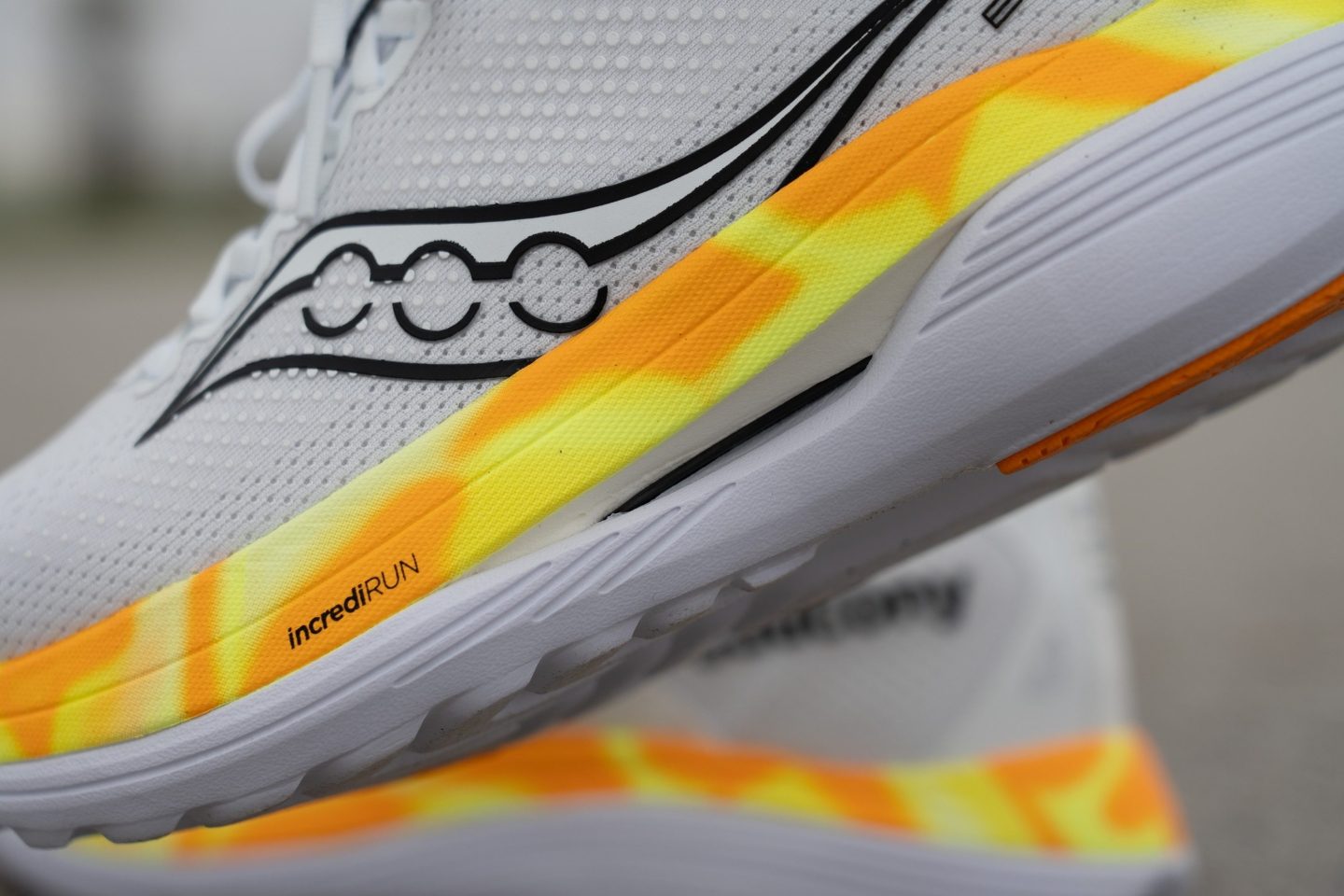
This revolutionary foam was officially named incrediRUN (now it all makes sense) in late 2024 and it was ready for the masses in 2025 with the Saucony Endorphin Trainer.
We tested it in the lab and found that the hype was real—it shattered our records for both energy return and midsole softness! It also confirmed that while PEBA may be fading a bit in 2025, A-TPU is going strong and gaining ground.
PUMA Nitro (PEBA / A-TPU)
Starting in 2024, PUMA shifted its focus to A-TPU and PEBA foams and completed the transition in 2025 with the release of the Velocity Nitro 4. This daily trainer matches the Pegasus in price but delivers amazing energy return, proving that future of daily trainers are premium foams.
In fact, with premium foams moving into the mid-tier market, we think it won’t be long before most brands offer excellent energy return in shoes priced around 150 dollars, just as PUMA and Adidas are already leading the way.
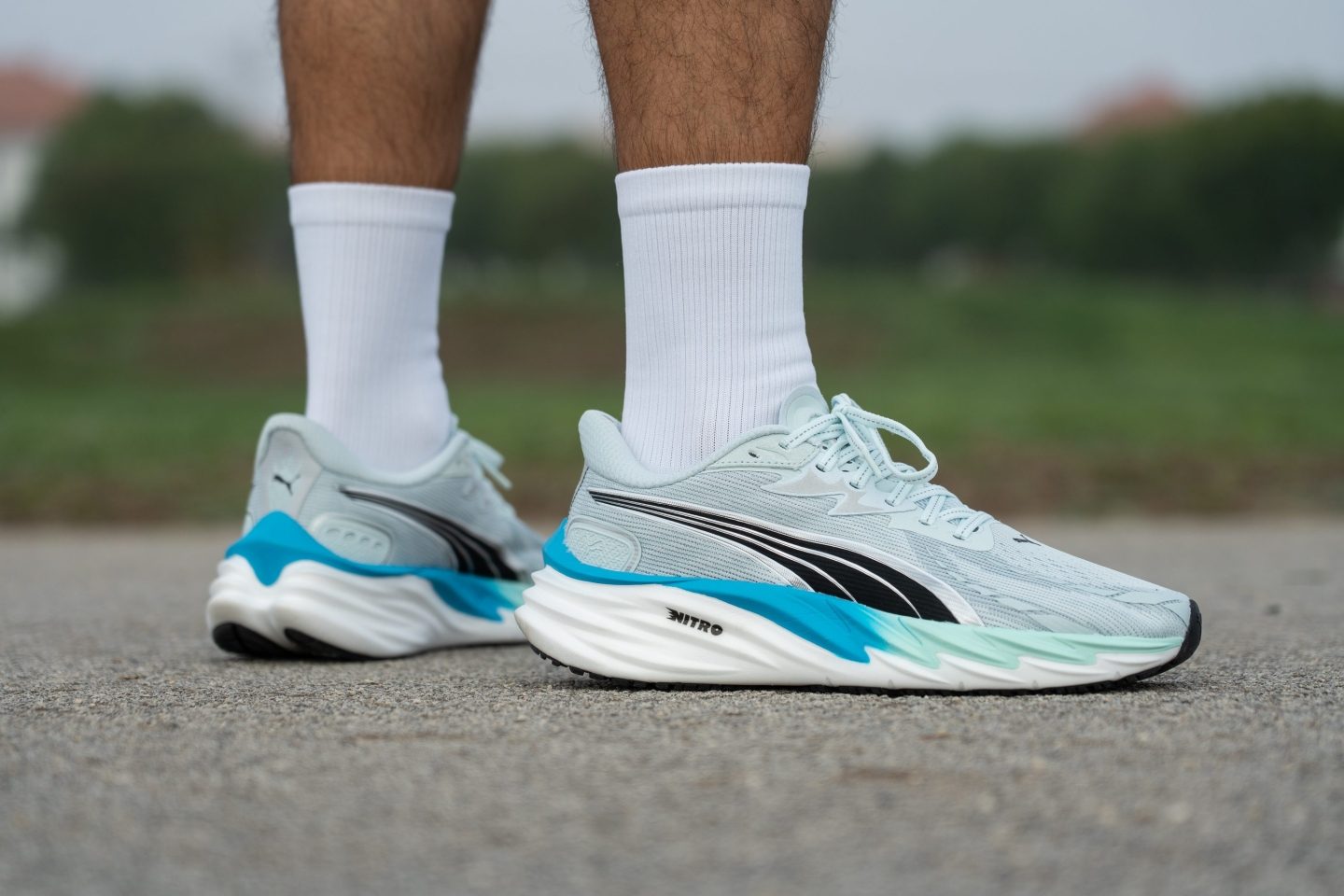
PUMA Nitro Elite (A-TPU)
Puma’s initial approach of blending PEBA and EVA aimed to balance performance, durability, and manufacturing cost. However, this combination proved limiting, leaving the foam a step behind the leading options in energy return.
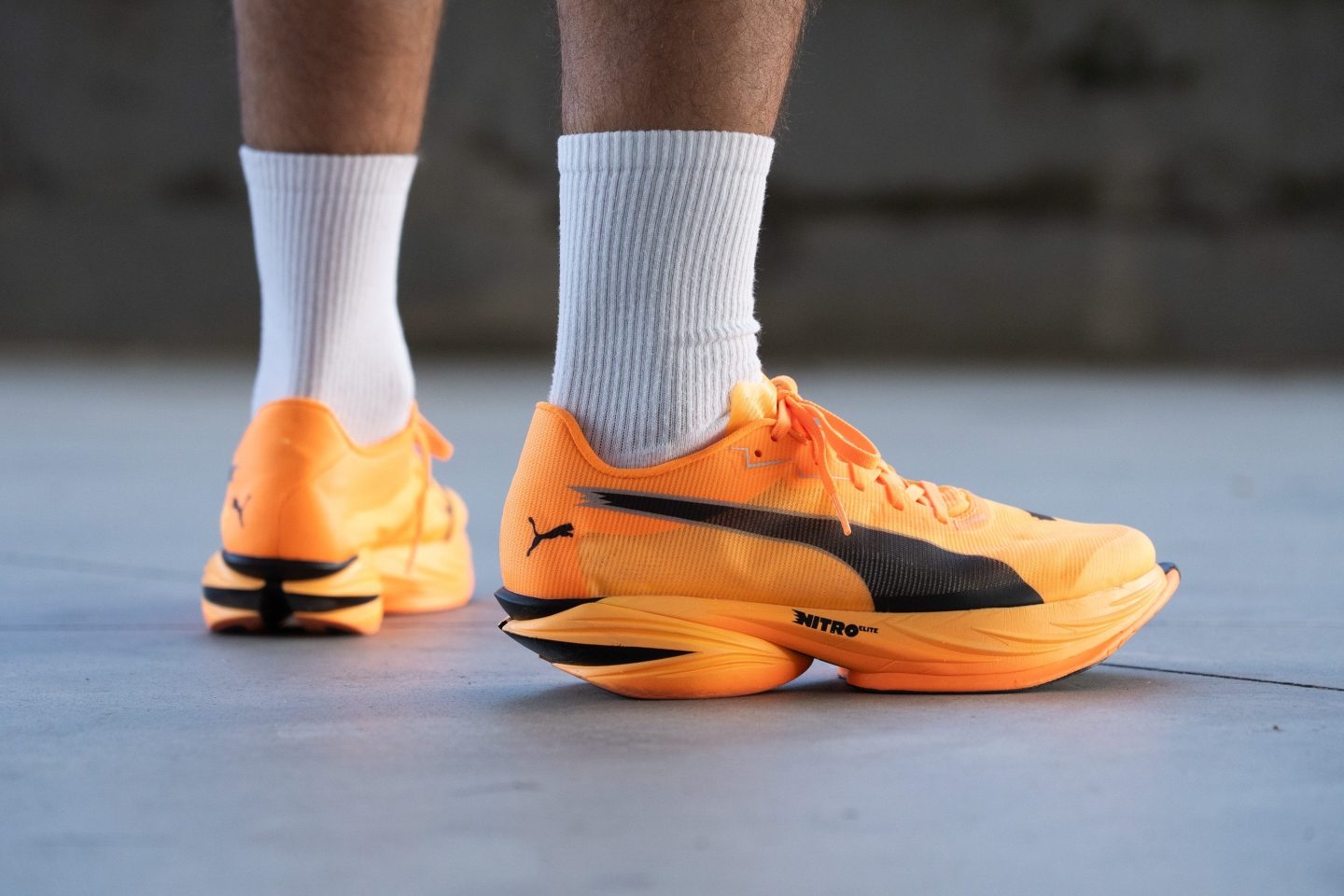
In late 2023, PUMA introduced the Fast-R Nitro Elite 2 and updated the Nitro Elite formulation to A-TPU (Aliphatic TPU). According to the brand, this new material theoretically delivers a significant boost in energy return.
It's clear to us that A-TPU could be the next breakthrough in running shoe superfoams, offering a viable alternative to PEBA with superior long-term performance. It maintains its resilience better throughout a marathon and has enhanced UV resistance that prolongs its shelf life. And in terms ofnitro elite bounce, A-TPU is in the first division, as we found in our lab with the incredible Fast-R Nitro Elite 3.
Hoka Unnamed (PEBA)
After over three years of anticipation, Hoka finally unveiled its first genuine supershoe in 2023: the Hoka Rocket X 2, featuring a PEBA-based foam.
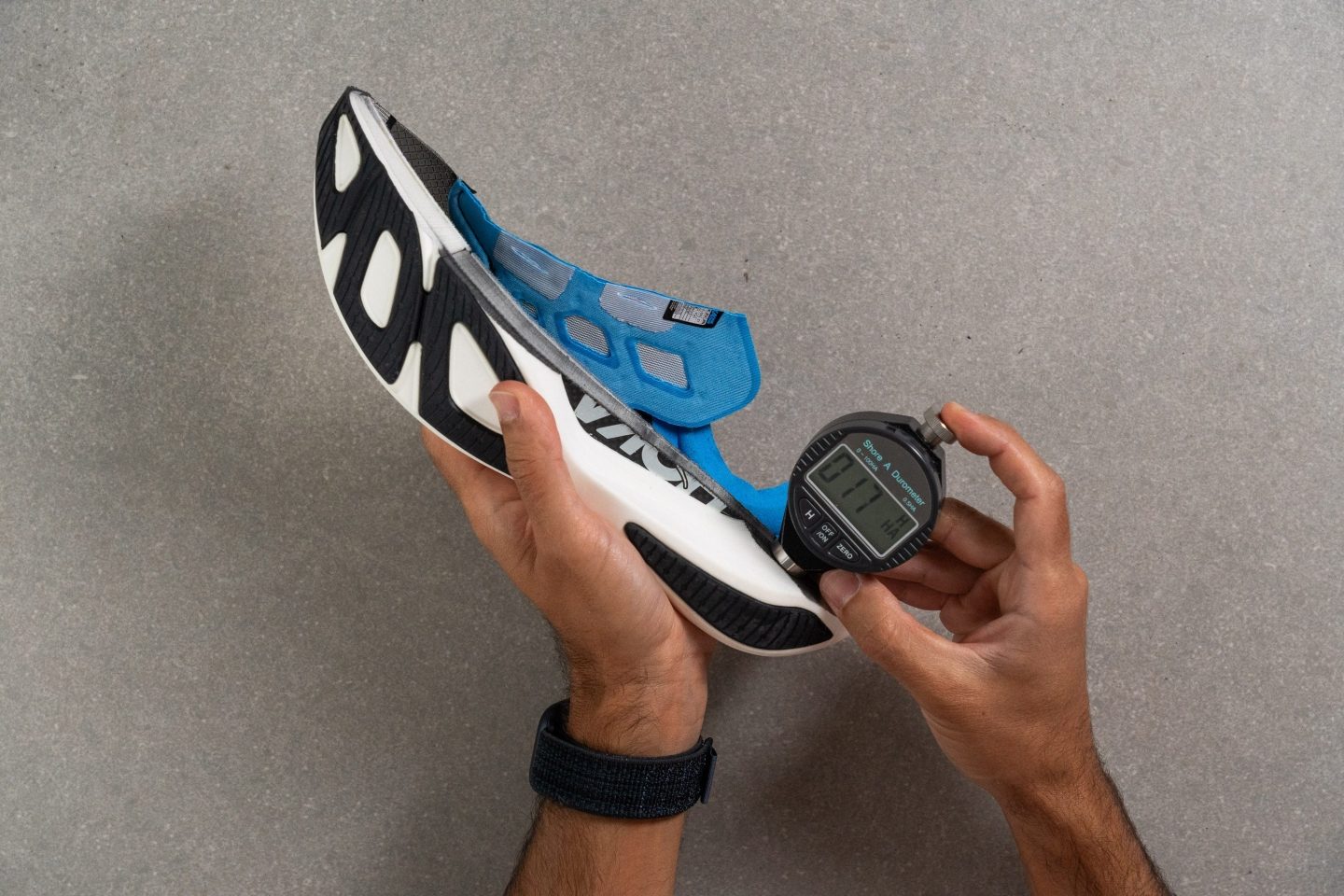
Hoka has kept quiet about this innovative, still-unnamed foam. In the first models, it felt positioned between ZoomX and the original Lightstrike Pro—neither overly soft nor excessively firm. However, it has now shifted toward a more plush feel.
Most importantly, it delivers outstanding shock absorption and energy return, as we confirmed while testing the Cielo X1 2.0 for road running and the Tecton X 3 for trail running.
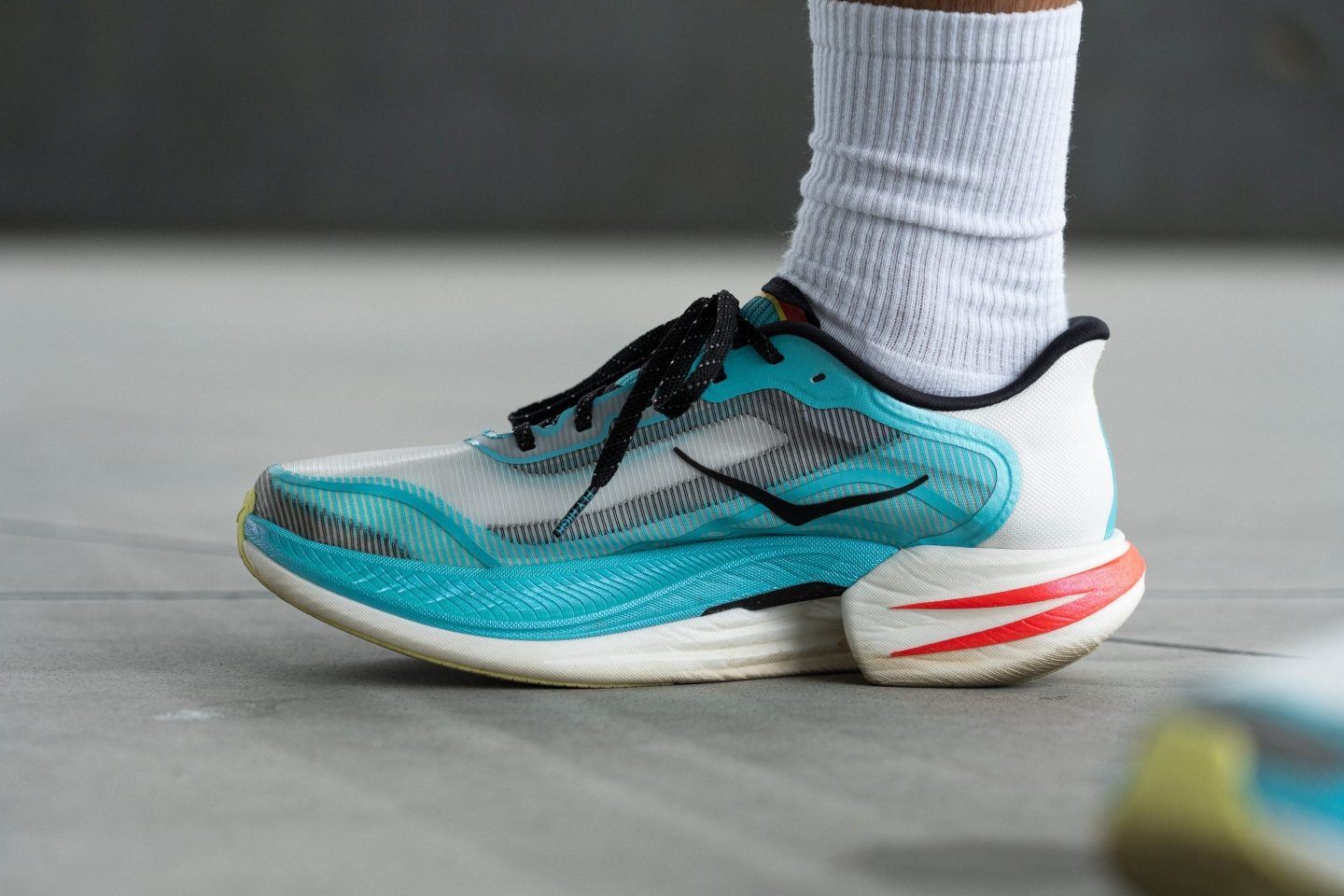
We expect Hoka to, at some point, divulge further information about this midsole—please name it—and to launch new racing and training models incorporating this advanced midsole.
Kiprun VFOAM (Pebax) / VFOAM PLUS (Pebax + EVA)
As two French big companies, it made perfect sense for Decathlon and Arkema to partner up when the popular retailer decided to create their very first supershoe, the Kiprun KD900X, which was launched in 2022 and features VFOAM technology.
VFOAM is a Pebax-based midsole formed by pellets—in the style of Saucony’s PWRRUN PB. It’s bouncy and light, but the energy return is slightly below the best premium foams.

Decathlon offers probably the cheapest way to enter the world of premium foams, at least if we take into account MSRP and we forget about the usual discounts in some major brands.
By 2024, the French company upgraded the KD900X LD with VFOAM PLUS, a new foam that delivers a softer feel underfoot. This updated formulation combines Pebax and EVA and moves away from the Boost-like pellet structure. Although this change might appear technically regressive, Decathlon likely views it as a strategy to boost durability.
Mizuno Enerzy Lite+ (PEBA)
The Japanese brand has recently entered the supershoe market, and one of the reasons they were not competitive in this space earlier was because they lacked a truly high-performance foam. However, now they have Enerzy Lite+.
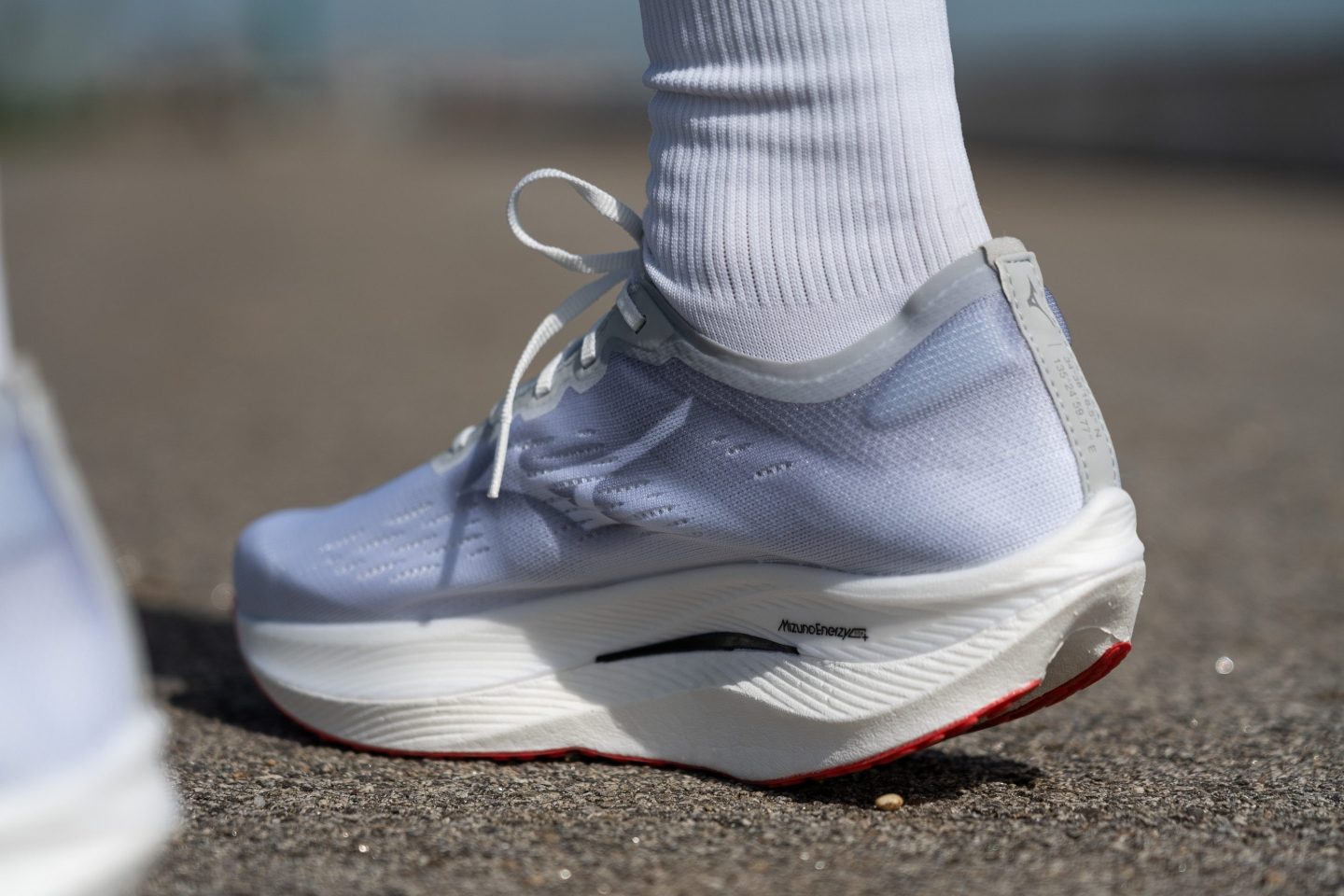
Enerzy Lite+ is a type of PEBA foam that has a soft, cloud-like feel similar to the first versions of Nike's ZoomX. However, Enerzy Lite+ is really unstable, which has probably prevented Mizuno from using it in a full-length midsole. Instead, they combine it with a more stable section of non-premium Enerzy Lite foam in their jaw-droppingly-impressive Wave Rebellion Pro 2.
Mizuno Enerzy XP (PEBA / TPEE)
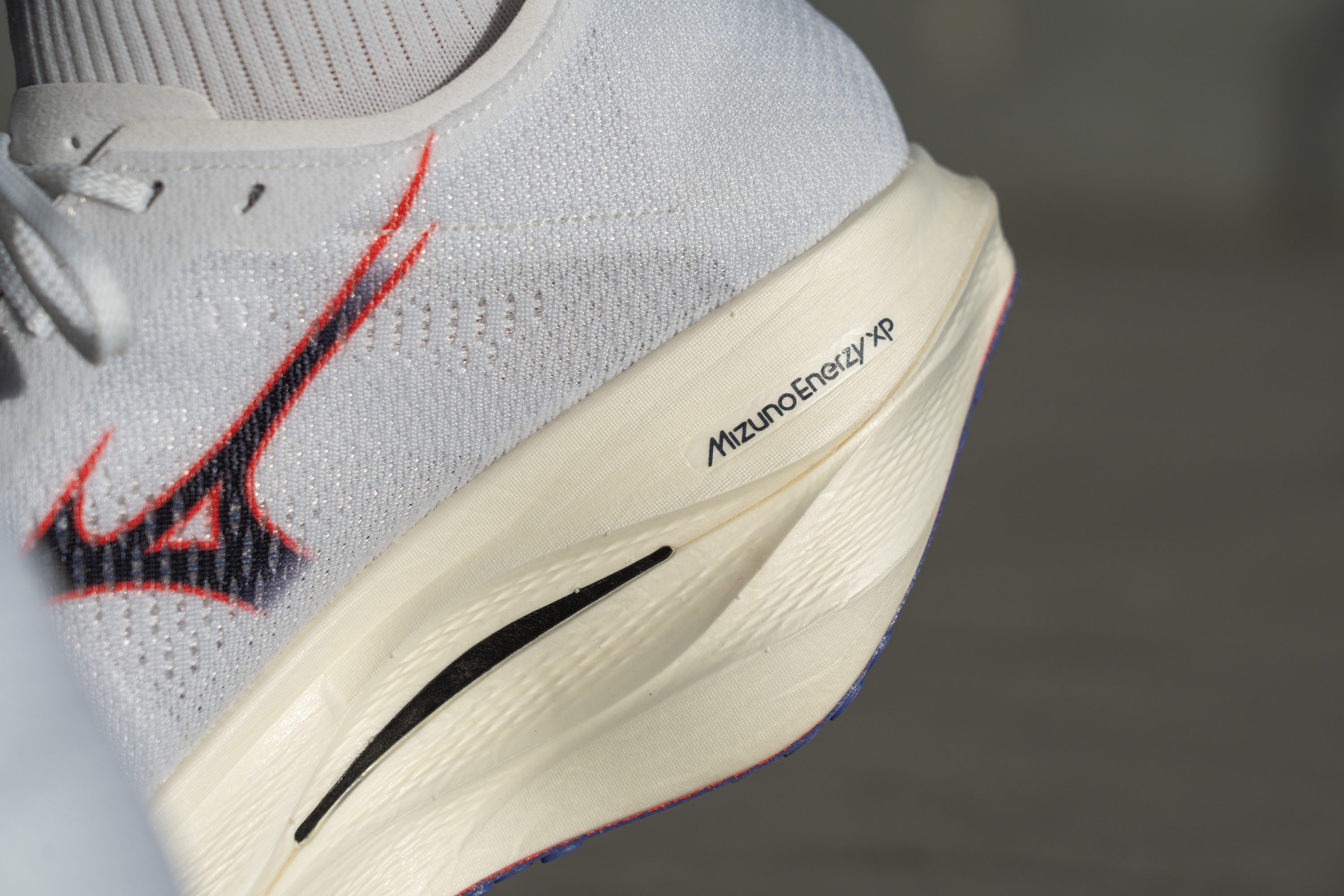
While Enerzy Lite+ was a real step forward, it was still far from the top performers in energy return. That’s why Mizuno introduced Enerzy XP in the Wave Rebellion Pro 3. It’s still a TPEE foam in most shoes, although we know Mizuno also developed a PEBA, so it will be interesting to see how they balance both compounds in the future.
Unfortunately, we found that while bounce has improved slightly, it still falls short of top performers like ZoomX, Lightstrike Pro, or FF Leap, at least in the Rebellion series from 2025. Let's see what they can do in the new Hyperwarp line!
Reebok Floatride (Pebax)
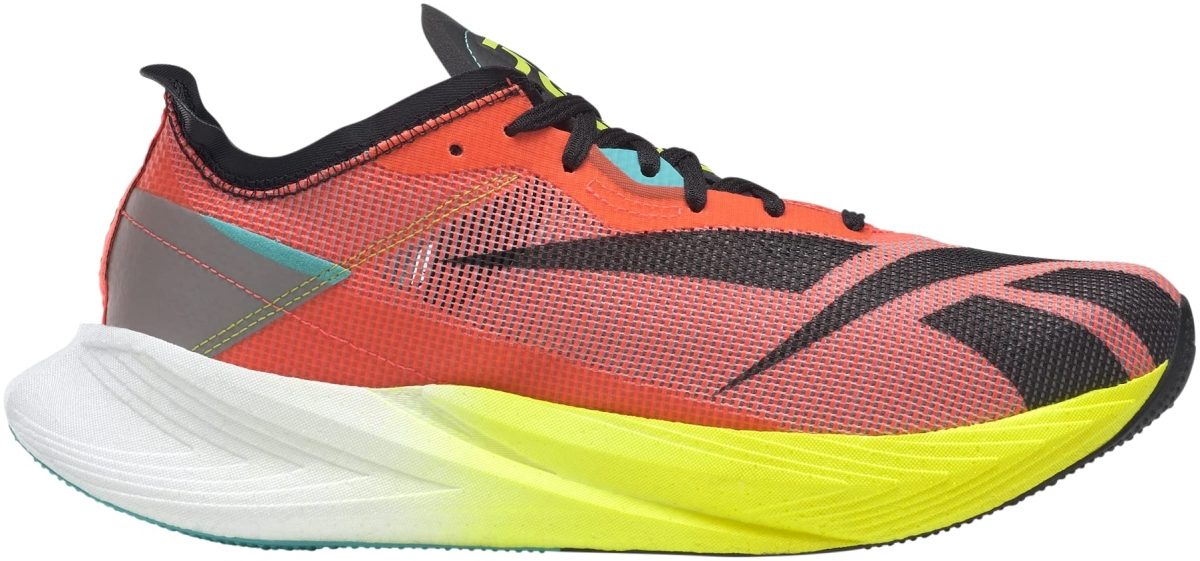
It's not often that you see many Reebok running shoes out there in the roads, right? Honestly, I can hardly recall the last time I encountered someone wearing them while running, and I always take notice of people's footwear.
Despite its rarity, Reebok offers one of the more affordable ways to experience a Pebax-based midsole. However, there's a catch: Reebok uses the name "Floatride" for two distinct midsole types and it can be easily confused:
- Floatride: A Pebax midsole featured in premium models.
- Floatride Energy: A more budget-friendly non-premium, TPU-based midsole—similar to Boost—found in models such as the Energy 5.
By the way, Pebax's impressive performance is evident when Reebok claims that it's up to 50% lighter than their previous EVA foam, all while delivering significantly more energy return.
Li-Ning BOOM (Pebax)
With some Chinese brands making appearances and endorsing some elite athletes in recent times, it’s probably Li-Ning the one that has the best premium foam in their high-performance shoes.
In some funny Chinese-style, the name of the midsole is BOOM. It’s a Pebax-based supercritical foam, and we’ve even seen some elite runners enjoying this ZoomX-esque midsole in the Feidian series; for instance, in 2023 Seville Marathon, the winner—with a respectable 2:04:59—and the third place were in Li-Ning shoes.
With that said, good luck buying those in the USA or Europe. They’re mostly restricted to the Chinese market, and while you can get your hands in those importing them, it’s probably not worth the price after customs taxes with so many alternatives that you can buy in five minutes from your home.
On Helion HF (PEBA)

On burst onto the running scene fashionably late, but made an impact that's hard to ignore. Boasting elite athletes like Mario García Romo and Hellen Obiri on their roster, the Swiss brand upped the ante with a new addition: the Helion HF midsole. This state-of-the-art foam, crafted from Arkema's Pebax, promises unparalleled performance.
While its ultra-reactive nature ensures impressive strides on the track and road, it does trade off some durability. On advises runners with a note in the box of their Helion HF shoes: "Lifespan = four marathons (+ infinite memories)".
We anticipate seeing more of On's footwear range featuring the Helion HF (Hyper Foam) in the next years, though as of now, it remains a select offering for just a few models like the Cloudmonster Hyper and the Cloudboom Echo 3.
New Balance FuelCell [2024+] (PEBA / PEBA + EVA)
New Balance has made a late entrance into the superfoams league with their latest FuelCell version. It retains the plush feel of the original non-PEBA FuelCell while delivering exceptional energy return. In essence, this is the FuelCell upgrade we've all been waiting for.
The SuperComp Elite v4 is the inaugural model to feature this advanced FuelCell foam, a shoe we've thoroughly evaluated in our lab. Future releases, such as the SuperComp Pacer, are set to follow suit. However, for some models like the Rebel v4, New Balance uses a mix of PEBA (20%) and EVA (80%) under the same FuelCell label, which could be confusing.
Although a unique name could have clarified this transition, the introduction of a FuelCell variant synonymous with elite energy return—in select models—is undoubtedly thrilling news for us.
Topo Pebax Powered (Pebax)
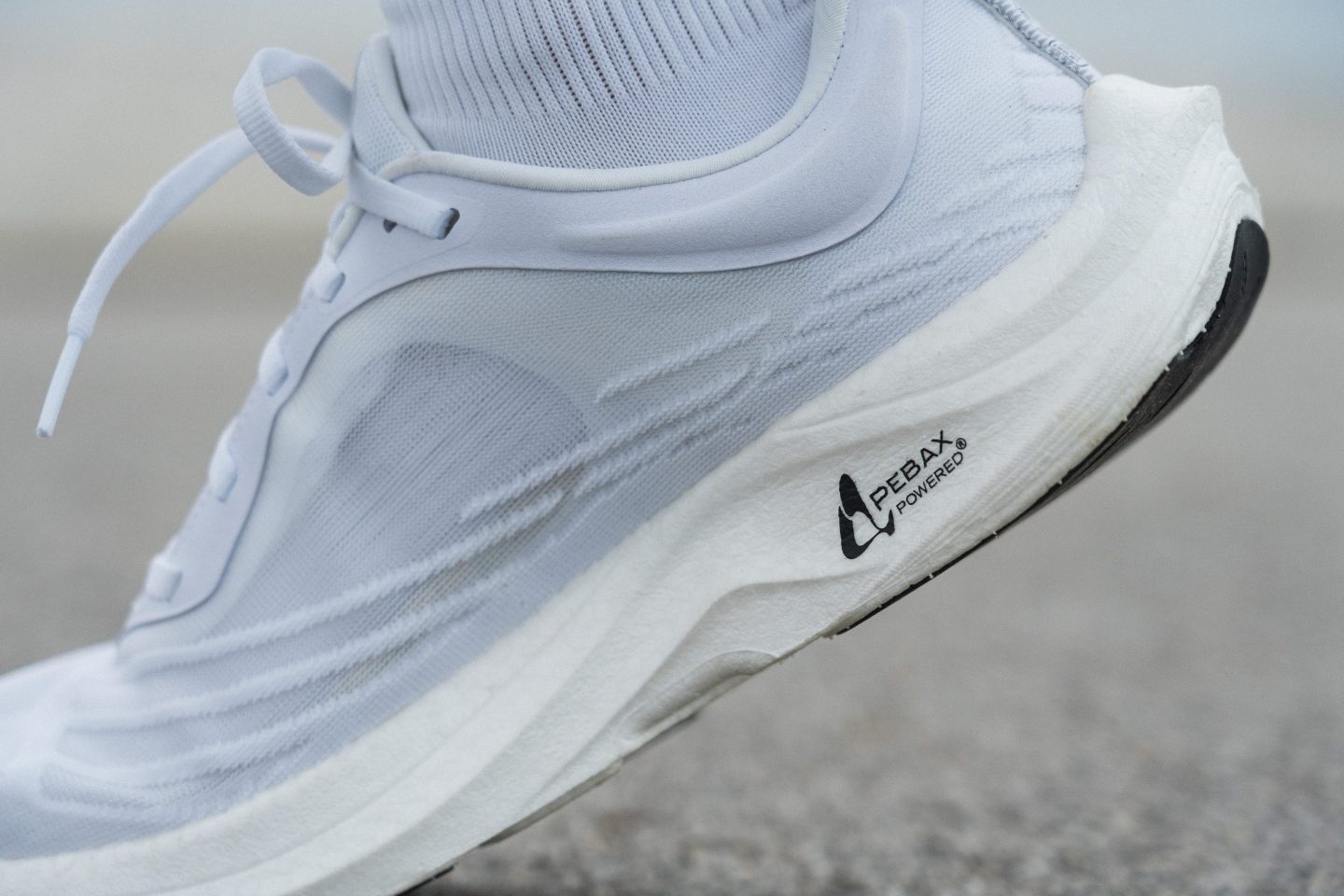
Topo may be a niche player in the running shoe market, but it excels in one key area—offering Pebax-based foam at an affordable price, as seen in the Cyclone 2. For runners seeking premium cushioning without breaking the bank, we believe Topo stands out, especially for those needing a wider fit.
Topo’s Pebax Powered foam closely resembles Saucony’s PWRRUN PB, featuring a pellet-shaped structure that enhances durability while keeping costs low and energy return high. It strikes a solid balance between responsiveness and longevity, though it falls short of top-tier foams like ZoomX or FF Turbo+ in terms of bounce. Given its similarity to Saucony’s foam, we advise you to expect a slightly firmer feel underfoot.
Brooks DNA Gold (PEBA)
It’s almost unbelievable that it took Brooks a full eight years to catch up with Nike’s ZoomX and three to four years to match brands like Adidas, ASICS, and PUMA in the supershoe race.
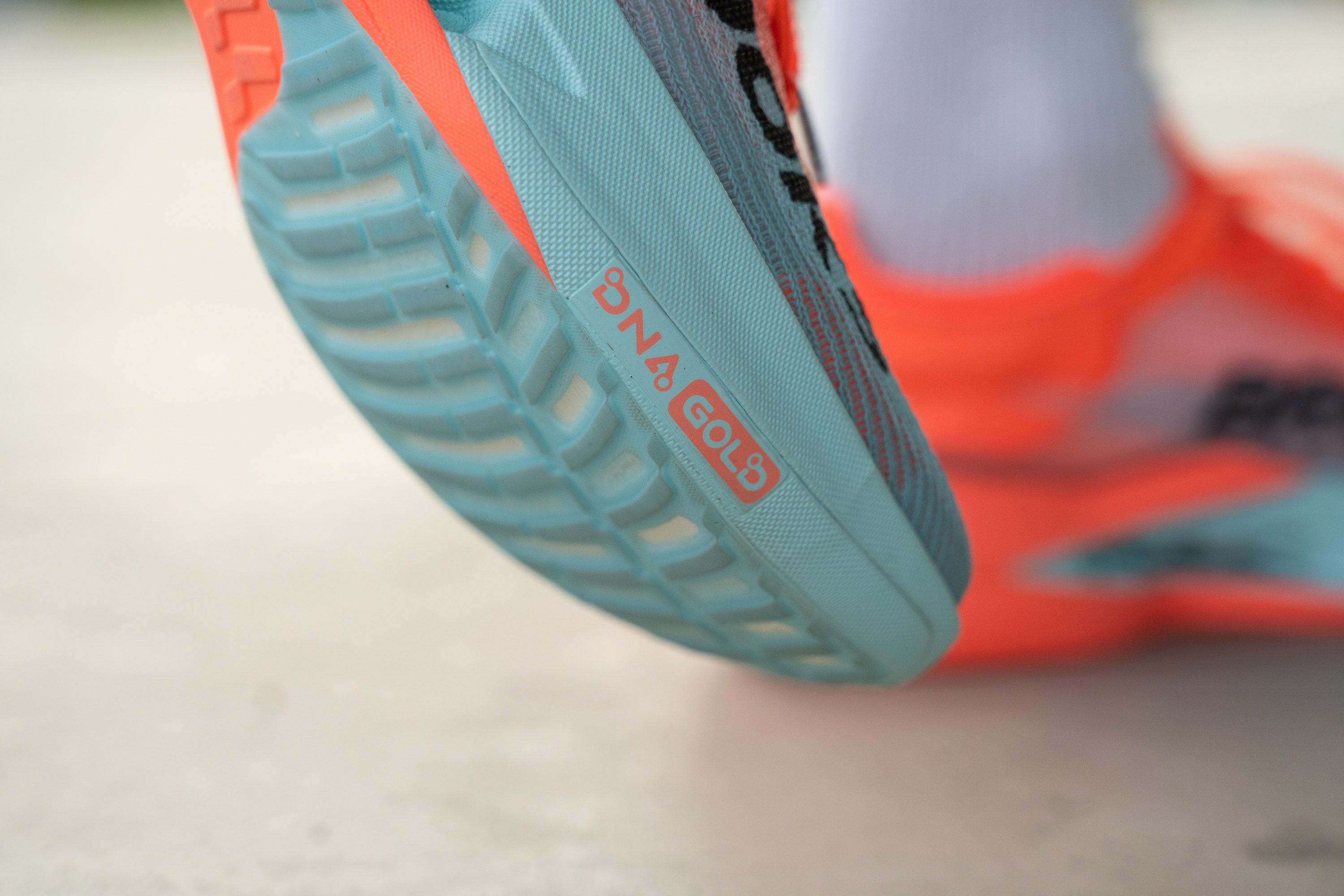
Finally, in 2024, they introduced the Brooks Hyperion Elite 4 PB, a variant of the Hyperion Elite 4 featuring a PEBA midsole and the same Speedvault+ plate. This is the same shoe spotted on athletes like CJ Albertson and Des Linden during races and training, while other Brooks elites, such as Josh Kerr, have already used the Hyperion Elite 5.
Brooks clinging to DNA Flash v2 felt bizarre, but thankfully, those days are over! To understand how significant this difference is, look at this data from our lab:
| Shoe | Energy return | Improvement over DNA Flash v2 |
| Hyperion Elite 4 | 56.2% | 0% |
| Hyperion Elite 4 PB | 67.1% | +10,9% |
| Hyperion Elite 5 | 76.9% | +20,7% |
Diadora ANIMA PBX
Even smaller, niche brands like Diadora can now incorporate Pebax into their supershoes, which is a positive development. Models like the Gara Carbon from the Italian brand can compete with the best in the market despite the company’s smaller workforce and more limited resources.
We tested the ANIMA PBX in the lab and saw excellent results. While it does not quite reach A-tier since Pebax foams still trail A-TPU in energy return, the gap is razor-thin, with this foam hitting 78% in our tests, an outstanding outcome.
Which premium foam should you choose?
While you might already guess the ideal foam for your running style or preferred distance, let's simplify things even more by selecting some foams and models based on your specific needs.
| You need... | Best midsole for that | Our pick |
| Stability and performance | Lightstrike Pro | Adidas Adizero Adios Pro 4 |
| A secure bet for your next PB | Nitro Elite / FF Leap | PUMA Fast-R Nitro Elite 3 |
| The lightest possible ride | FF Leap | ASICS Metaspeed Ray |
| A durable yet fast shoe | Lightstrike Pro | Adidas Adizero Adios Pro 3 |
| Price/performance ratio | PWRRUN PB | Saucony Endorphin Speed 5 |
| Bouncy yet firm ride for short distances | FF Turbo+ | ASICS Metaspeed Edge Tokyo |
| The plushiest ride | FuelCell / incrediRUN | Saucony Endorphin Elite 2 |
| Racing flat vibes in a premium foam | ZoomX | Nike Streakfly 2 |
| Shock-absorbing ride for midfoot strikers | Enerzy Lite+ | Mizuno Wave Rebellion Pro 3 |
| A great supershoe for heel strikers | PWRRUN HG | Saucony Endorphin Pro 4 |
Standard foams
A standard foam, as per our definition, is any modern foam that delivers lower energy return when compared to premium foams. Despite their limitations, standard foams hold some advantages over premium foams:
- They are significantly more affordable to manufacture, enabling brands to offer these shoes at substantially lower prices, even below $100 in some cases.
- Durability is a key strength, with many shoes crafted from standard foams easily surpassing the 1000 km mark.
- These foams often provide enhanced stability, making them ideal for runners seeking extra support.
However, there are also some clear disadvantages:
- Energy return is in the 40-65% ballpark, nowhere as close as that of premium foams (+70%).
- Most standard midsoles are bricks in winter. For example, a Nike ZoomX Invincible Run 3 becomes 10.3% firmer after 20 minutes in our freezer, while its standard-foamed counterpart, Nike React Infinity Run 3, stiffens by a whopping 62.5%. You can learn more about flexible vs. stiff shoes in our guide about the relationship between temperatures and running shoe midsoles.
- High-mileage runners may find that these foams lack the leg-saving features often needed during high-mileage training blocks.
Skechers HyperBurst (EVA) / HyperBurst Pro (TPU)
Skechers has made significant advancements in the field of midsole technology with their innovative HyperBurst and HyperBurst Pro foams. By incorporating supercritical CO2 into the manufacturing process, they were able to create a lighter and more responsive EVA foam, which they dubbed HyperBurst.
In fact, this method has influenced the running shoe industry, with many brands like New Balance or Brooks opting for nitrogen-infused foams to avoid licensing fees associated with Skechers' patented CO2 method, but using the same principles.
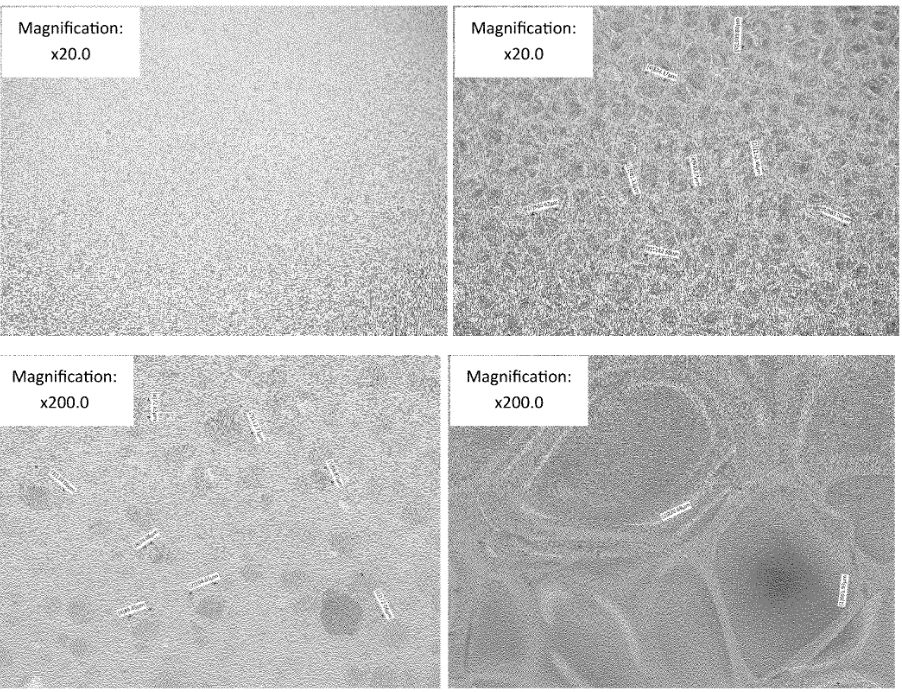
Left: A regular EVA midsole under the microscope, no bubbles.
Right: HyperBurst CO2-infused foam, with its characteristic bubbles that allow the EVA to be lighter and bouncier.
Source: Skechers patent
However, recognizing the obvious limitations of EVA-based foams, Skechers continued its pursuit of a better midsole by introducing HyperBurst Pro, which replaced EVA with TPU, further enhancing the foam's energy return, like Adidas did with Boost back in the day. While this new iteration is a step up from the original HyperBurst—hence the Pro name—it still doesn't quite measure up to be admitted into the premium foams club.
- HyperBurst: Supercritical (CO2) EVA: Soft, lightweight and durable.
- HyperBurst ICE: Supercritical (CO2) EVA: Improved version of the OG HyperBurst.
- HyperBurst PRO: Supercritical (CO2) TPU: Firmer, responsive and heavier.
- HyperBurst PRO (2025): Supercritical (CO2) TPEE: New midsole compound mixed with EVA for durability.

In summary, Skechers' HyperBurst and HyperBurst Pro midsoles are magnificent options for your daily runs, offering lightweight comfort and a fun ride. However, they may not be the ideal choice for those seeking their next PBs.
Despite their progress in foam technology, Skechers still has room for improvement if they aim to compete with any of the premium foams out there, and we wouldn’t be surprised if they launch a PEBA-based HyperBurst foam in the next few years. In fact, we really look forward to it!
New Balance FuelCell [Until 2024] (TPU / EVA)
The Boston-based company, New Balance, introduced FuelCell in 2019. This nitrogen-infused blend of EVA and TPU foam is similar to Skechers' HyperBurst Pro. Other sources point towards FuelCell being either supercritical TPU or EVA.
As previously mentioned, most brands avoid using CO2 to prevent paying licensing fees to Skechers. FuelCell offers approximately 70-80% energy return, which is behind the top-tier foams.
New Balance tends to alter the FuelCell formulation from model to model, resulting in a notably different ride between two FuelCell-equipped shoes. For instance, in our lab, we confirmed that the Rebel v3 is 31.6% softer than its predecessor, the Rebel v2. New Balance representatives also confirmed to us that they make big adjustments in FuelCell between models.
One significant drawback of the old FuelCell (the one manufactured until 2024) is that it becomes considerably firmer in cold temperatures. For example, the SuperComp Trainer becomes 57.4% firmer in cold conditions, while the Rebel v2 experiences a teeth-grinding 115.4% increase in firmness.
Nike React / ReactX (TPE + EVA)
In 2017, around the same time as ZoomX's release, Nike surprised everyone by introducing React. Initially, React was only available in basketball shoes, but a few months later, they launched the well-received Nike Epic React Flyknit. Now, it's everywhere.
React is a combination of Thermoplastic Elastomer (TPE) and EVA. The result is a foam that is resilient, soft, cheap to produce—Nike loves this for sure—and well-suited for training purposes, although it lacks the responsiveness and energy return needed for racing. That’s why Nike uses it for trail running shoes like the Pegasus Trail 4 or in daily trainers like the Pegasus 40.

But, what was the motivation behind React? Well, Nike had been using Lunarlon, a blend of EVA and NBR (Nitrile Rubber) foam, which significantly lagged behind Adidas' Boost technology. While ZoomX was already in production by 2016, its manufacturing costs were extremely high, and it was available only in limited quantities.
So, although React wasn't a groundbreaking revolution, it was a clear step forward for Nike. And we can confirm that React is a great all-rounder!
In 2023, Nike unveiled ReactX, the successor to their React technology. According to Nike's official data, this advanced foam offers a 13% increase in energy return and cuts the carbon footprint by a notable 43%.
Nike Cushlon / Phylon (EVA)
Cushlon 3.0 currently stands as Nike's most favored EVA-based foam for their running shoes, surpassing the use of other materials such as the more economical SR-02, Phylon and the outdated Lunarlon.
Cushlon is essentially an evolved version of Phylon, enhanced by blending it with rubber in unique ratios. This modification not only retains the intrinsic qualities of Phylon but also elevates the cushioning experience, making Cushlon 3.0 a premium choice for runners seeking optimal comfort and performance.
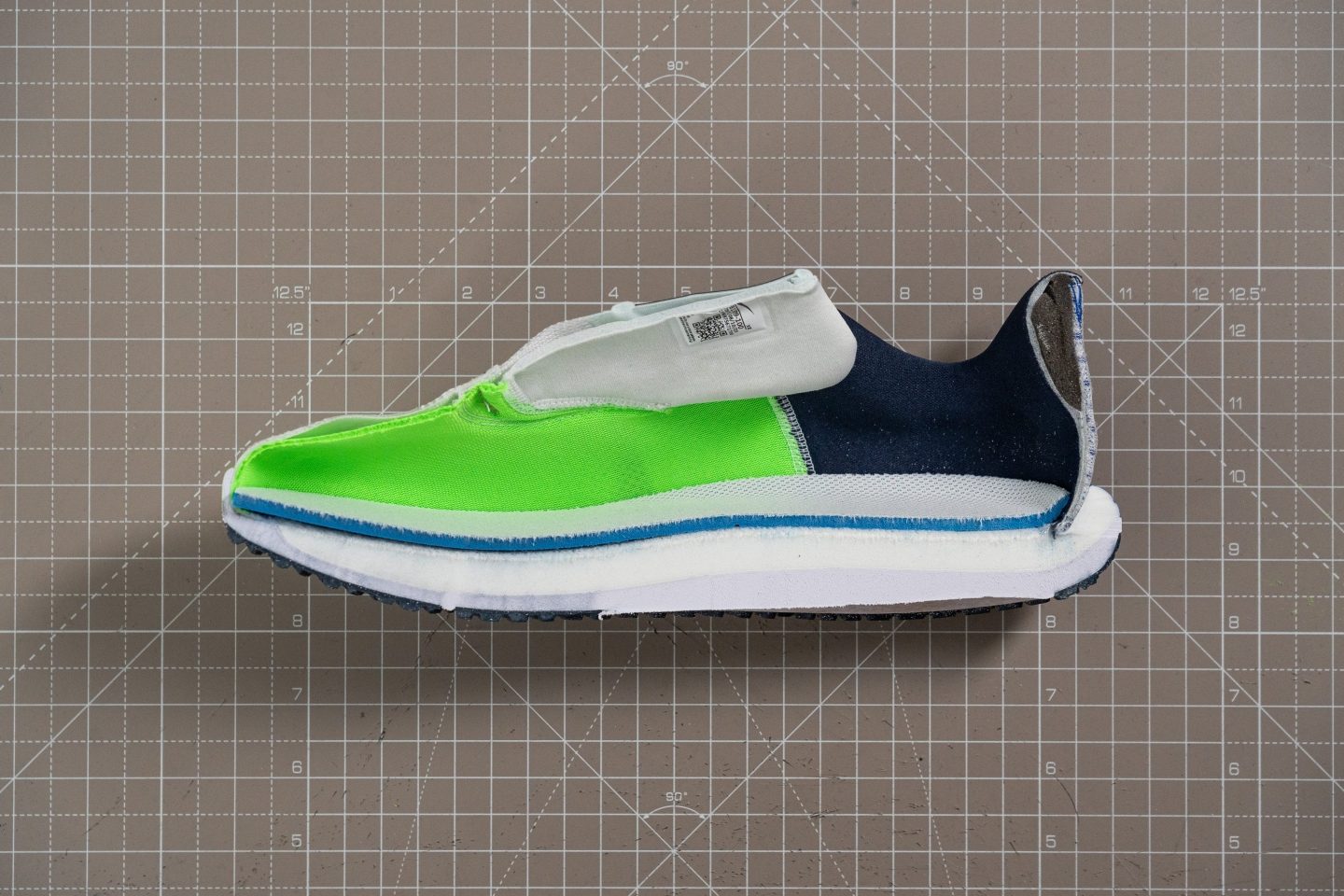
Our tests showed that Cushlon foam is designed to be durable, maintaining its integrity and performance over many miles. This makes it a reliable option for daily trainers like the Nike Vomero 17. We think Nike is going to keep evolving Cushlon, which currently is in version 3.0, because it's really cheap to produce, lasts for enough miles and runners are not complaining at all.
On the other hand, Nike extensively employs Phylon in its footwear lineup, a type of CMEVA (Compressed Molded EVA) crafted from foam pellets. As the process implies, these pellets undergo compression, are then expanded through the application of heat, and finally cooled within a mold to take shape.
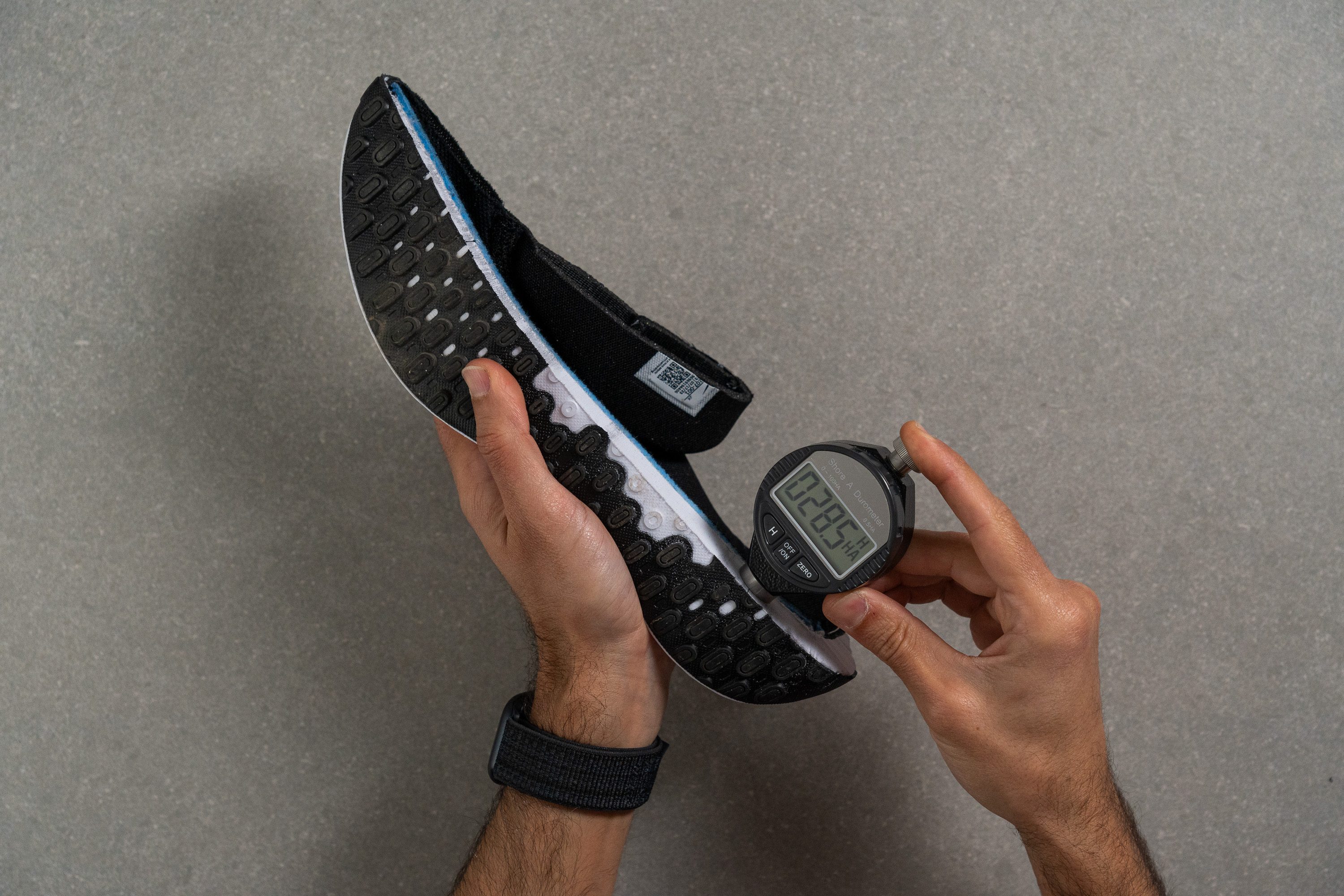
This particular manufacturing technique yields a midsole that not only excels in colder climates, maintaining its performance and comfort, but is also cost-effective to produce. This affordability is a significant advantage, allowing Nike to incorporate Phylon into entry-level, budget-conscious models such as the Revolution 7, although it's specifically tailored for those who prefer a firm feel underfoot.
Nike ComfiRide (EVA)
Nike’s latest addition to its foam lineup is ComfiRide, an affordable EVA-based foam now appearing in shoes retailing under $100. To put it simply, it’s the budget-friendly alternative to ReactX and even Cushlon.
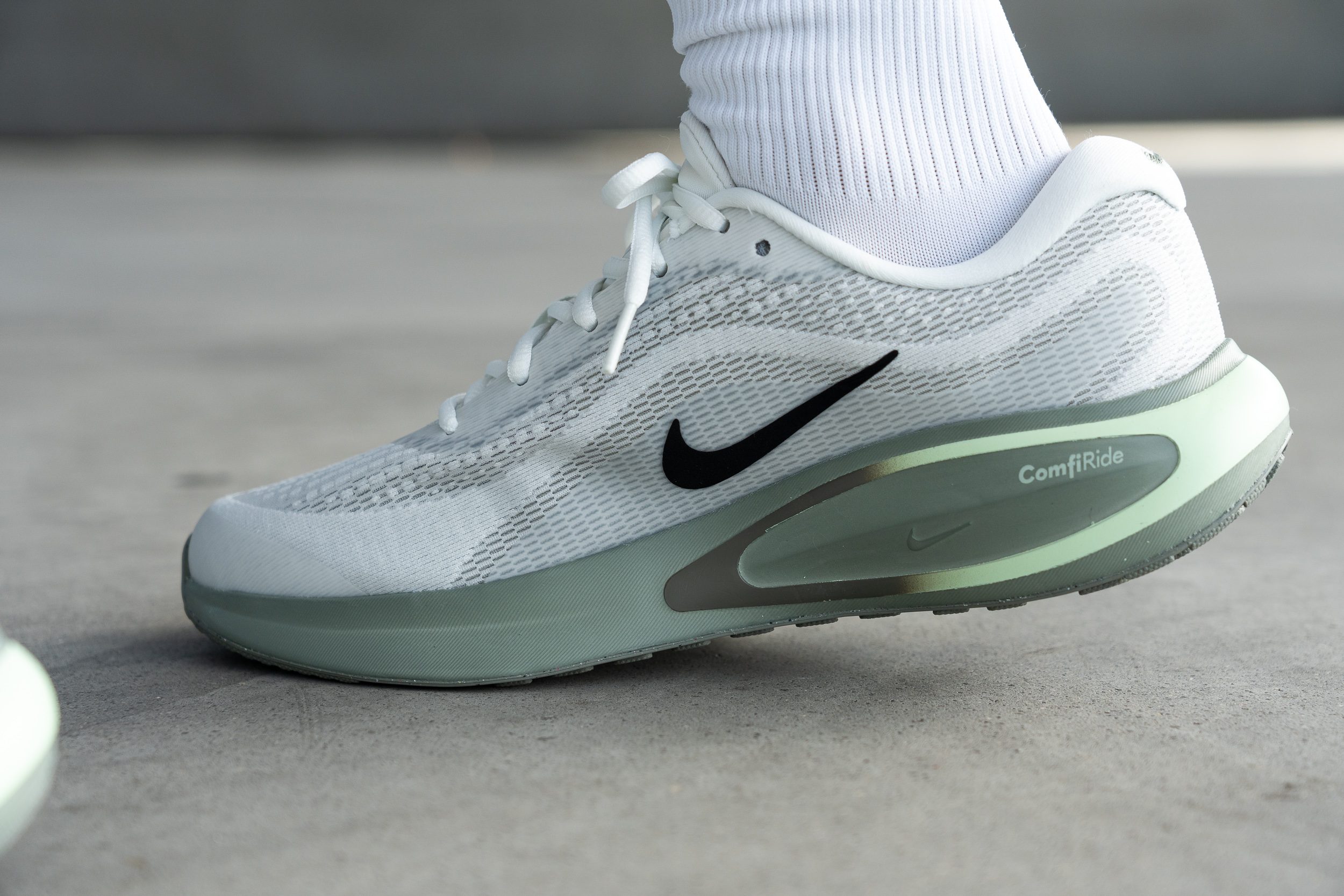
We found that this foam is average in softness and should offer good durability, performing reliably without major issues. However, it falls short in energy return, which is expected for its price point. Currently, Nike has only included it in a few models, but we’re eager to test it in more shoes in the coming years and update our findings.
Adidas Boost (TPU)
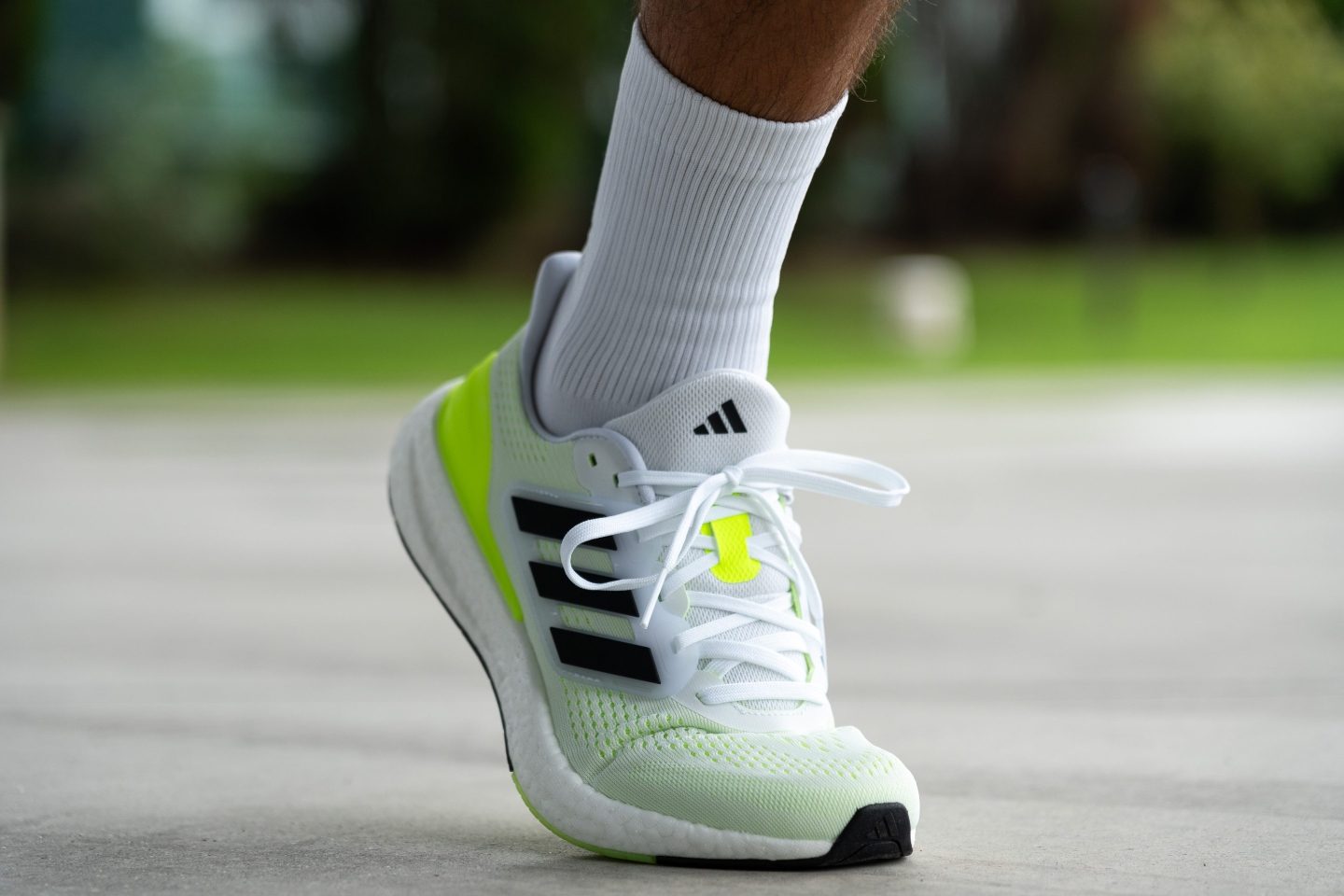
Though it might not seem significant today, the Boost revolution was a game-changer in its time. It clearly outperformed all EVA-based foams and led to numerous long-distance records, such as Dennis Kimetto’s out-of-this-world and perhaps underrated 2:02:57 marathon time in Berlin 2014 while wearing the Adizero Adios Boost 2, or Joyciline Jepkosgei's 1:04:51 at the Valencia Half Marathon in 2017 with the Adizero Adios Boost 3. Now, let's talk about Boost!
Boost is not an Adidas invention, but rather one created by BASF (Badische Anilin und Sodafabrik), the world's largest chemical company. They were experimenting with an innovative technology called Infinergy, based on TPU (thermoplastic polyurethane), which delivered promising results. Adidas recognized the potential of this cutting-edge pellet-based method for creating a midsole when BASF presented it to them, and they just embraced the technology.
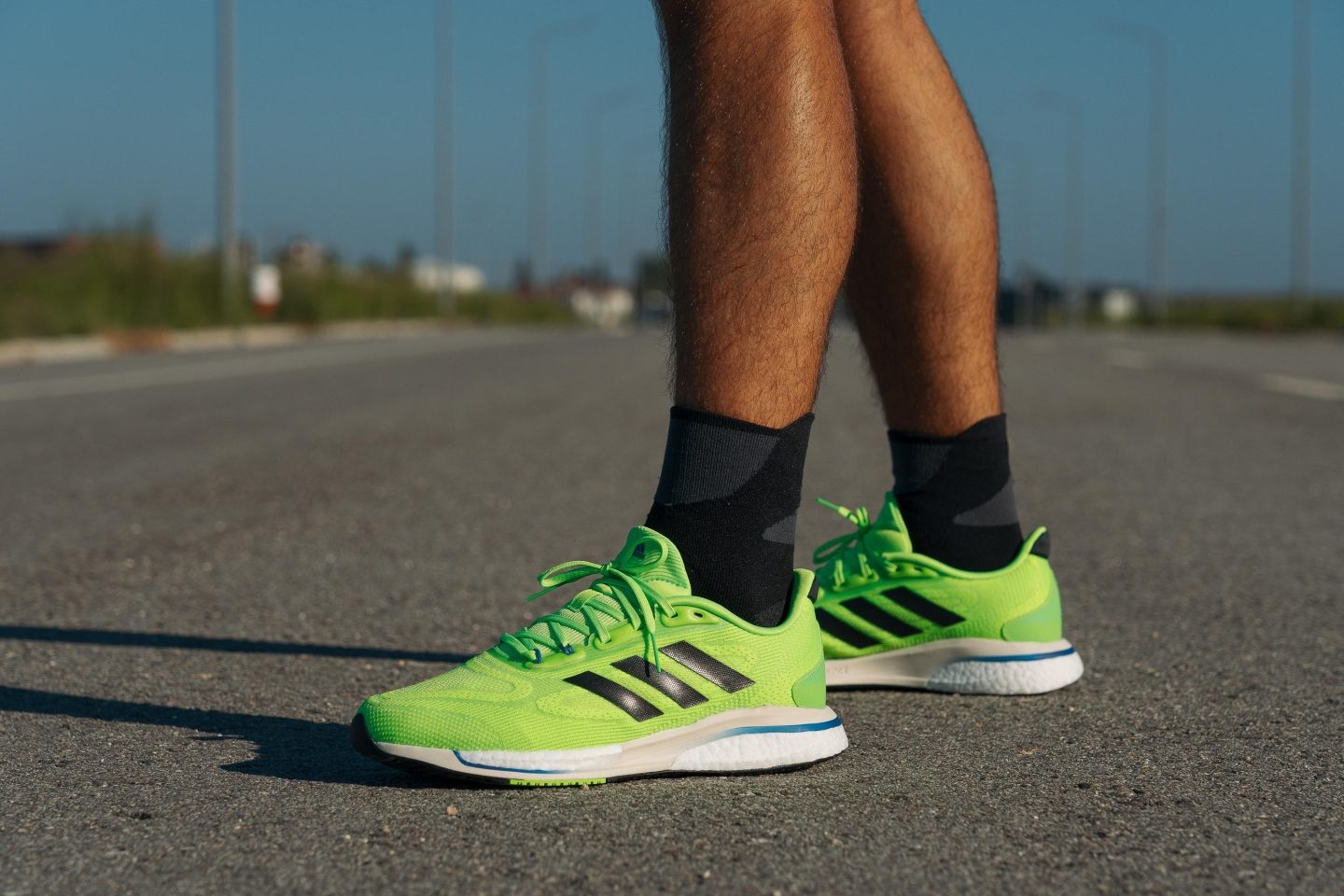
By today's standards, Boost is a comfortable-but-heavy midsole. However, back in 2013, it was a complete revolution, comparable to how we viewed ZoomX in 2017—it simply had no rivals. It was bouncy, soft and durable.
Although Adidas still utilizes Boost in some running shoes and in their sneakers and casual kicks, it is now considered somewhat obsolete for running, particularly due to its weight. That's why Adidas recently introduced the new, lighter, and less dense Light Boost evolution.
Adidas Light Boost (TPU)
"Better late than never" was our first thought when Adidas introduced the successor to Boost in 2023, named Light Boost. This new development is key because the primary issue with the original Boost was its weight. Adidas has now crafted an airier version of Boost that's 30% lighter.
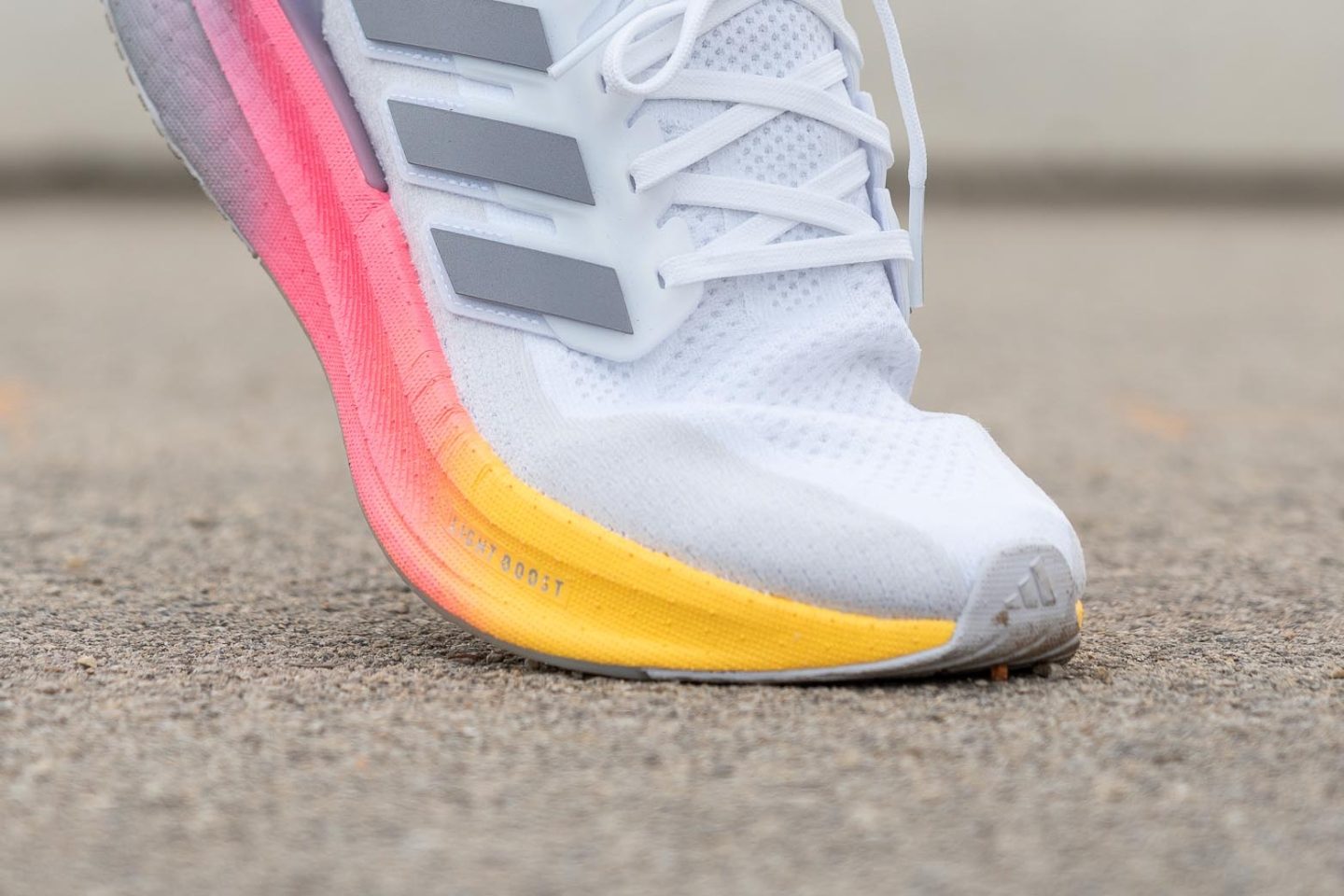
And it truly lives up to its name. In our lab tests with the Ultraboost Light and the Ultraboost 5, we confirmed its reduced weight. Although it arrived on the market three or four years later than ideal, it's exactly what we hoped for—the same durable and dependable Boost, just 30% lighter!
Adidas Lightstrike (TPU) / Lightstrike EVA (EVA) / Lightstrike 2.0 (EVA)
When Adidas introduced Lightstrike to the world, they launched and marketed it as a TPU foam. Then, suddenly, they switched their minds and declared that Lightstrike was actually EVA:
- TPU: In the official press release for the Adizero Pro—which was a total flop—, the brand stated, "Lightstrike combines energy return and stability into one of the lightest TPU foams on the market."
- EVA: While promoting the brand new Adizero SL in another official press release, they said, "The lightweight Lightstrike EVA midsole frame provides maximum cushion and protection to the midsole construction."
- EVA: In 2023, Adidas launched Lightstrike 2.0, a new softer compound that will be featured in shoes like Adios 8 or Boston 12.
Some people believe that it's all the same EVA-based compound, but initially, it was mixed with some TPU, and now it's only EVA. While that's possible, we're inclined to think that the Germans simply changed their minds and switched from full-TPU to full-EVA, and that's why they're currently calling it Lightstrike EVA.
Unfortunately, all versions of Lightstrike are rather firm and dull, lacking bounciness and will only please those looking for a super-stable old-school ride.
Adidas Dreamstrike+ (PEBA)
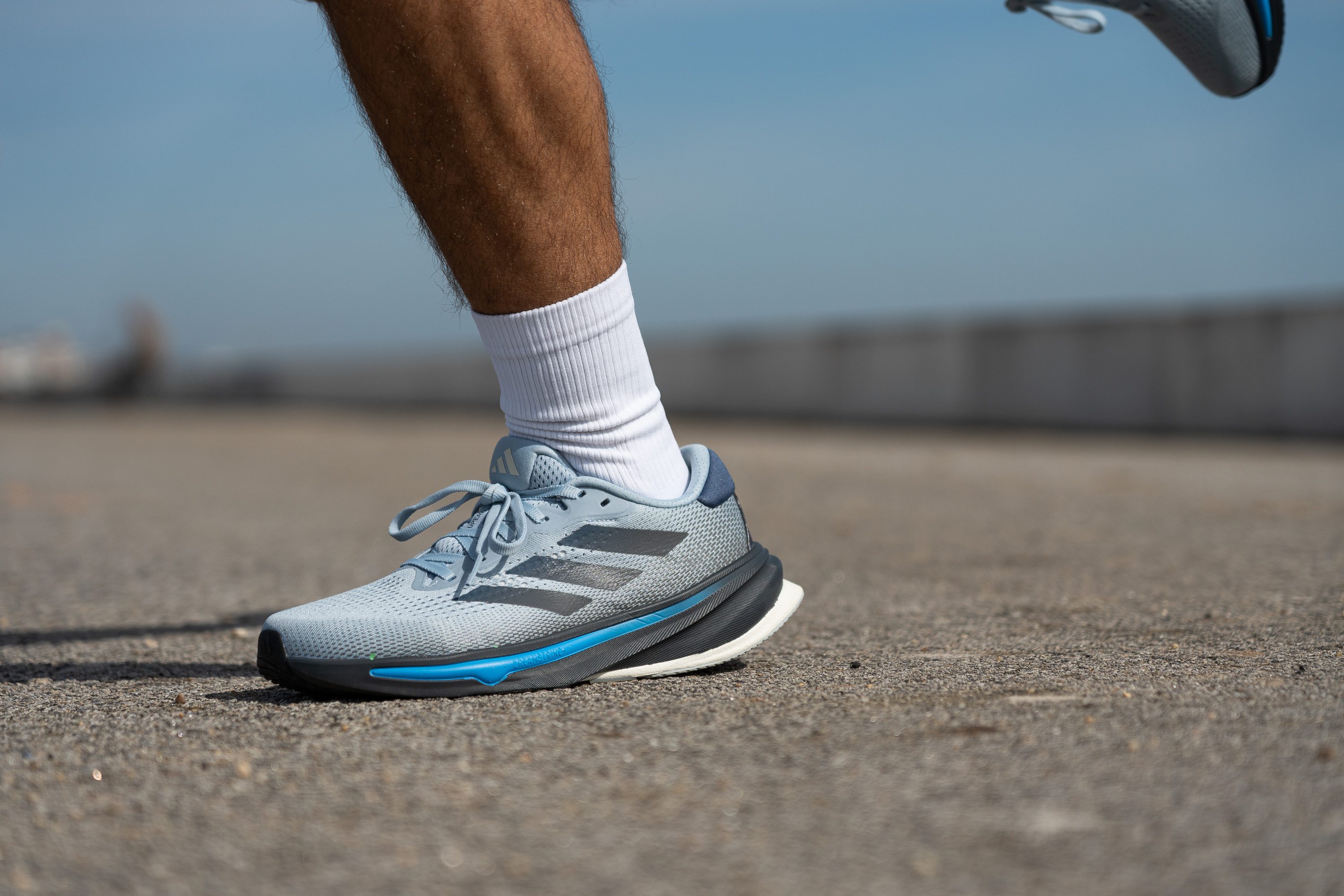
You might be surprised to see us not categorize Adidas' PEBA-based Dreamstrike+ among the elite foams, but that's exactly where we stand with it.
The initial buzz around Dreamstrike+, featured in the Supernova Rise, was palpable—finally, a PEBA foam in an accessible daily trainer from Adidas! Yet, we found it more akin to TPU or supercritical EVA foams, lacking the standout energy return of counterparts like Lightstrike Pro or ZoomX, positioning it as a standard foam in our eyes.
Still, it marks a significant stride for Adidas. Dreamstrike+ boasts comfort, reasonable energy return, and impressive durability. Plus, with 20% bio-based content and a modern feel distinct from Boost, it's a noteworthy advancement in the right direction.
ASICS FF Blast / FF Blast+ (EVA + OBC)
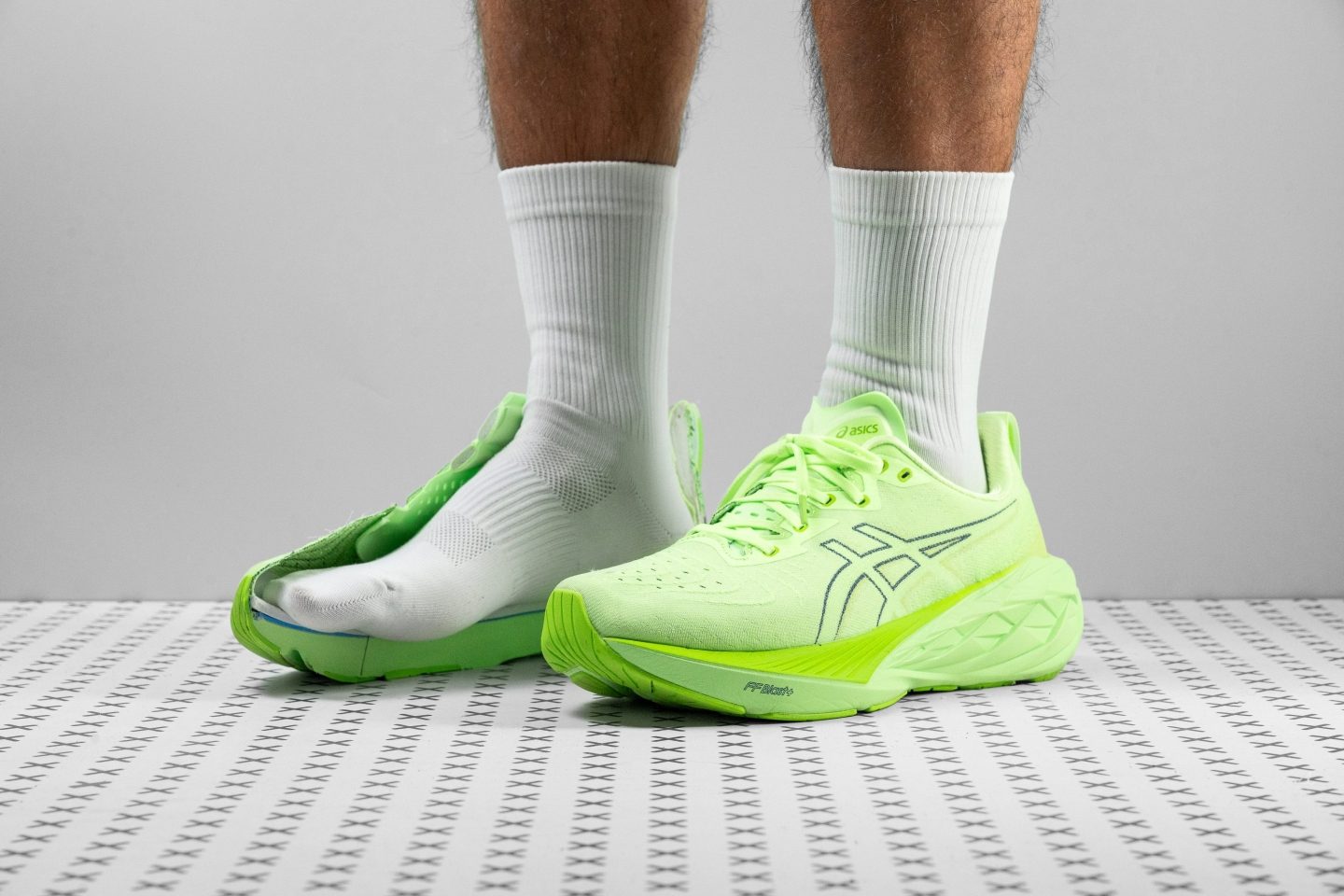
Years before Nike disrupted the running shoe market, ASICS was a strong competitor to Adidas' Boost technology, back in 2014. The Kobe-based brand ingeniously improved EVA properties to a level that we’re sure that, in a blind test, most runners would not recognize as EVA foam. Instead, they achieved this by blending EVA with OBC. But what the hell is OBC?
OBC, or Olefin Block Copolymers, is a thermoplastic elastomer known for its elasticity and toughness. ASICS mixes EVA with OBC to increase the elasticity of their FlyteFoam Blast foam, which in turn provides a more responsive and springy feel while running.
ASICS obtained the rights from Michigan-based company Dow to combine EVA and OBC technology, a patented method developed by Dow to enhance running shoe foams. To further improve resilience, the Kobe-based engineers cleverly incorporated Kevlar—a synthetic fiber used in bulletproof vests, which is renowned for its strength and durability—into the midsole. The result is a lightweight, bouncy, and fun foam that weighs up to 55% less than a standard EVA midsole. That’s how ASICS managed to deliver light-but-tall shoes like the Novablast 4.
ASICS FF Blast MAX (POE)
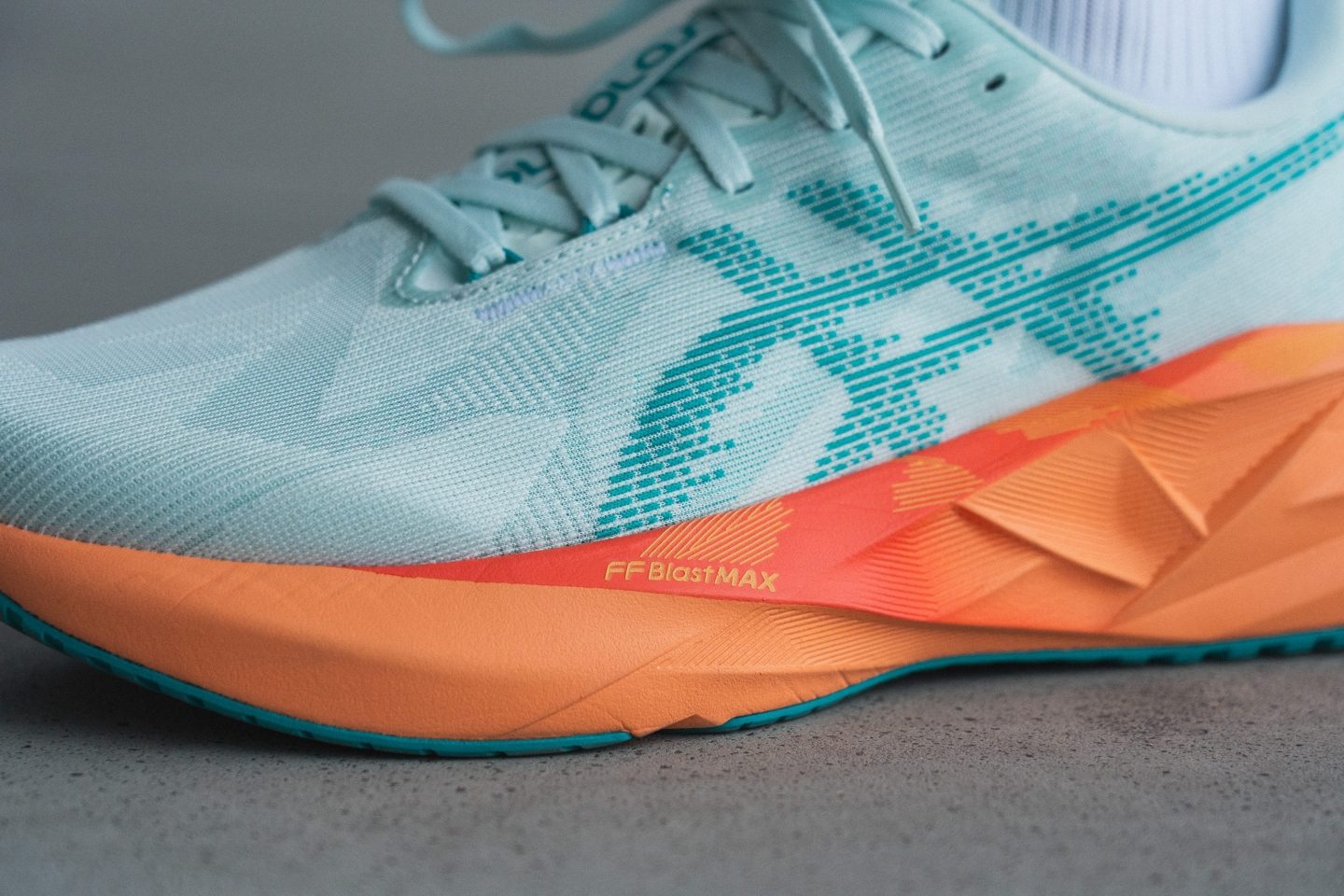
With every brand innovating in training foams, ASICS clearly took the hint and moved beyond FF Blast+, a staple for the past two years, to introduce a new version: FF Blast MAX.
We tested this new foam in the ASICS Novablast 5 and found that, under the microscope, it closely resembles FF Blast+ and FF Blast+ ECO. However, ASICS claims an 8.5% improvement in energy return, and we think it's true, as we felt it not only softer but noticeably more energetic. That’s because it’s made from POE (Polyolefin) instead of EVA + Olefin.
POE foam is a soft, durable material with excellent compression resistance and cold-weather performance. It’s also bouncier than raw EVA, and we expect to see POE foams in many other brands in the coming years.
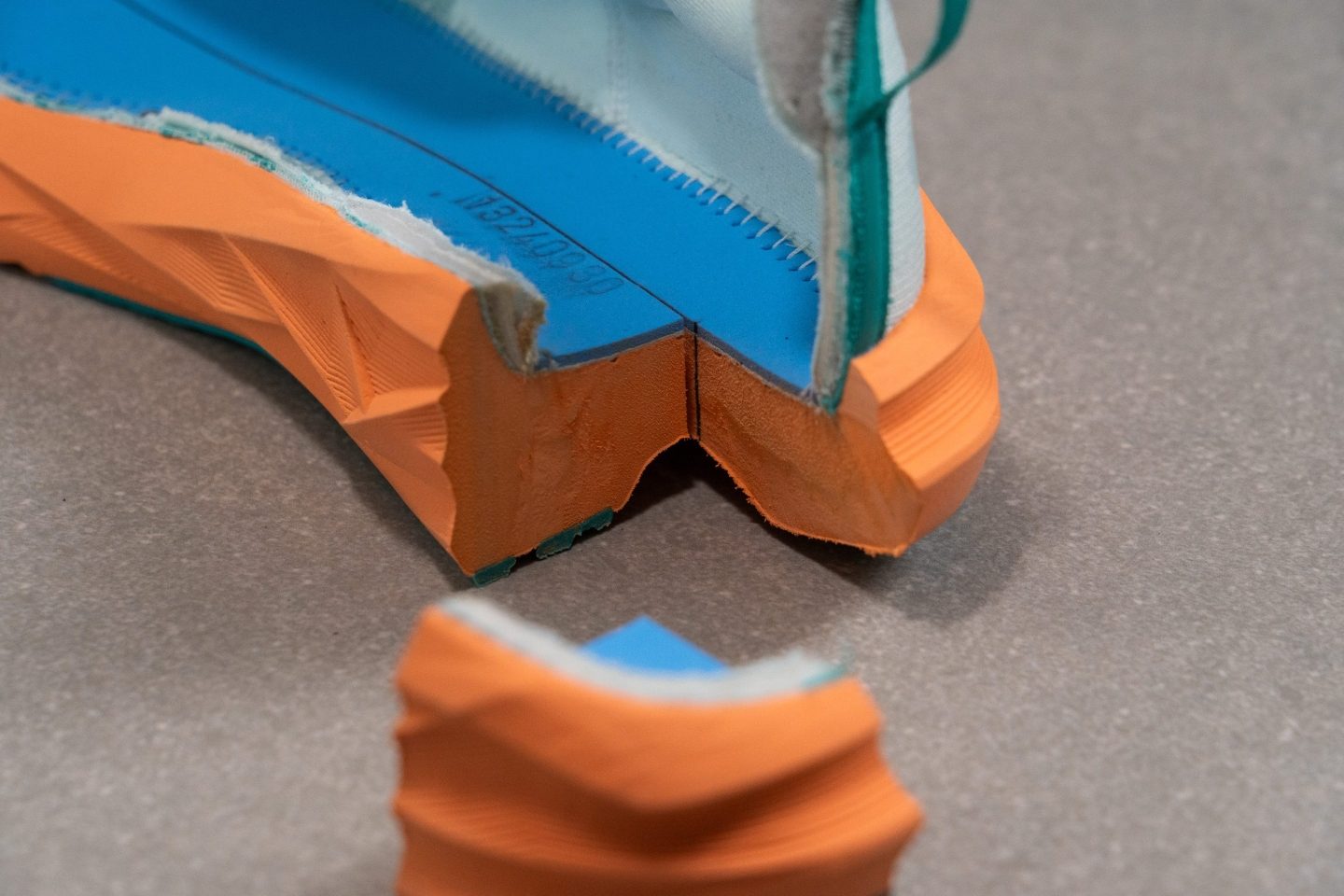
We’ll see what the future holds for FF Blast Max as it just started its journey, but it’s likely to follow the path of FlyteFoam, FF Blast, and FF Blast+—lasting 2 to 3 years in best-selling models before being replaced by a new or upgraded compound.
ASICS FlyteFoam (EVA)
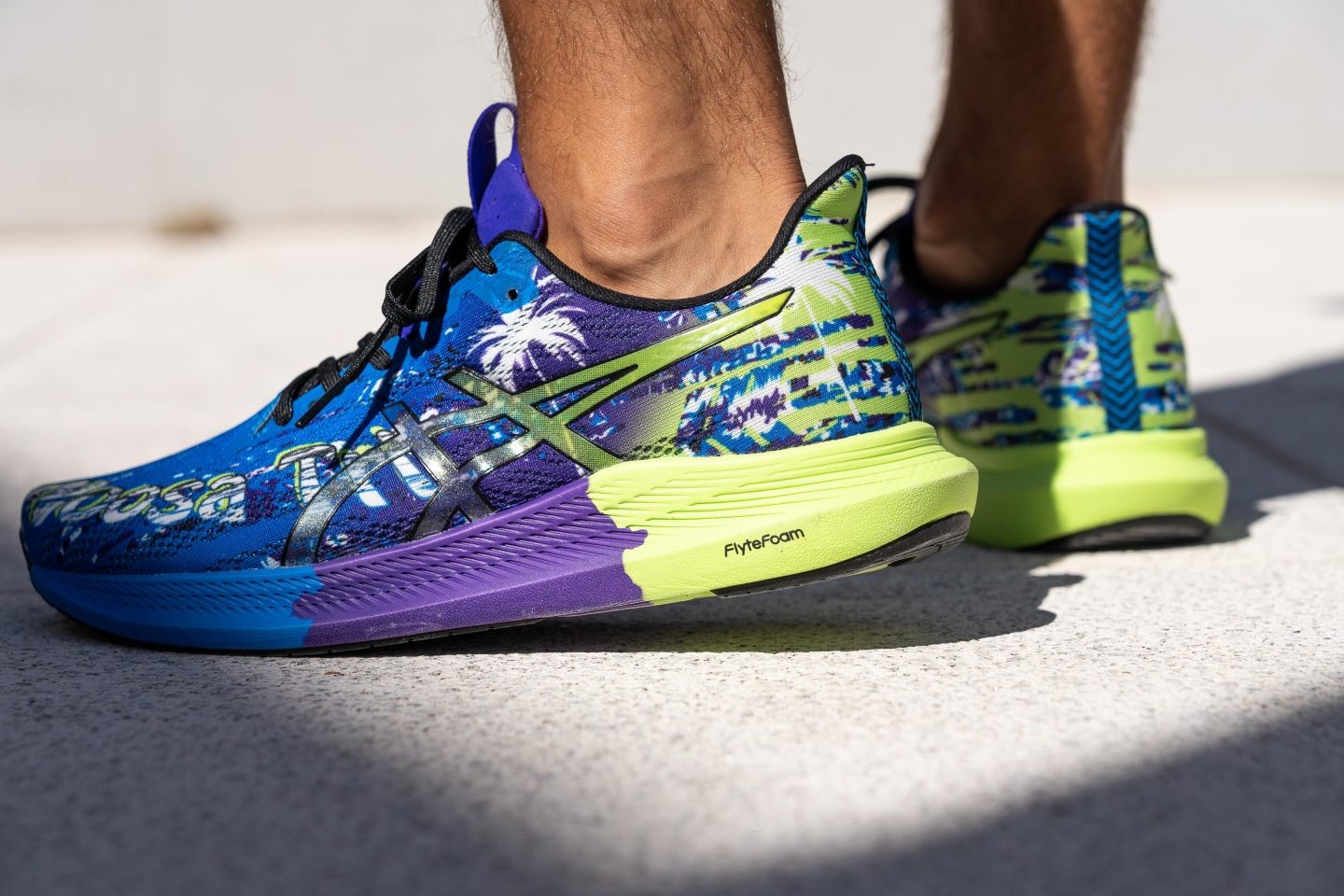
FlyteFoam, along with its Lyte and Propel variations, are EVA-based foams combined with ecological polyethylene to create an ultra-lightweight yet durable foam. In other words—a better EVA. This midsole boasts an incredibly low density, making it lighter than FF Blast and FF Turbo, but with a trade-off of reduced bounce and energy return. As a result, it's ideal for entry-level shoes and ultra-lightweight models like the jaw-dropping Asics Noosa Tri 14.
Various ASICS running shoes feature FlyteFoam, and the Japanese company modifies the formula for each model, adjusting the softness or firmness to suit the shoe's purpose, whether it's for long-distance runs, stability, or triathlon.
AmpliFoam / AmpliFoam+ (EVA)
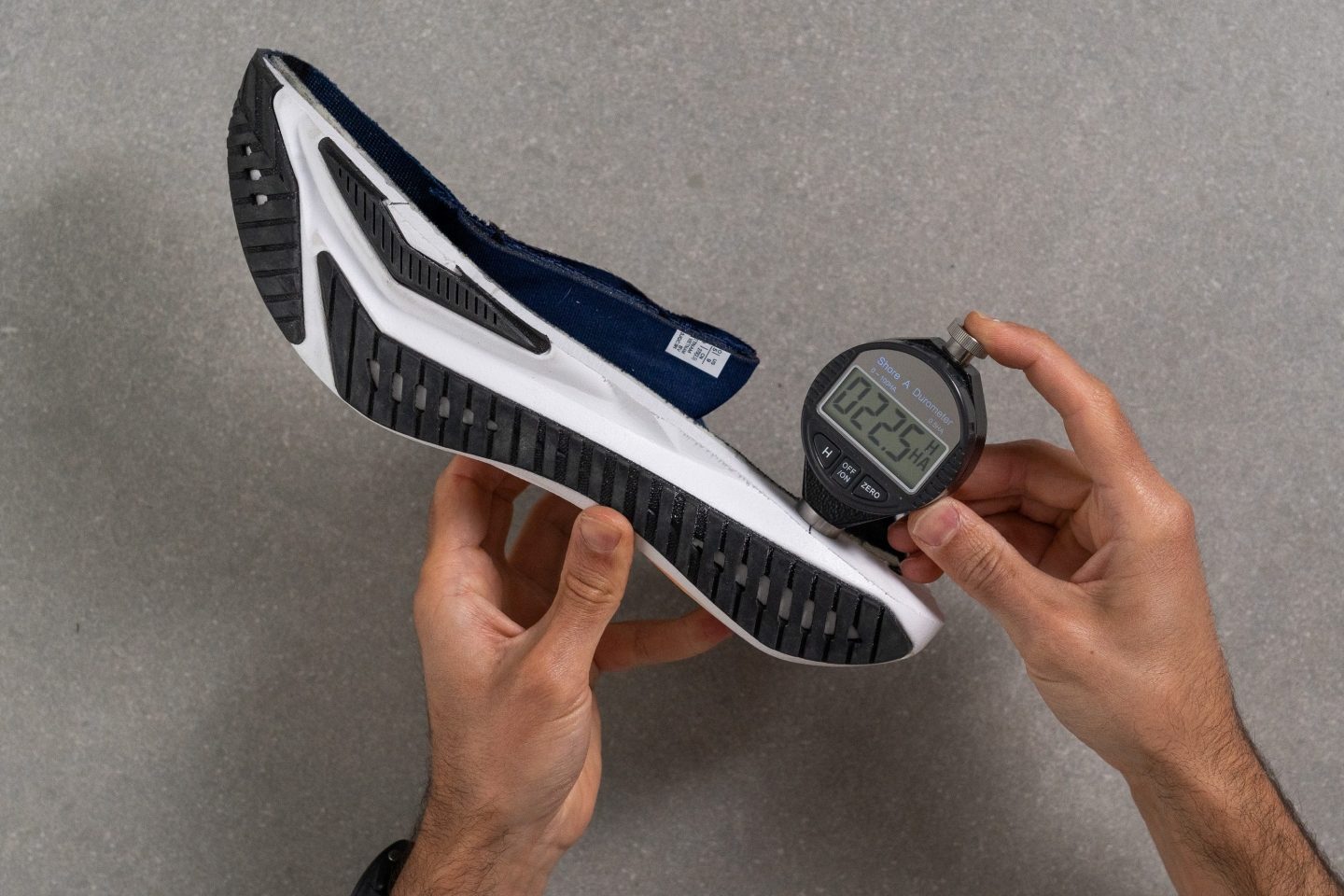
Like every brand, ASICS needs a budget foam for shoes priced around or below $100—like the Versablast 4—and that role goes to AmpliFoam or its updated version, AmpliFoam+.
It sits below the FlyteFoam lineup in performance, but considering the price, it’s a solid choice. It doesn’t come with fancy tech, yet it’s one of the best EVA-based foams in affordable shoes. While the energy return won’t blow you away, it’s perfectly acceptable for daily training at this price point.
Brooks DNA Tuned (EVA)
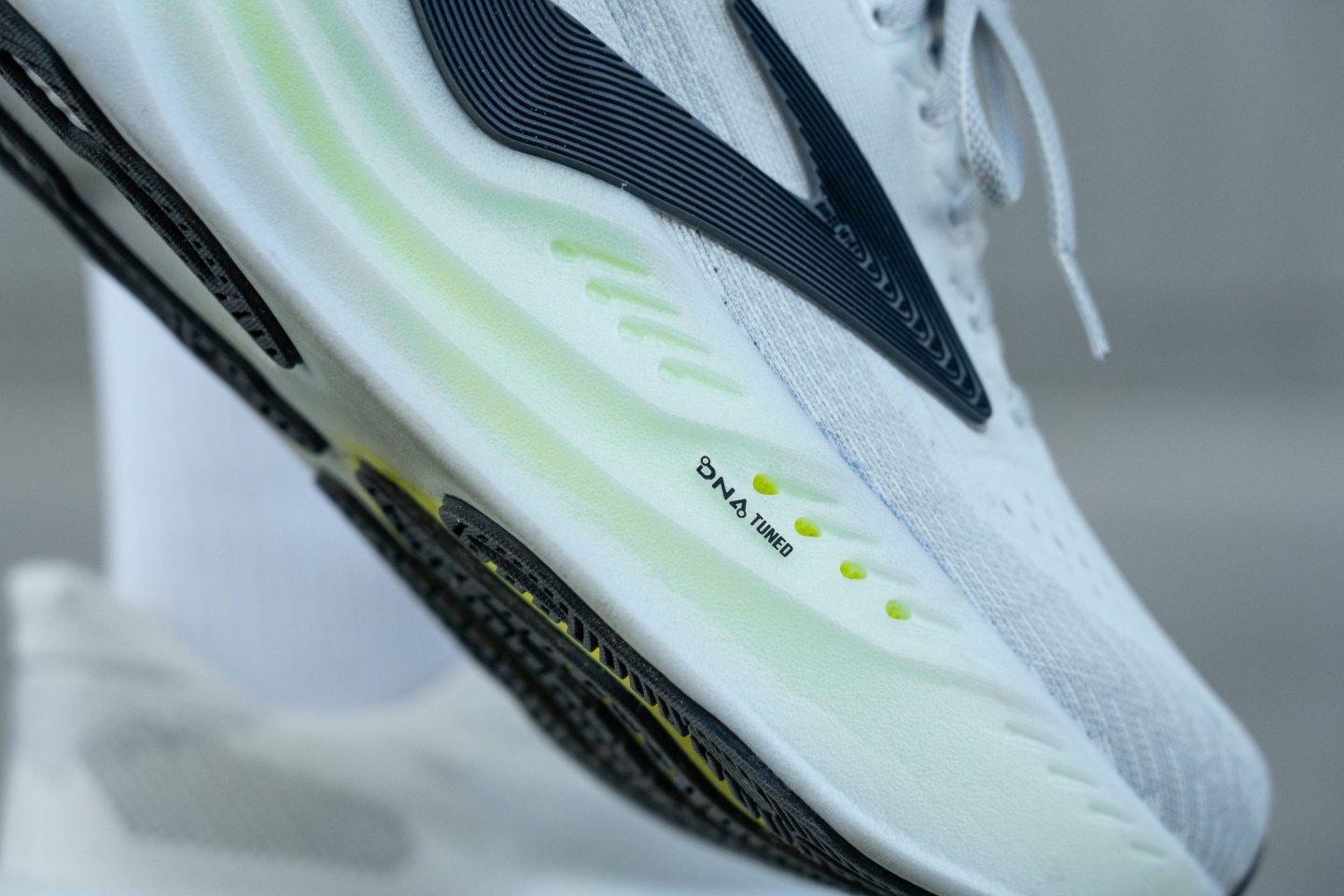
Innovating in running shoe foams has become a real challenge after recent breakthroughs like Pebax and A-TPU. But in 2024, Brooks stepped up with DNA Tuned (nitrogen-infused EVA) in the Glycerin Max, which we purchased and tested in our lab. So, how did they do it?
Brooks followed the trend set by brands like ASICS and Nike, blending two different foams in one midsole—but with a twist. Unlike others, Brooks seamlessly merged the two layers without using glue, resulting in a single slab that improves durability and reduces environmental impact during production.
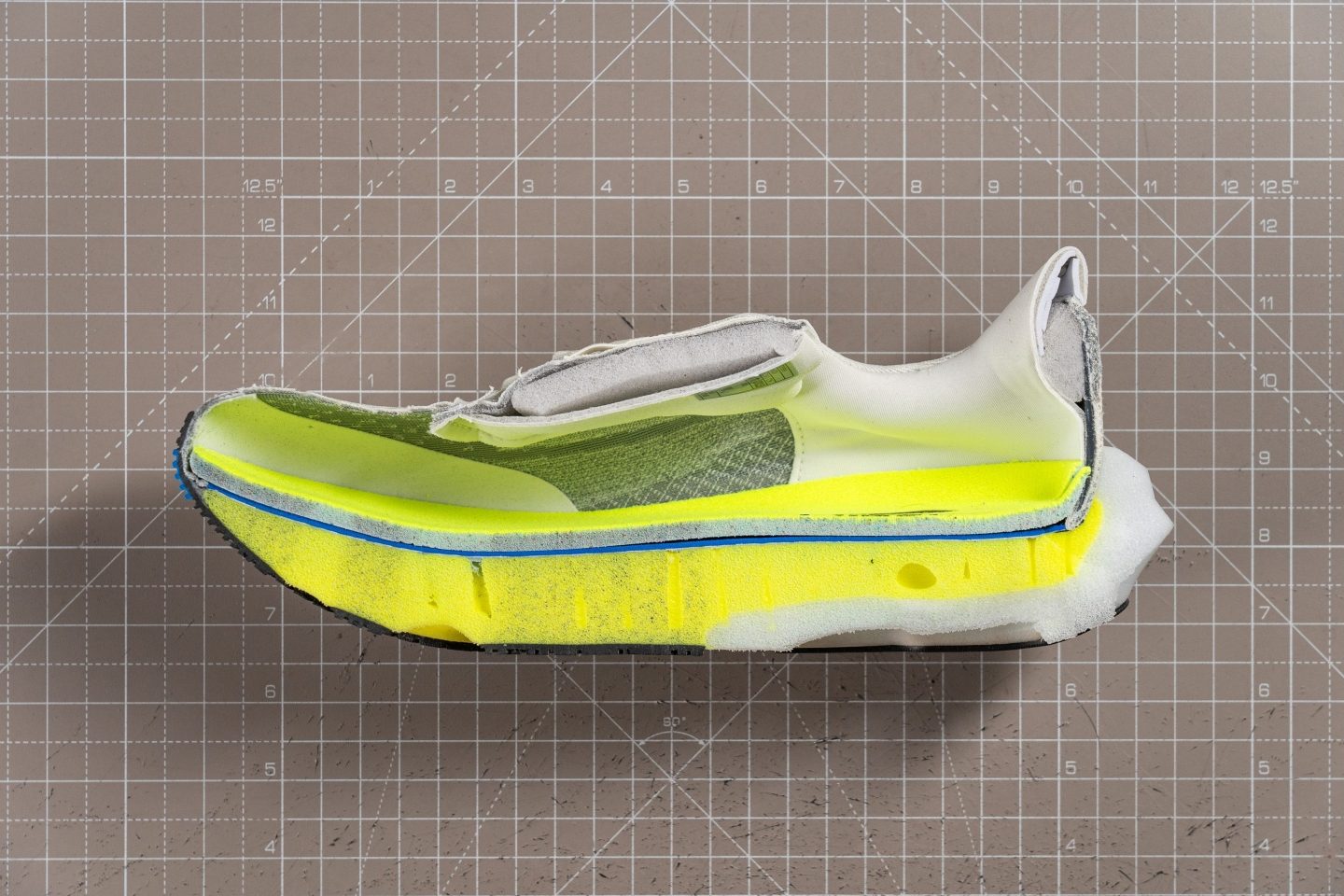
The yellow section feels firmer and more responsive, while the white section is softer and more cushioned. Check it out under our microscope! The white foam on the right has an airier, uniform cell structure, offering a softer, cushion-focused feel under the heel.
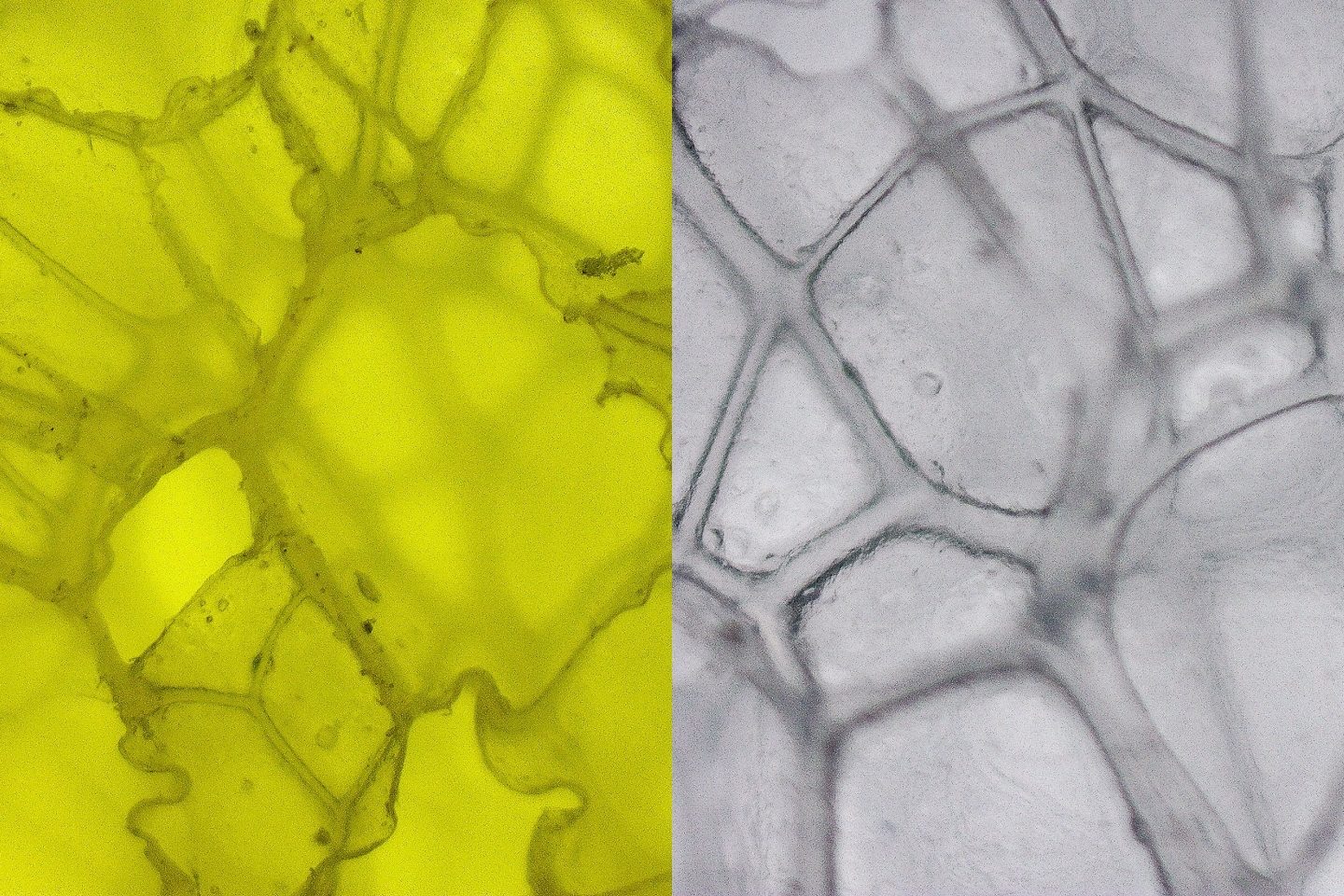
But Brooks’s bold claim that “DNA Tuned is redefining running shoe cushioning” is so exaggerated. While impressive as the first glue-free, dual-density midsole, it doesn’t match the groundbreaking impact of Pebax and other premium foams. It’s a nice step forward—just not a game-changing leap.
Brooks DNA Loft (EVA) / DNA Flash (EVA) / DNA Amp (TPU)
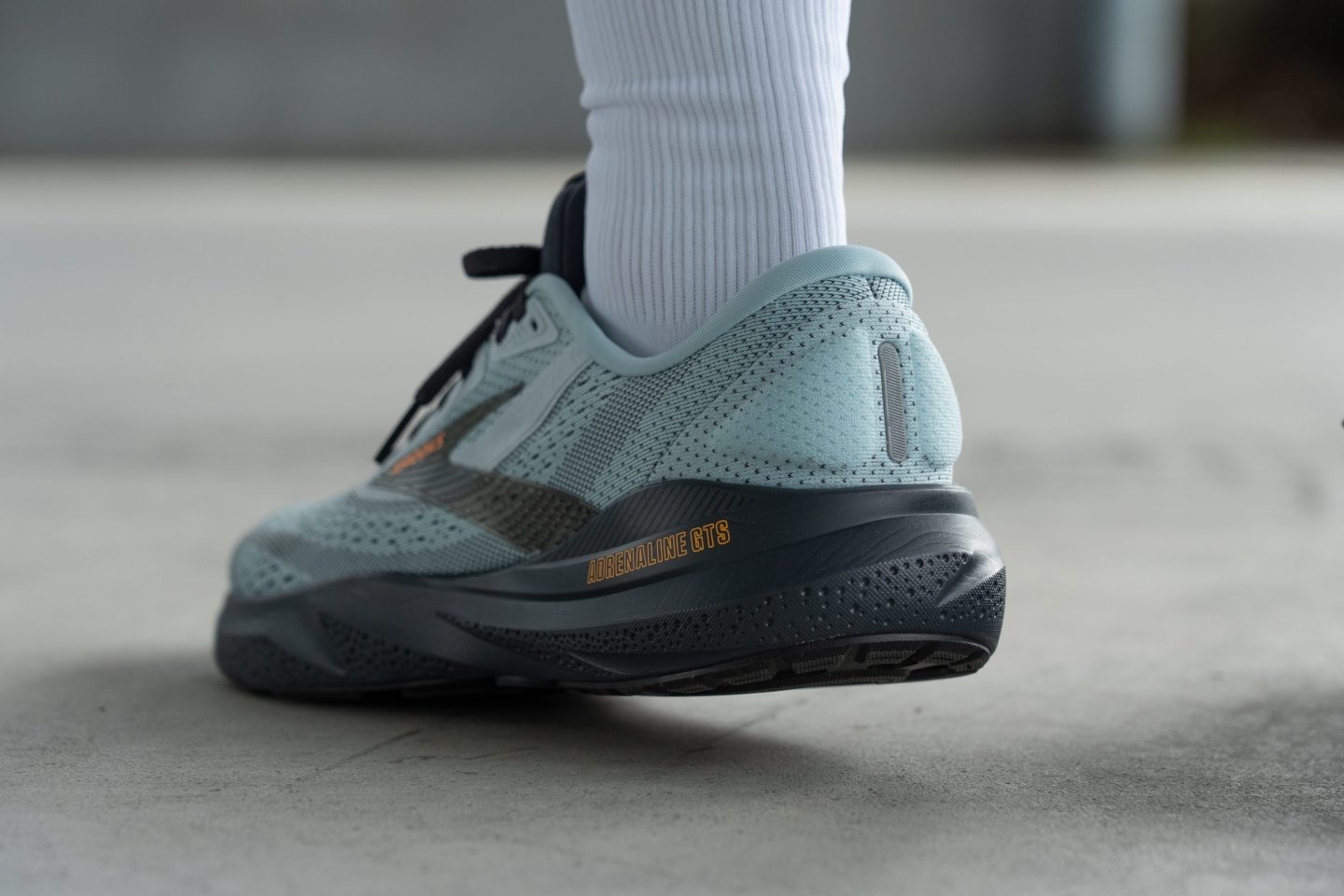
Brooks, a classic American brand, has yet to develop a premium foam or create an authentic racing shoe, placing it in a situation quite similar to Skechers. With that said, their lineup of standard foams is great, featuring three options that we've ranked from least to most bouncy:
- DNA Loft: This EVA-based midsole is a staple in Brooks' offerings. By blending EVA with rubber, they've managed to enhance durability and stability, making it a solid choice for everyday runs when you don't require excessive cushioning. This is why you'll find DNA Loft in widely popular shoes like the Ghost 14 and Glycerin 20. Brooks also offers the Nitrogen-infused DNA Loft v3, offering a foam that's both lighter and more responsive than v2.
- DNA Flash: Following Skechers' lead, Brooks opted to upgrade the midsole by infusing it with nitrogen gas—avoiding CO2 to dodge licensing fees payable to Skechers. This infusion results in a lighter, more responsive, and snappier version of DNA Loft. As a speedier foam, you'll find it in faster shoes like the Hyperion Tempo. Brooks also introduced DNA Flash v2 in 2024, although it remains a subpar foam in terms of energy return despite its improvements.
- DNA Amp: Introduced in 2018, this third DNA variation is not an EVA foam but a TPU foam, similar to Adidas' Boost or Saucony PWRRUN. When compared to DNA Flash, it provides greater energy return but comes in a slightly heavier package, making it unsuitable for racing shoes but perfect for training models like the Levitate 6.
As we mentioned previously in relation to Skechers, we firmly believe that Brooks will introduce a high-performance foam in the coming years. They need one; with a respectable roster of US-based elite athletes, it's unfortunate that they're currently competing at a technological disadvantage.
Brooks BioMoGo DNA
Brooks may not have a premium foam out yet as we said just before, but we've got to give them credit for their impressive lineup of standard midsoles. One standout is BioMoGo DNA, a unique EVA-based foam that combines two of Brooks' own technologies: BioMoGo and DNA.
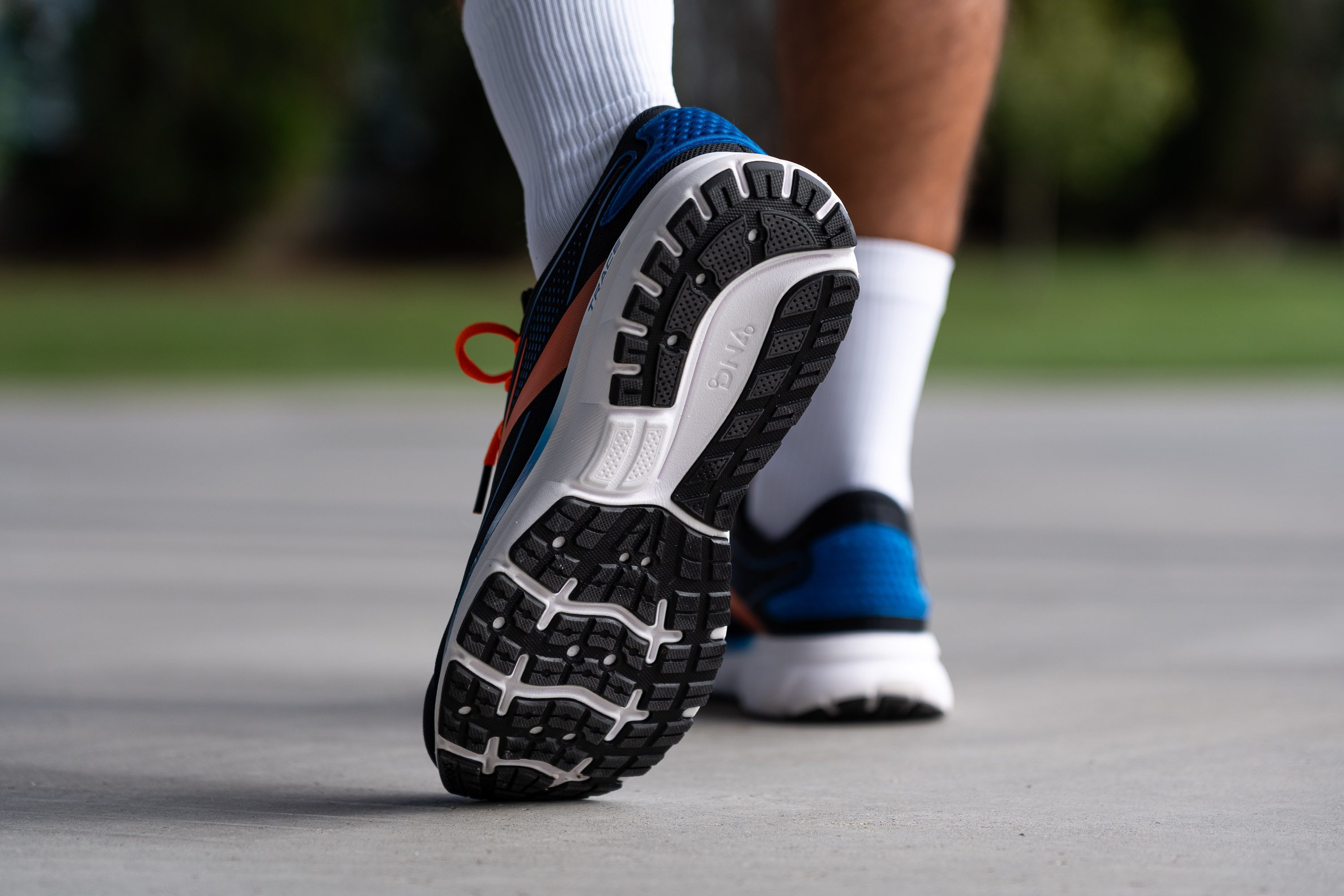
What sets this midsole apart is its comfort and performance in cold temperatures. Unlike most EVA foams, it doesn't become firmer or stiffer when the mercury drops. In our lab review of the Brooks Trace 2, we observed some of the best performance metrics we've ever seen in running shoes at cold temperatures—and this is in a $100 pair!
As a bonus, the "Bio" in BioMoGo DNA means it's a biodegradable midsole that breaks down 20 times faster than your typical foam.
Diadora ANIMA / ANIMA N2 (EVA)
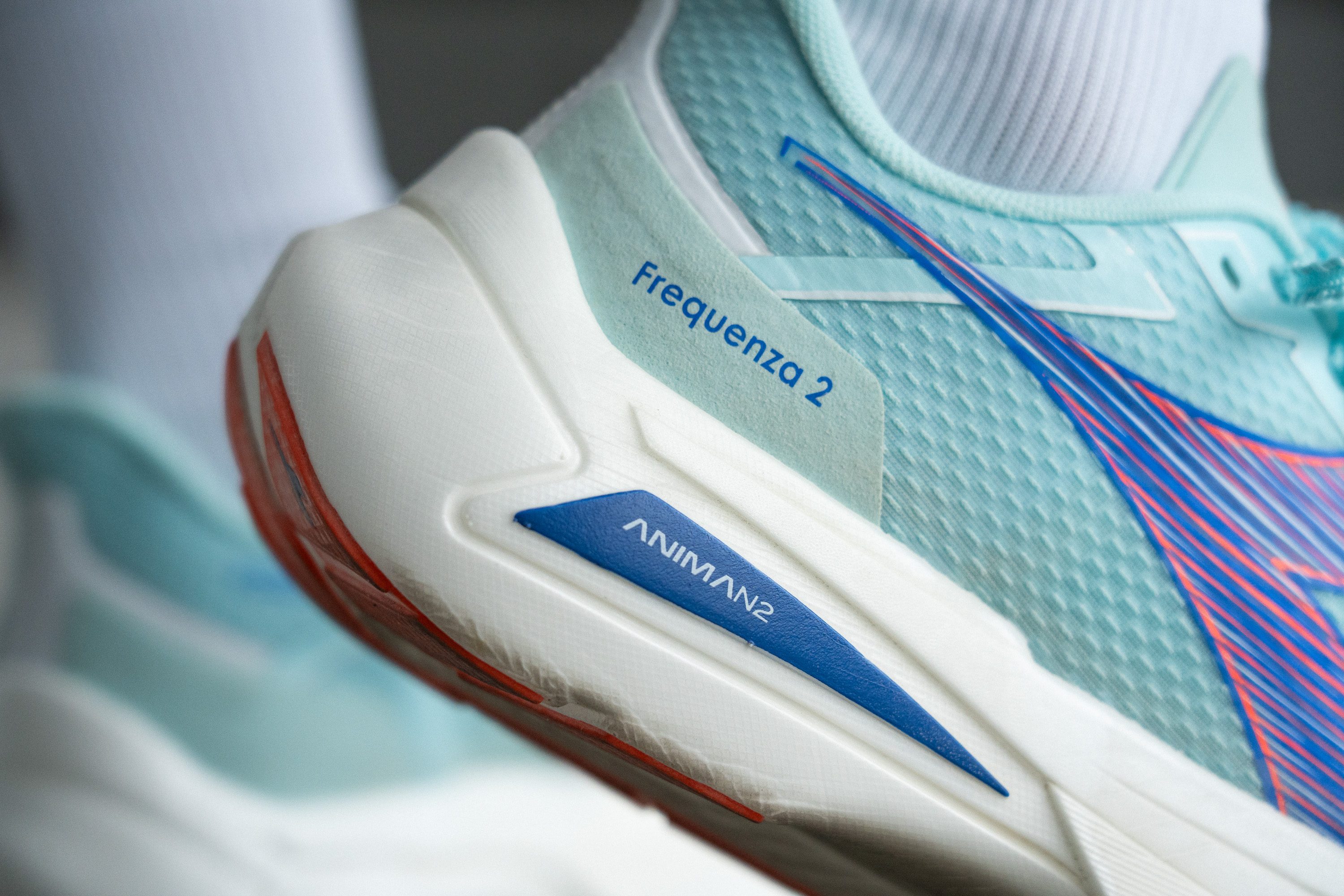
Diadora may not be the most recognized brand outside Italy, but they are steadily working to expand in the European market (where they were once renowned for their soccer shoes) and in the US as well. To achieve this, they are producing shoes with impressive build quality, and their daily trainers feature either ANIMA or ANIMA N2 foam.
Both foams are made from EVA, with ANIMA N2 being slightly lighter and more responsive due to its nitrogen infusion. In the Diadora Atomo Star, we found that despite being supercritical EVA, the energy return was still below expectations for a shoe at such a high price point, a result that was slightly improved with the Frequenza 2.
Mizuno Enerzy NXT (EVA / TPU)
In 2024, Mizuno introduced a new foam that initially didn't excite us—another EVA-based material, which hardly seemed like a leap in innovation. However, Mizuno assured us of its high quality, comparing it to the elite Pebax-based foams.
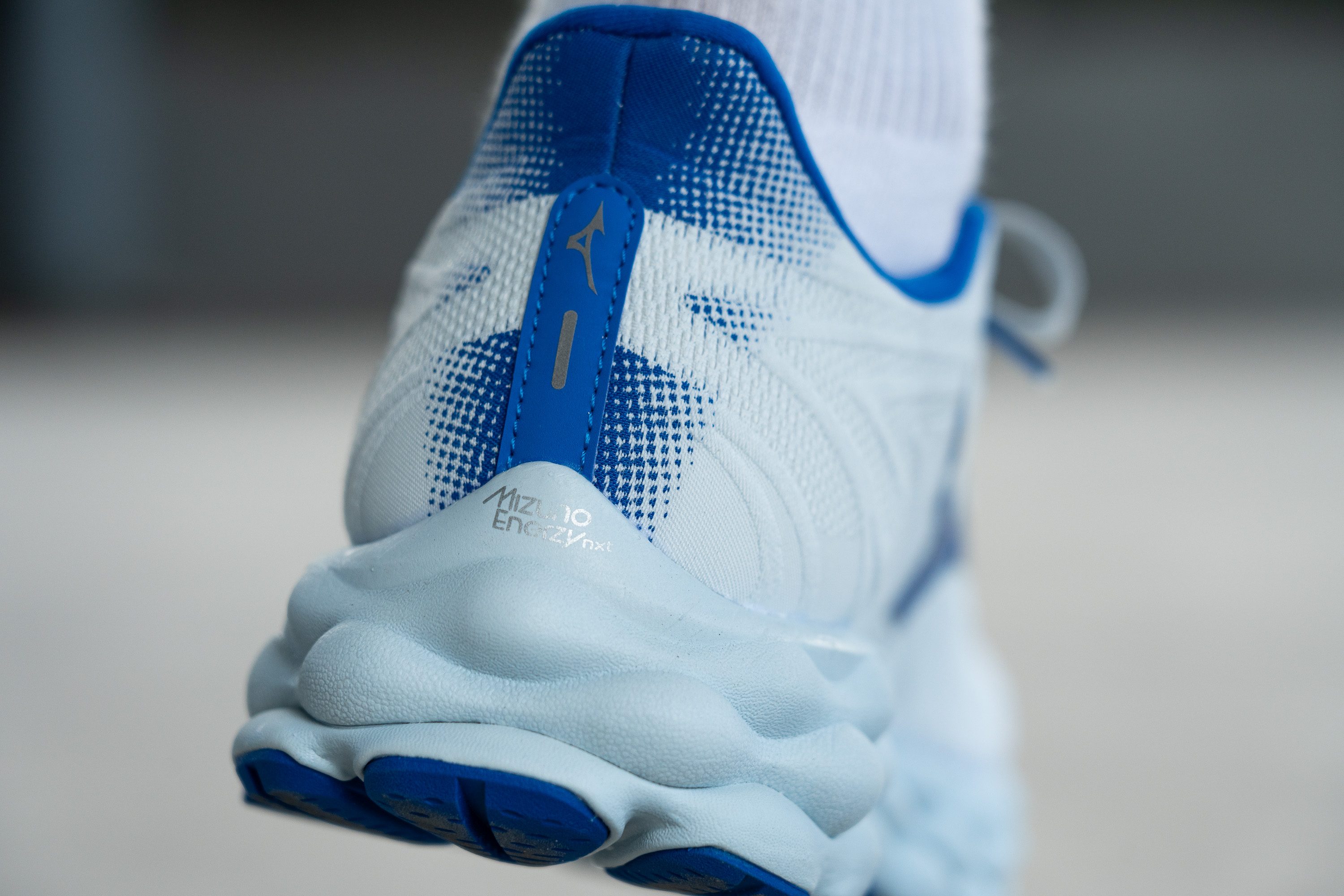
Upon testing it with the Mizuno Wave Sky 8 in our lab, we were pleasantly surprised. This wasn't just another run-of-the-mill EVA; it was exceptionally soft, and significantly more enjoyable. However, energy return was still quite low with only 56.5% in that model.
Later in 2025, Mizuno upgraded Enerzy NXT to a supercritical TPU formulation instead of EVA. That’s great news, as we observed real improvements in both energy return and shock absorption when we tested in our lab the Neo Vista and the Neo Vista 2.
And yes, it's a bit confusing to reuse the same name for two entirely different base materials—but Mizuno isn't the only brand guilty of this!
New Balance Fresh Foam / Fresh Foam X (EVA / EVA + PEBA)
New Balance Fresh Foam is an advanced, single-piece EVA-based midsole material designed for enhanced cushioning, and it was the Bostonians answer to Boost back in 2013. It was built using a data-driven, computer-aided design process to optimize the foam's geometric shapes, strategically distributing cushioning and support for a comfortable, smooth ride.
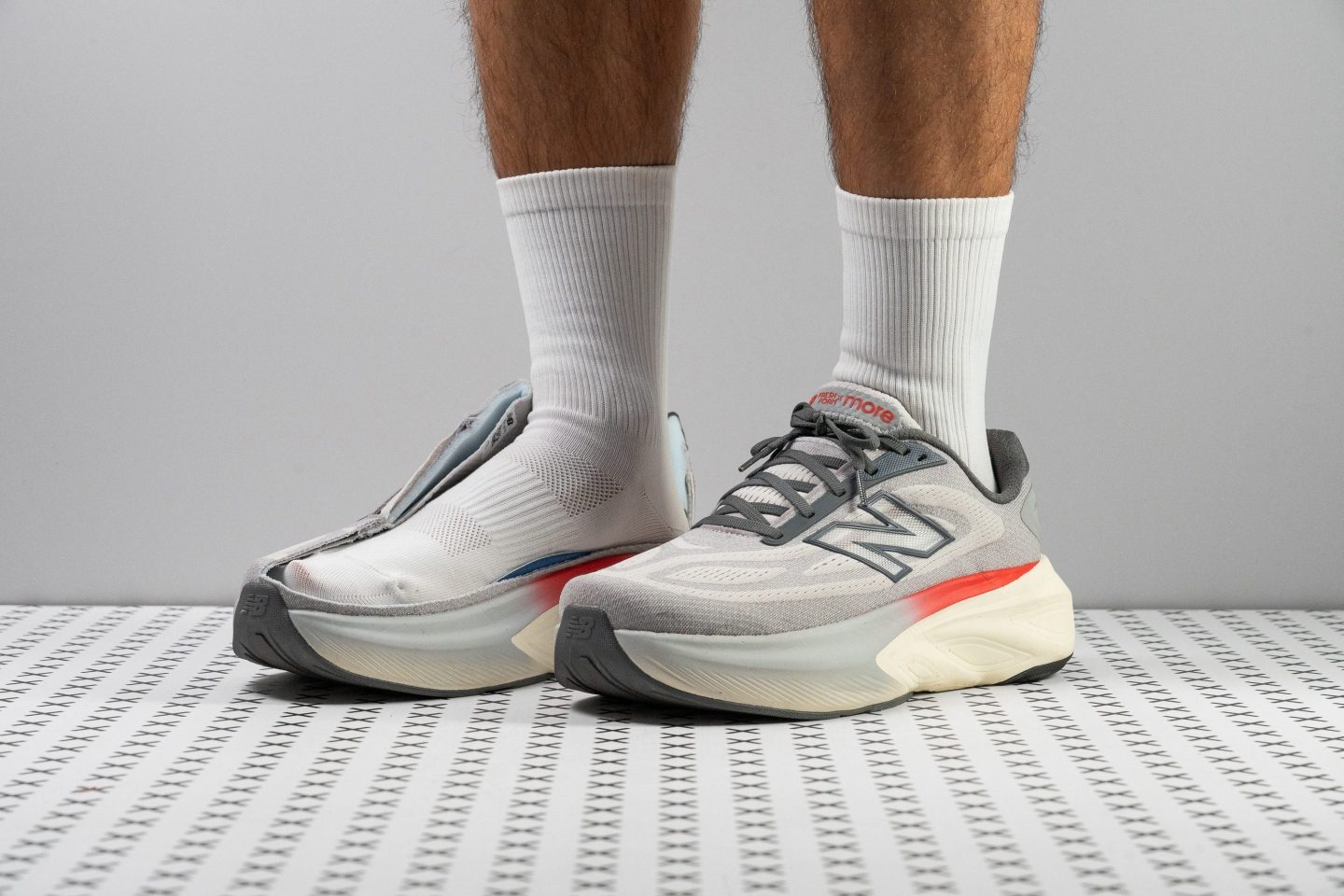
Starting with shoes like the heavily-rockered Fresh Foam X Balos, New Balance has begun mixing 20% of PEBA with 80% of EVA in some models to improve resilience. However, it's not doing any miracles, as the energy return of that shoe remained at an EVA-grade by registering just 55.1%.
So, who should consider Fresh Foam X shoes? They’re perfect for runners who enjoy a plush, highly cushioned ride and don’t mind moderate energy return. The More v6 is a prime example.
Saucony PWRRUN (EVA + TPU) / PWRRUN+ (TPU)
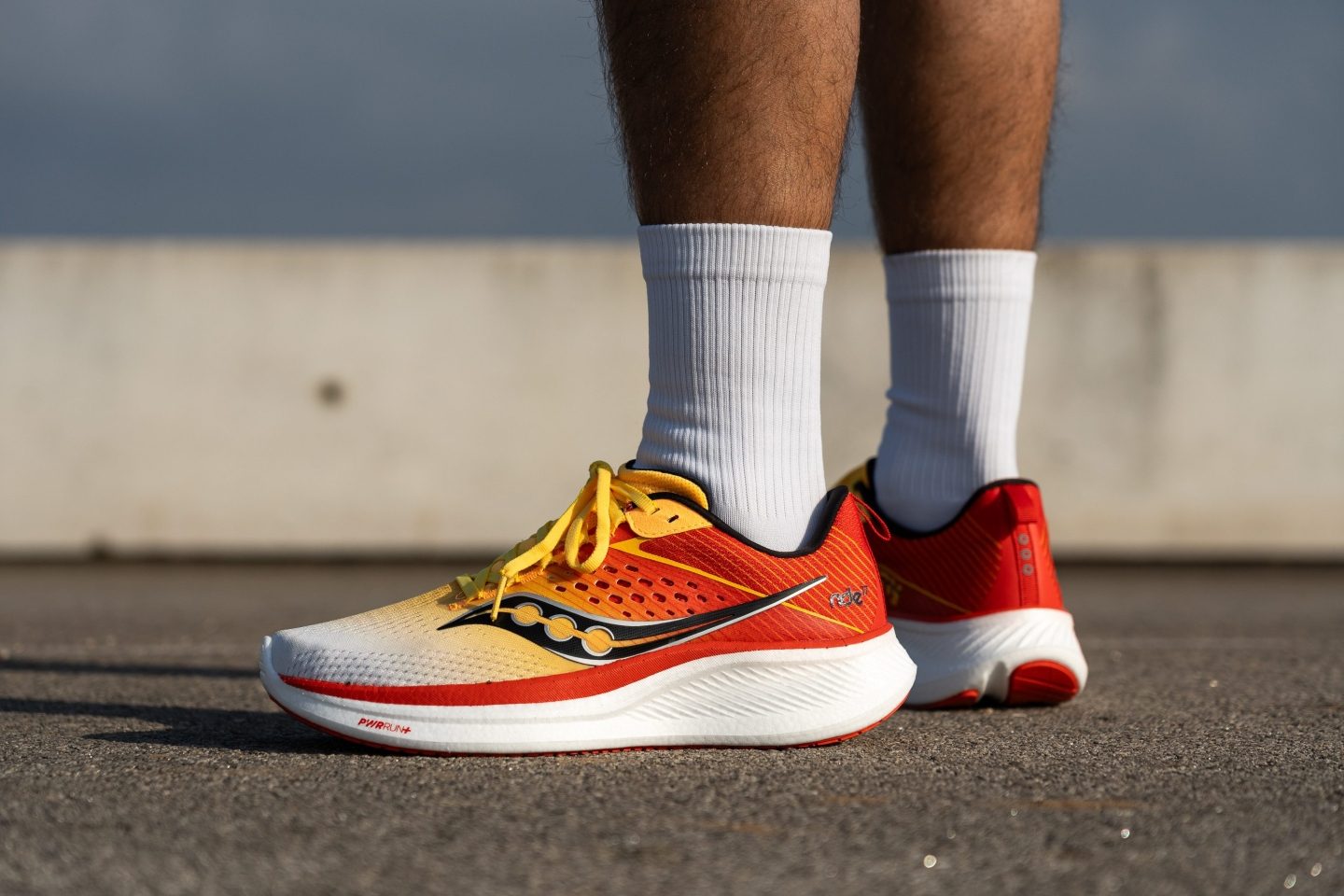
Back in 2015, Saucony introduced EVERUN, a durable foam that had some notable strengths but fell short in energy return and lightness. Consequently, four years later, they elevated their offerings by launching two distinct options:
- PWRRUN (EVA + TPU): This is one of the softest EVA-based foams we've ever measured in our lab. For example, our durometer registered 20.0 HA of hardness in the Guide 16, making it 20% softer than the average shoe.
- PWRRUN+ (TPU): Recognizing the limitations of EVA technology, the California-based brand opted for expanded TPU as their next step in training foams. As we've previously discussed, TPU is heavier, so they reserve this option for shoes where weight isn't a critical factor, like the Triumph 20. This foam is noticeably more springy and comfortable underfoot than its EVA counterpart and handles cold temperatures far better than EVA. For instance, the TPU-based Triumph 19 becomes 3.6% firmer after spending 20 minutes in our freezer, while the EVA-based Kinvara 13 experiences a 27.9% increase in firmness.
Hoka ProFly / ProFly+ (EVA)
As a clear innovator in the industry since its early days with the introduction of the now-common maximalist shoes more than a decade ago, Hoka found itself in a peculiar position in recent years.

While they offered great shoes featuring some of the best standard foams on the market and a clever dual-density approach, it wasn't enough for racing purposes. Their Carbon X 3 lagged behind shoes with premium foams, and their athletes—like Scott Fauble—were leaving the brand. However, this issue was addressed with the introduction of the new PEBA-based alternative, as we discussed earlier.
So, what does Hoka have to offer in terms of standard foams for training purposes?
- Hoka ProFly (EVA): A durable and bouncy EVA foam that Hoka has fine-tuned to achieve the perfect balance of softness in the heel and forefoot, delivering a comfortable yet snappy running experience. Unfortunately, energy return is disappointing.
- Hoka ProFly+ (EVA): The next evolution in the ProFly series, featured in recent models like the Mach 5. It's noticeably more bouncy and enjoyable to ride than the regular ProFly. Although Hoka has not provided any official details on this foam, we know that it's a supercritical EVA. Moreover, it's also softer than its predecessor, with our lab measurements showing the ProFly-based Mach 4 being 28.5% firmer than the Mach 5.
On Helion (EVA + OBC)
Following the route of the ASICS’ FlyteFoam Blast series, On decided to mix the EVA with OBC to obtain a better compound that delivers more bounce than a plain EVA, with the added benefit of a premium behavior under cold temperatures.
Of course, what makes On unique is their jaw-dropping foam design. The CloudTec system—which is patented by the Swiss brand—uses a series of pods that compress upon impact, and they claim that it really improves the midsole's performance. However, we recorded underwhelming results in the On Cloudmonster 2, which fell below our lab average with just 56.5% energy return.
Another frequent concern among runners was that Helion foam tended to feel somewhat firmer than desired, a notion we confirmed when both the Cloudmonster and Cloudstratus 3 exceeded the average result in our durometer test.
Altra EGO (EVA) / EGO PRO (TPE) / EGO MAX (EVA + TPU)
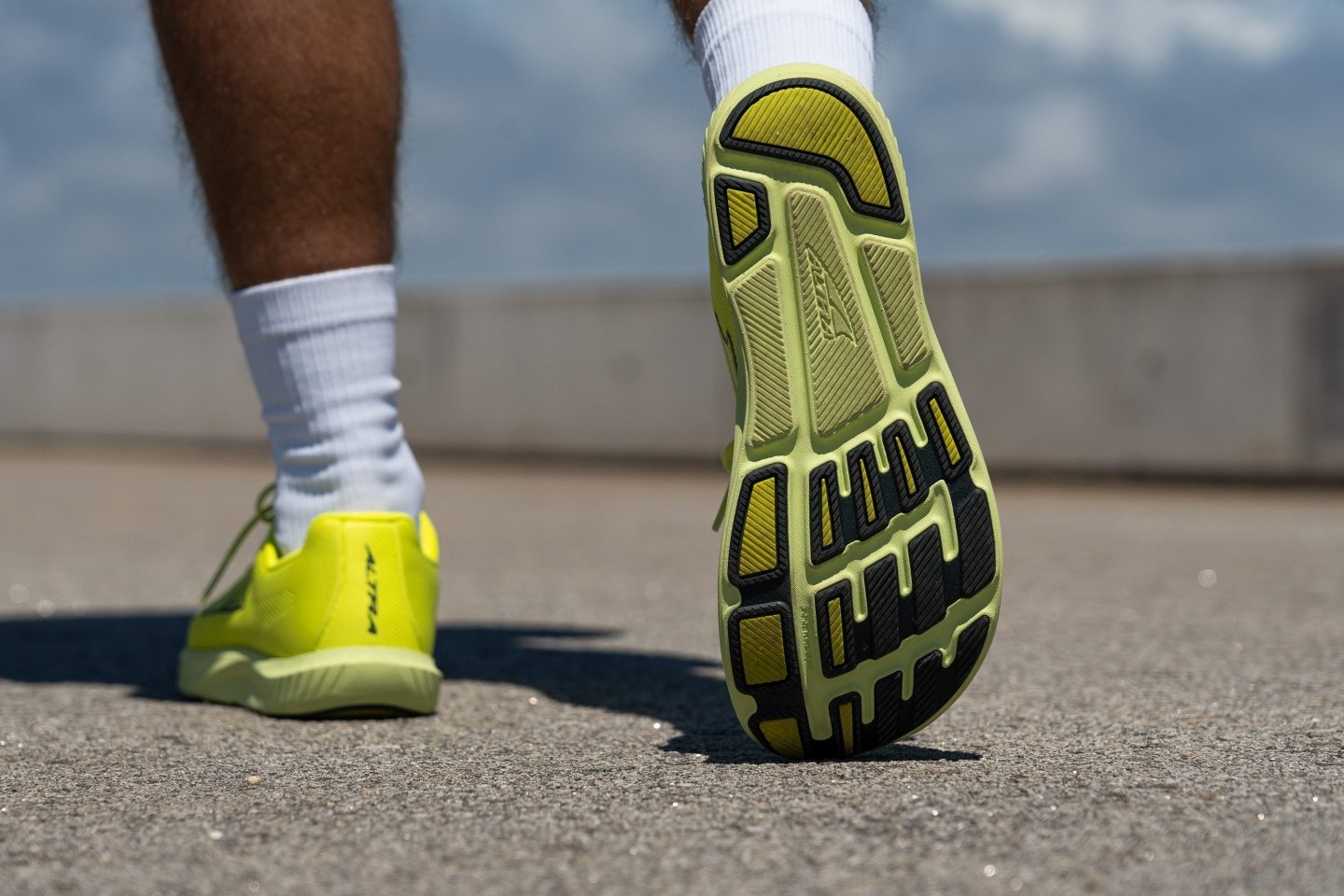
Altra, a brand known for its commitment to a 0-mm heel-to-toe drop and natural-shaped toe boxes, offers more versatility when it comes to midsoles. Runners can choose from 3 distinct options:
- Altra Ego (EVA): While this is their most affordable and entry-level midsole, it’s not a bad foam by any means. In fact, the Altra Ego provides one of the most enjoyable rides you'll experience with an EVA foam, as it's both soft and highly responsive. Our lab-testing of the Rivera 2 revealed that it was 40% softer than the average shoe!
- Altra Ego Pro (TPE): As the fastest of the three options and designed for racing shoes like the Vanish Carbon, Altra couldn't settle for a basic TPE foam. Instead, they infused it with a supercritical gas à la FuelCell to make it lighter and bouncier. Despite these enhancements, it still falls short of joining the ranks of premium foams.
- Altra Ego Max (EVA + TPU): The third foam was created to bridge the gap between the less energetic Ego and the faster Ego Pro. Ego Max combines EVA and TPU to improve durability and energy return, though it does add some weight to the shoe and it’s on the firmer side. That’s why they use it in the super-high-stack VIA Olympus.
Altra EGO FLO (EVA)
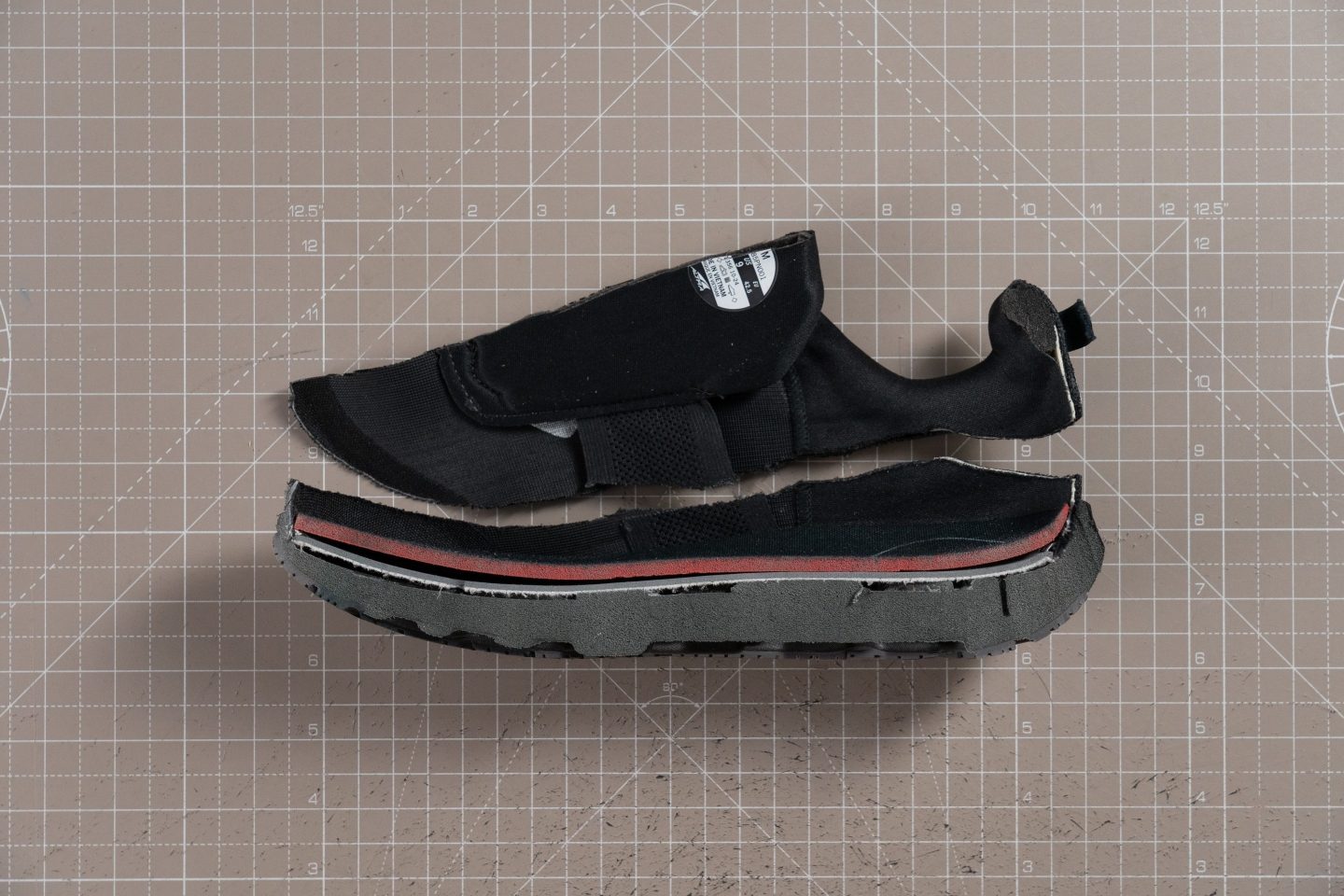
Altra hyped the EGO FLO as its first supercritical EVA foam, but it truly fell short of expectations. When we tested it in the lab with the Altra FWD VIA, we found disappointingly low energy return and an overall flat, uninspiring ride.
We’re convinced this foam will have a short lifespan for Altra, especially now that their much better EGO P35 compound feels so good. And that’s fine, every brand needs a few trial-and-error moments along the way...
Altra EGO P35 (POE)
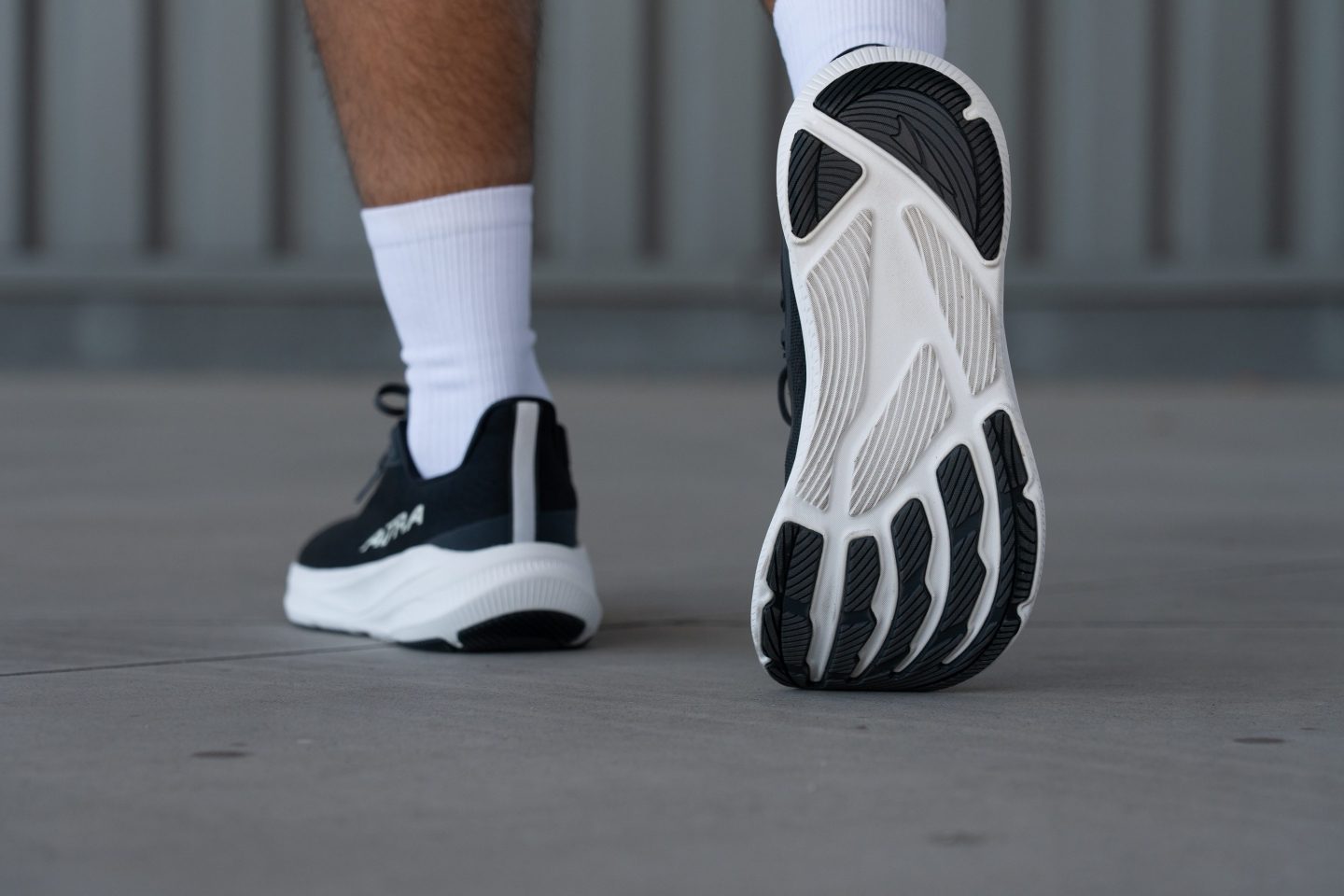
After years of relying on foams with poor energy return, Altra finally delivered a strong performer in 2025: EGO P35. This new compound is based on polyolefin elastomers, quite similar to ASICS’ FF Blast Max, and offers a major leap in responsiveness and energy efficiency compared to its predecessors.
To put that into perspective, our lab tests showed the original Experience Flow’s basic EVA foam at just 46.1% in the heel and 49.4% in the forefoot. In contrast, the Experience Flow 2 reached an impressive 60.3% and 68.1%, respectively. That’s a massive upgrade, and we really hope Altra brings this foam to all of its new shoes.
PUMA Nitro (TPEE)
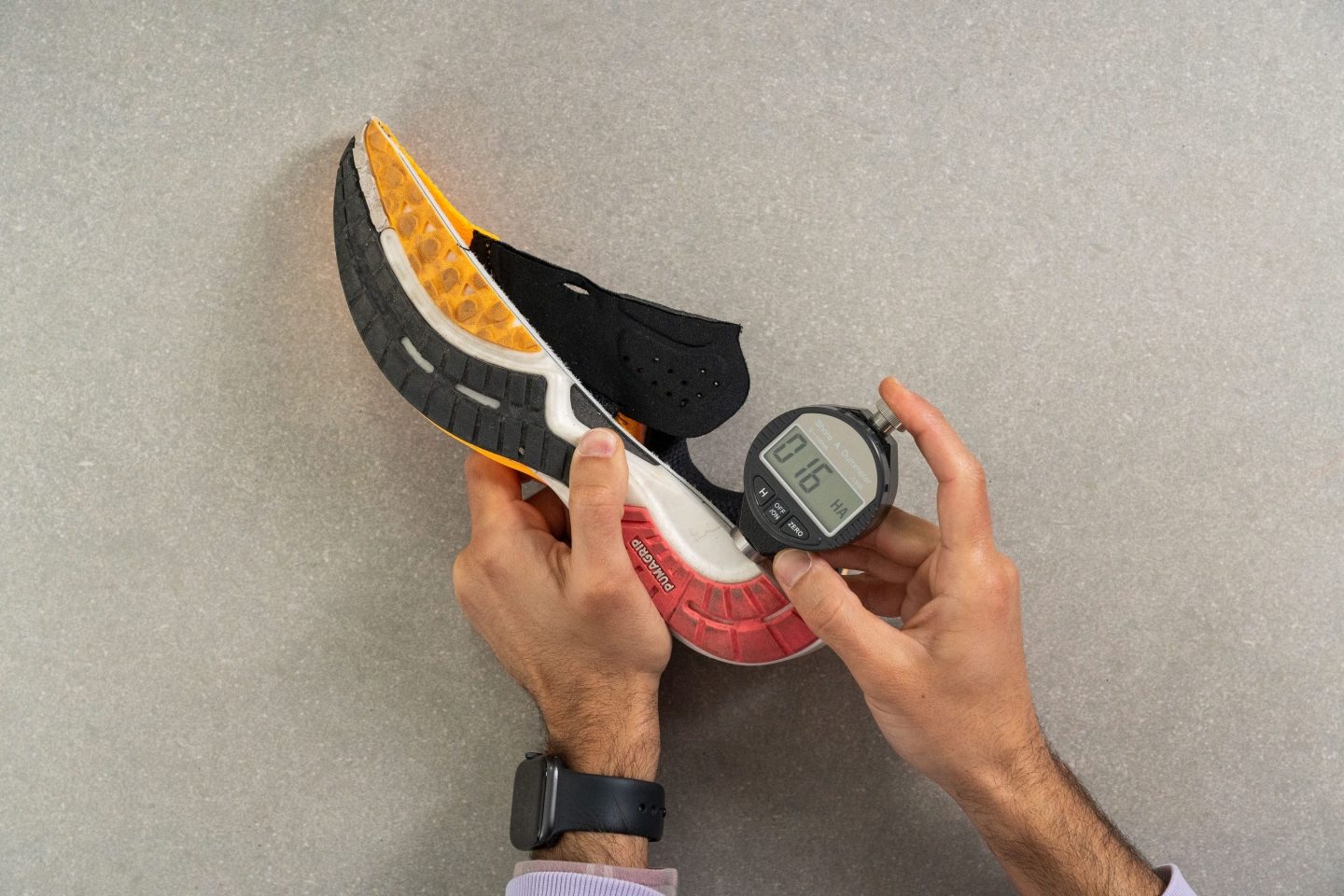
As the name suggests, Nitro refers to the nitrogen used to infuse the foam. While it delivers a solid running experience, the TPEE version of Nitro (like in the Puma MagMax Nitro) doesn’t offer the same lively energy return we found in its PEBA and A-TPU variants.
Since 2025, PUMA is gradually phasing out this older Nitro formulation in its flagship trainers—but it will likely remain in more affordable models for a while, which is a common approach when brands introduce new tech and shift the previous one to budget-friendly options.
PUMA Profoam / Profoam Lite (EVA)
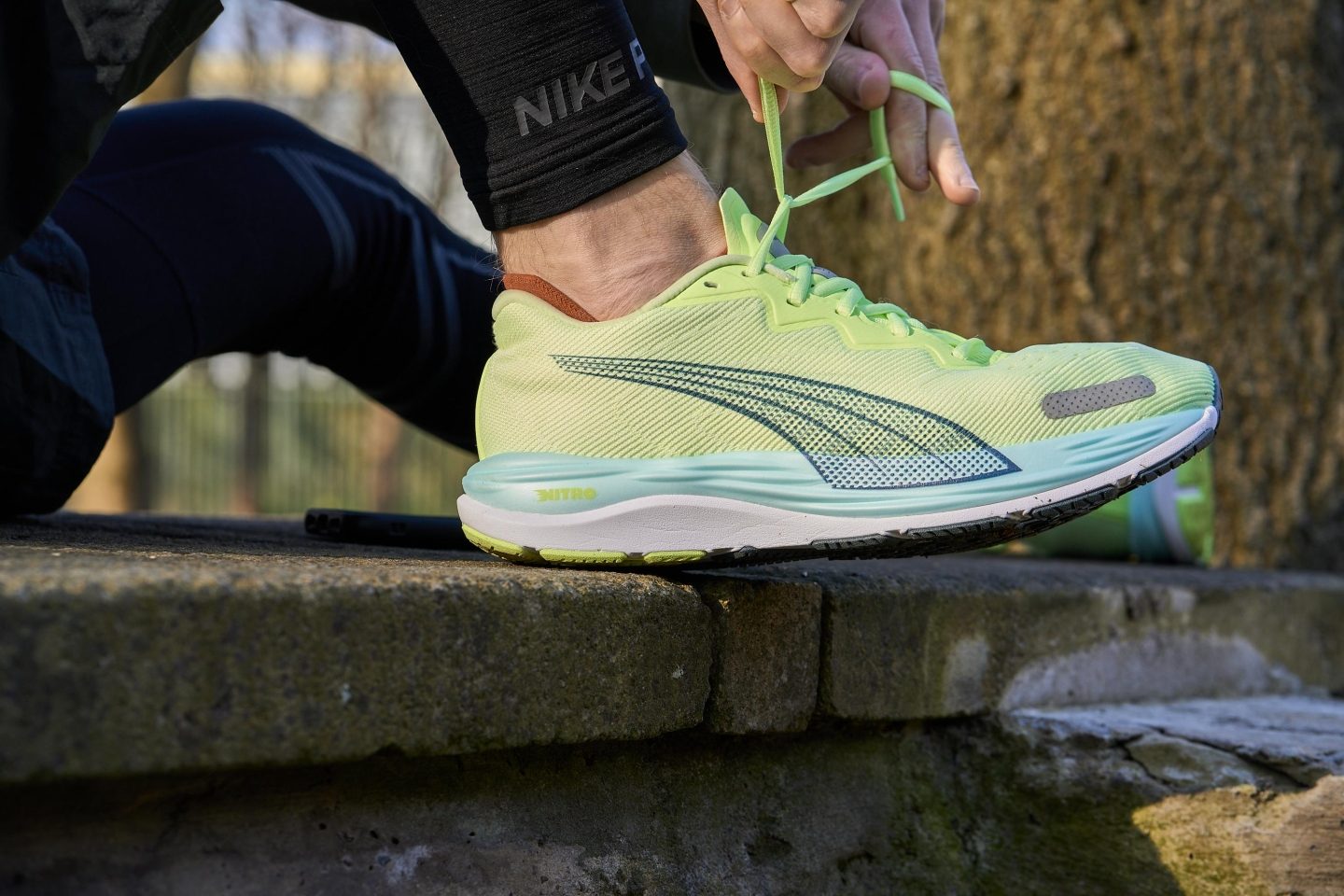
PUMA provides a more affordable standard foam (Profoam / Profoam Lite) used in budget-friendly running shoes, as well as in models designed for enhanced durability and stability, given its firmer composition compared to Nitro foam. The PUMA Velocity Nitro 2 serves as a prime illustration of this application, using a dual-foam configuration with Nitro and Profoam Lite.
Under Armour FLOW

The FLOW foam first appeared in the basketball market with the Curry line, designed to merge cushioning and traction into a single system. It essentially combines standard EVA with a rubberized EVA layer, eliminating the need for a separate outsole.
For running, FLOW is an average-at-best midsole in terms of energy return—leaning toward the lower tier. It’s far from a high-performance option, and its presence in shoes like the SlipSpeed Mega highlights its casual approach, prioritizing convenience over durability and responsiveness. It’s an all-in-one, cost-effective solution—but not a game-changer by any means.
Under Armour HOVR (EVA + OBC)
Under Armour has not traditionally been a dominant force in the running shoe market, with running never serving as a primary revenue stream and only a limited roster of athletes, such as Sharon Lokedi, receiving sponsorship. This focus is reflected in the quality of their cushioning systems, as the HOVR foam lacks the refinement seen in competitors’ offerings especially since 2022.
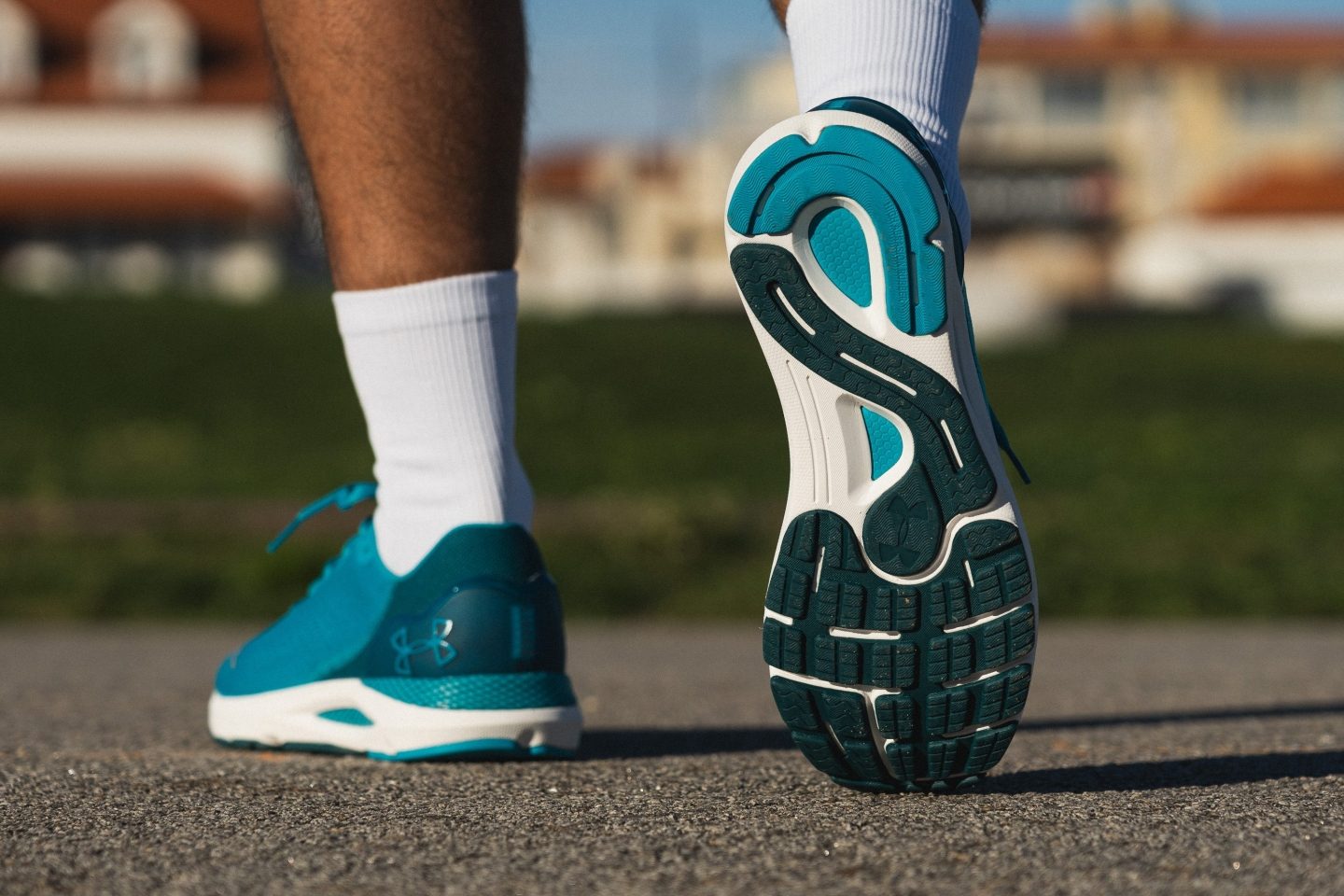
Manufactured in partnership with Dow Chemical in 2018—a major supplier for brands including ASICS—the HOVR foam targets the lower end of the performance spectrum, and it usually delivers a really firm feel underfoot. In fact, the Under Armour HOVR Sonic 6 is one of the firmest shoes we've ever measured in the lab.
We think it is designed to meet the requirements up to mid-tier daily trainers rather than high-end performance models, so if you're seeking a bouncy foam may wish to consider alternative options.
Under Armour HOVR+ (TPU)
It was clear that UA needed a more advanced foam than an EVA-based compound, and that changed with the introduction of HOVR+. Despite the simple name upgrade, this is a completely new material with a redesigned structure. This time, it's made from TPU and follows a manufacturing process quite similar to Adidas' Light Boost, delivering a much livelier feel underfoot.
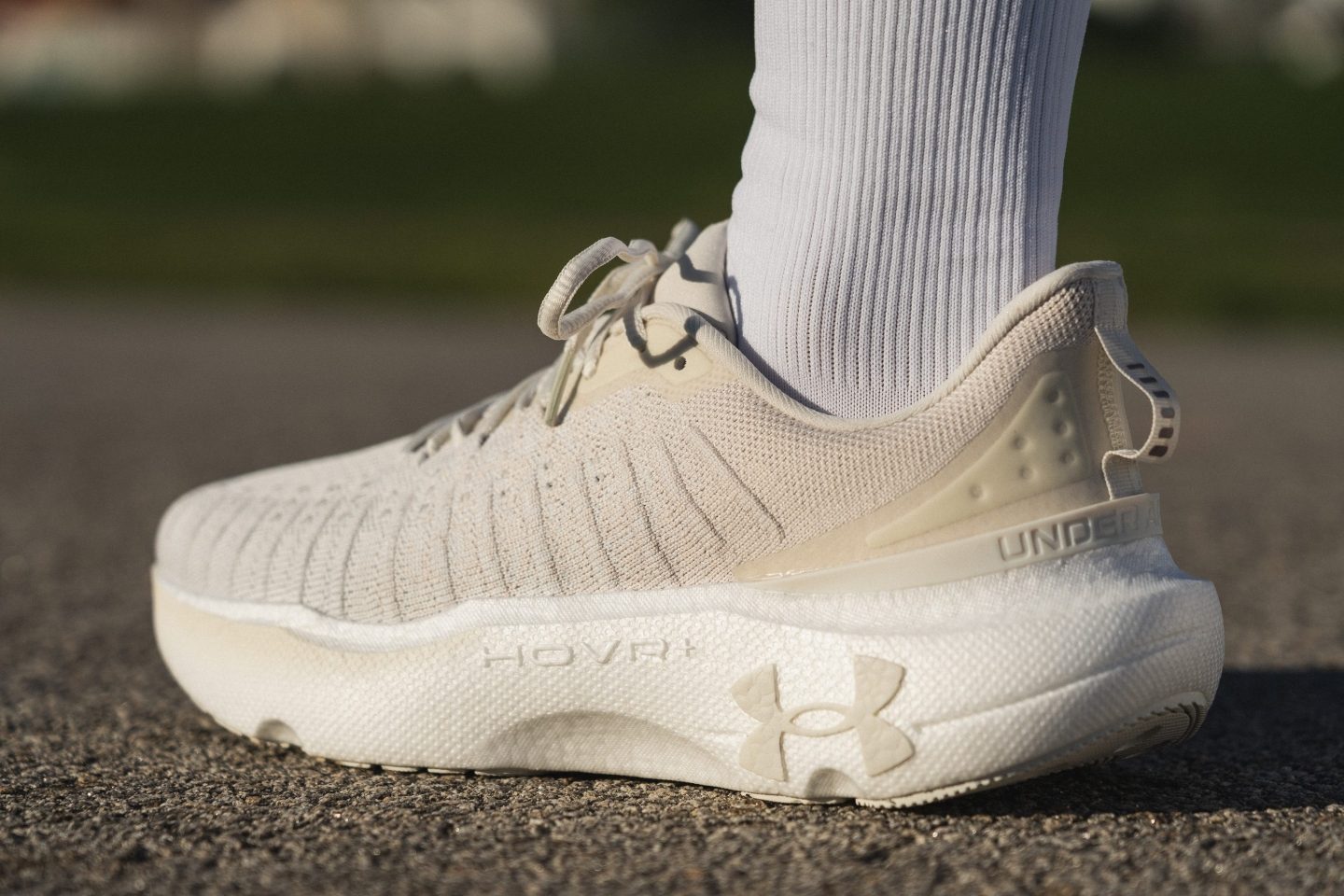
It retains all the advantages of TPU—better energy return, enhanced durability, and a more responsive sensation—but also comes with its main drawback: added weight. When we reviewed the Under Armour Infinite Elite, we were shocked by how heavy it felt. The extra cushioning brought noticeable softness and bounce, but the trade-off in weight was impossible to ignore.
We really believe that Under Armour has the potential to become a serious competitor in the running shoe world, and refining their cushioning systems is a much needed step in the right direction.
Mizuno Enerzy (TPE)
2020 wasn't definitely the best year for road races for obvious reasons, but it was a significant year in terms of foam debuts, and one of them was Mizuno Enerzy.
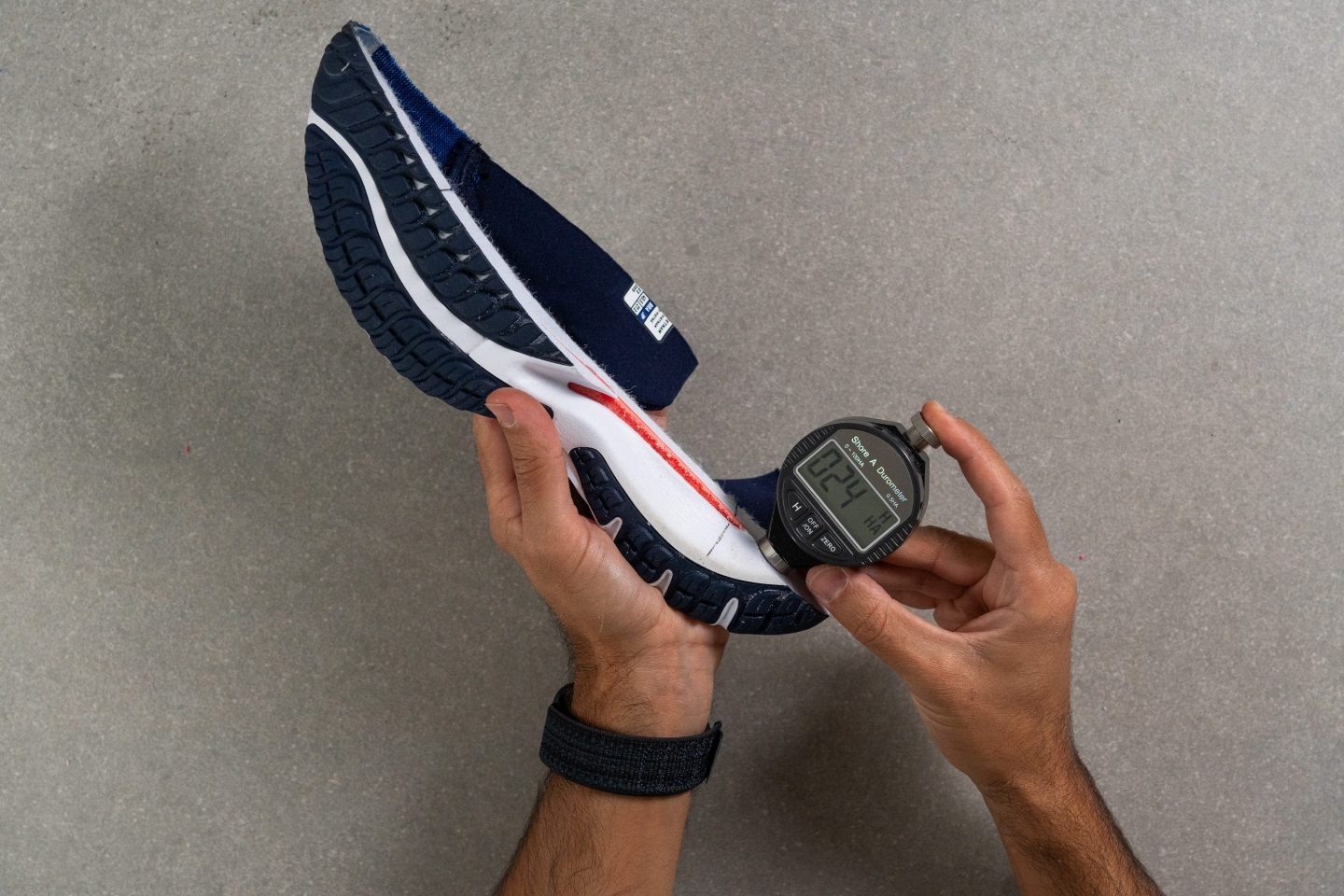
This is a TPE foam that the Japanese had been developing for over two years—which is a similar compound to Puma Nitro—and it delivers 17% more compliance and 15% more resilience compared to an average EVA foam from Mizuno. We've noted that this is a genuine improvement in every step.
Overall, it's an excellent foam for daily trainers, though it's a bit heavy. It is really durable and offers a balanced softness underfoot that can be used in a wide range of shoes. We discovered that its durable nature and versatility make it a reliable choice for everyday use.
Mizuno Enerzy Lite (Nylon)
With Enerzy Lite+ being Mizuno's top-tier foam and Enerzy serving as the go-to choice for daily trainers, Enerzy Lite also has its place. Of course, it not only drops the "+" compared to the premium foam but also some of the softness and energy return in the process.
We've observed the nylon-based Enerzy Lite in very few shoes, where Mizuno uses it as a more stable version of Lite+ that still offers considerable compliance, though not on par with Lite+. For example, we found it in the Wave Rebellion Pro 2 beneath the plate, helping to stabilize the gargantuan stack height of this shoe.
NNormal EExpure (EVA)
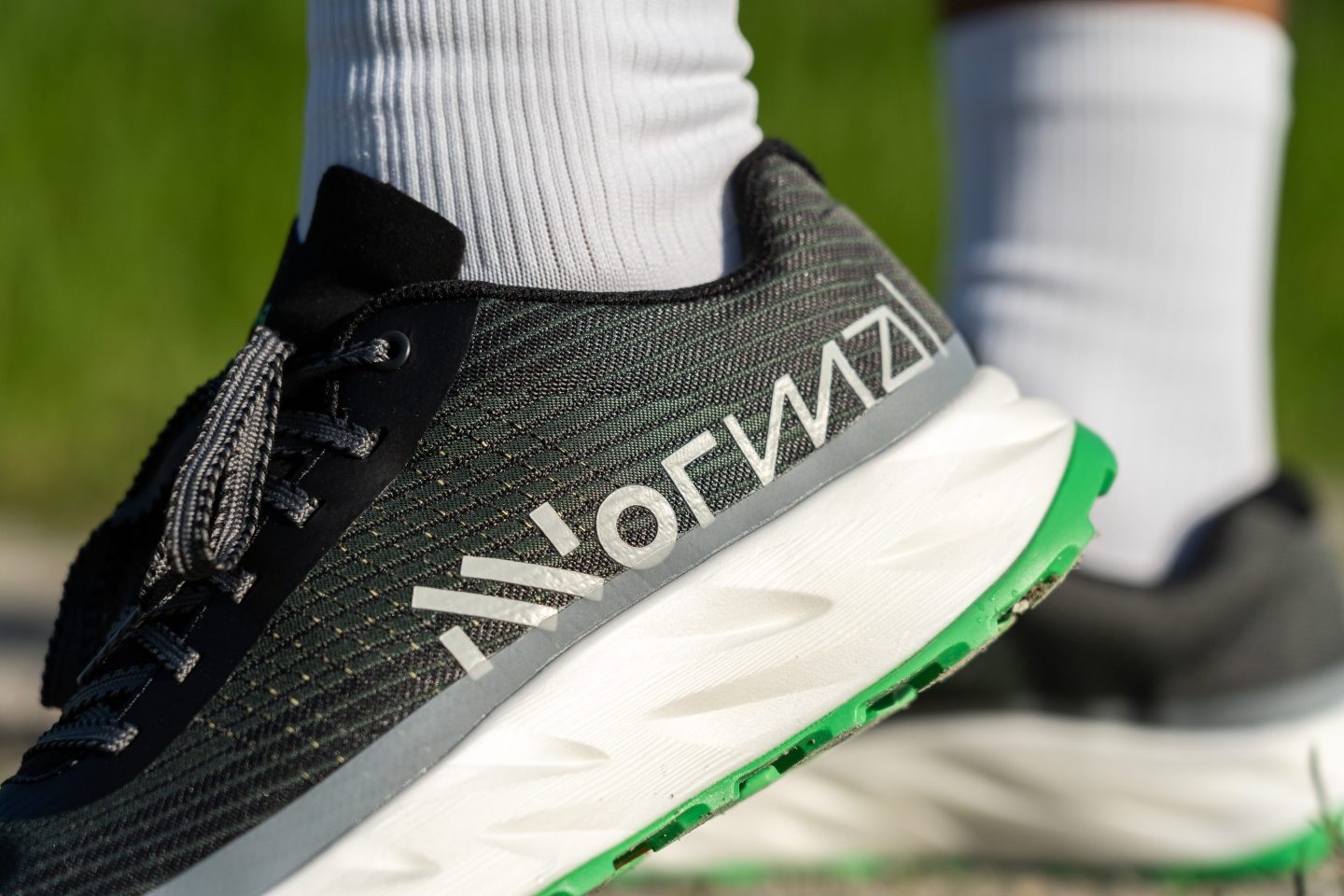
NNormal is a brand-new company born from a collaboration between trail-running star Kilian Jornet and footwear company Camper, both from Spain and aiming to combine forces to create eco-conscious running shoes. This mission led to the creation of the EExpure foam.
EExpure is a nitrogen-infused EVA foam known for its remarkable lightness and durability. In fact, it’s arguably one of the most durable supercritical foams—unsurprising, as NNormal focused extensively on creating shoes like the Kjerag with replaceable outsoles to extend product life.
We’re aware that NNormal has other foams in development, including a TPU-based option and a much-anticipated PEBA-based foam that may debut in future models like the Kboix. For now, that's all we know!
Topo ZipFoam (EVA + TPU)

While Topo offers a Pebax-based option in its premium models, most of its lineup relies on ZipFoam—an EVA and TPU blend designed to balance affordability, durability, and moderate energy return.
ZipFoam isn’t a bad foam, but it’s far from groundbreaking. It feels like a fusion of Adidas' Boost and standard EVA, where the added TPU improves longevity but also increases weight. In our view, Topo needs to develop a supercritical EVA compound to make its daily trainers even more compelling.
Salomon Energy Foam (EVA + OBC)
Salomon is pushing hard to make a mark in the road running scene despite its trail-focused history, and Energy Foam has played a key role in that shift.
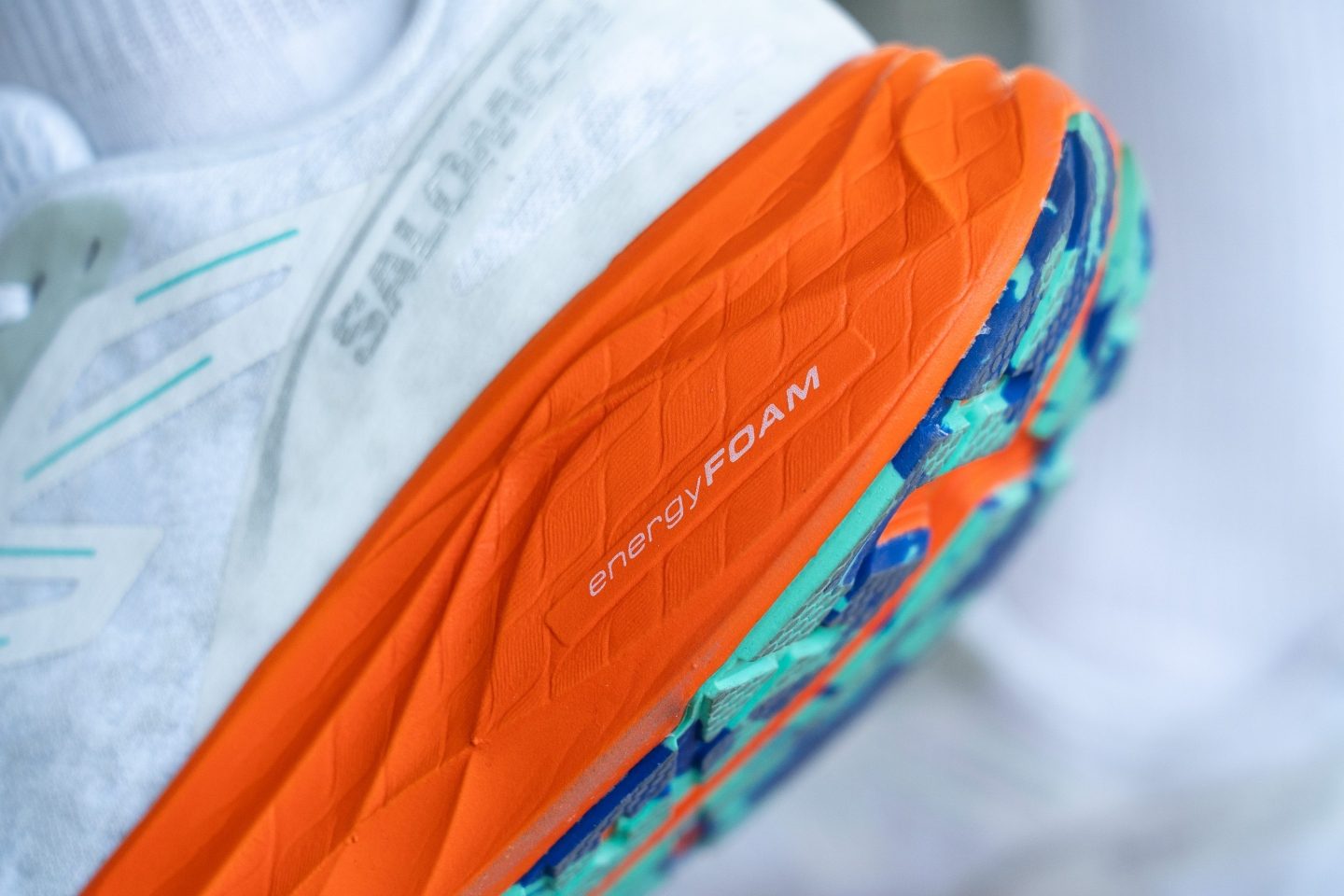
It’s not a top-tier foam, but it performs better than average EVA. Similar to FF Blast+ from ASICS, Salomon blended EVA with Olefin Block Co-polymers to boost performance and maintain softness in cold weather.
The result is a cost-effective midsole that works well. We’ve already seen it featured in Salomon’s daily trainers like the Aero Glide 2 and we're sure it will be used for many years in their pocket-friendly models.
Salomon Energy Foam EVO (eTPU)
While Energy Foam performed decently, the daily trainer market has become ultra-competitive. Nike now offers a lot of ZoomX in the Vomero 18, and Adidas packs 100% Lightstrike Pro into the Adizero EVO SL—both priced at just 150 bucks. That puts serious pressure on Salomon’s EVA-based solution.
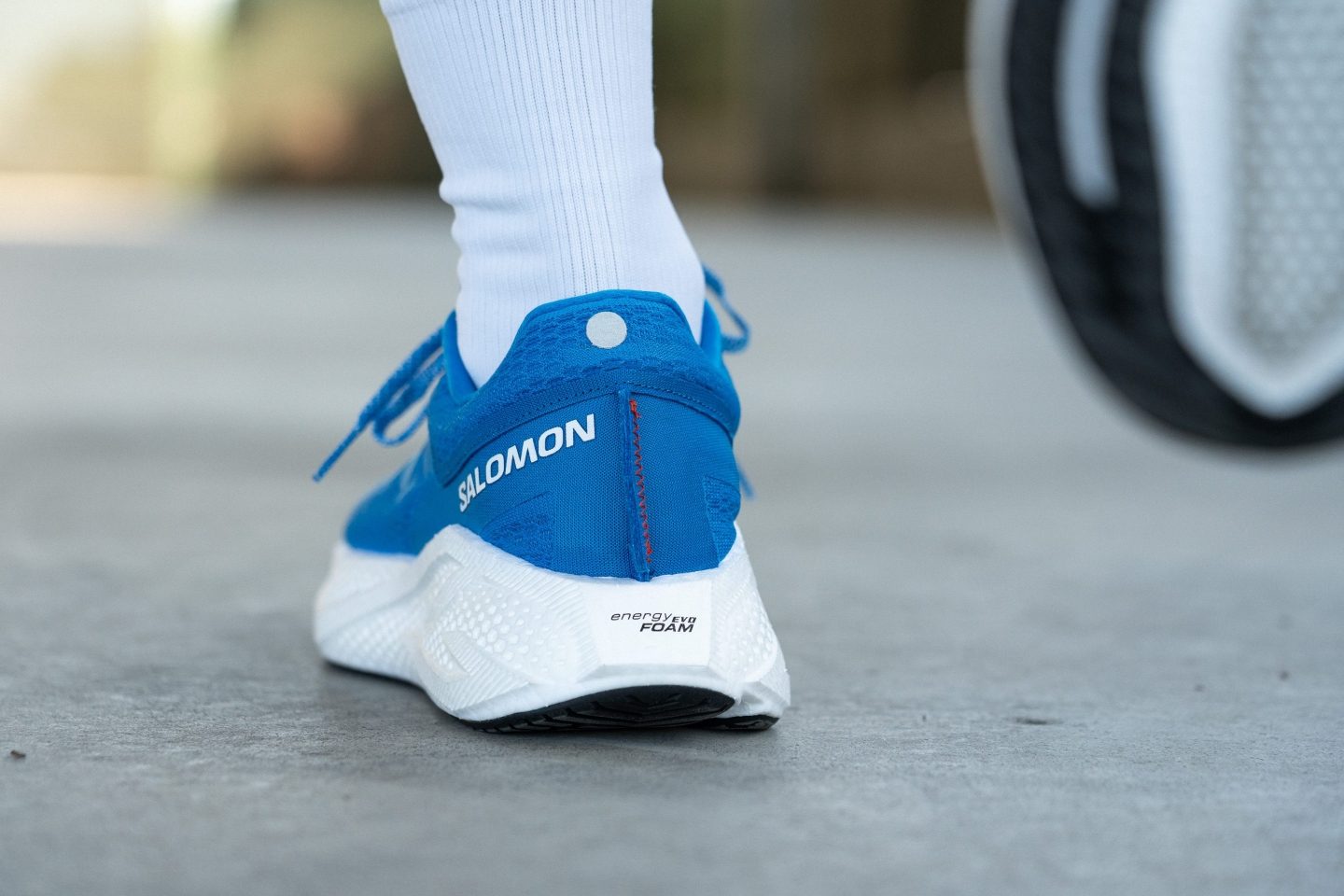
And here comes the Aero Glide 3 with Energy Foam EVO. Despite the similar name, it’s a completely different formulation that no longer features EVA. This time it’s an eTPU-based compound, delivering a feather-light feel with improved energy return and reliable durability.
We believe that Salomon now has a legit contender for the premium daily trainer category, and from our perspective, this foam is here to stay for at least 3 or 4 seasons.
Salomon optiFOAM (EVA + OBC)
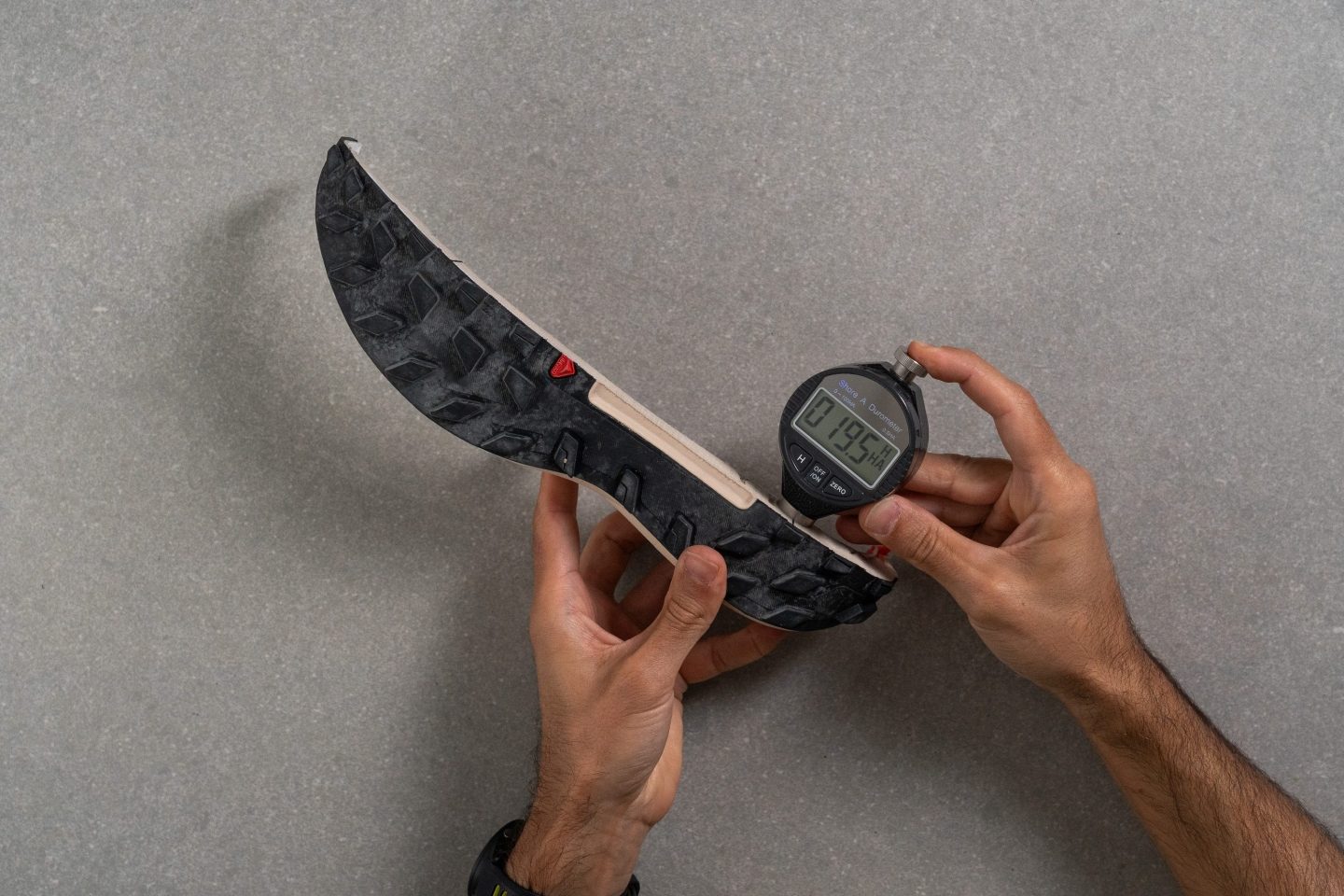
Salomon employs another EVA + Olefin blend in some of its models under the trademarked name optiFOAM. It’s not a bad compound by any means, but there’s a clear issue: the brand uses it in several high-priced S/Lab shoes, and our lab tests revealed energy return levels typical of standard EVA—essentially average.
In our opinion, this foam would be better suited as an entry-level option within Salomon’s lineup rather than a flagship material for premium trail models. Hopefully, Salomon will address this sooner rather than later.
KEEN QuantumFoamX (PEBA + EVA)

KEEN is one of the latest brands to step into the running world, and coming from a hiking background, it’s easy to assume their foam might fall short. However, we have to give them credit because QuantumFoamX combines PEBA and EVA in a 20/80 ratio, just like New Balance does with its top version of Fresh Foam X.
Of course that it’s not a superfoam, and its energy return is only average, but the inclusion of PEBA makes it perform far better in cold conditions. That alone puts it ahead of plain EVA foams, which still dominate much of the market.
Which standard foam should you choose?
Just as we did in the Premium Foams section, we're going to identify some common scenarios and share our top picks for each situation.
| You need... | Best midsole for that | Our pick |
| Hyper-plush ride | FuelCell / Fresh Foam X | New Balance FFX More v6 |
| Fun and fast ride | Nitro | PUMA Velocity Nitro 4 |
| A cold-proof midsole | PWRRUN+ / Dreamstrike+ | Adidas Supernova Rise 2 |
| Stability and firmness | Lightstrike EVA or Helion | On Cloudmonster 2 |
| Durability | Boost Light / PWRRUN+ | Adidas Ultraboost 5 |
| Bouncy ride | FF Blast Max / DNA Loft v3 | Asics Novablast 5 |
| A hybrid all-rounder | ReactX | Nike Pegasus 41 |
| Responsive feel | ProFly+ | Hoka Mach 6 |
Vintage foams
Some decades ago, the landscape of running shoe foams was 100% different from what it is today. The materials used were predominantly based on EVA foams. EVA had been the standard choice for midsole material since its introduction in the 1970s, offering a balance of cushioning, durability, and lightweight properties. Prior to EVA, midsoles were often made from polyurethane, which was heavier and less responsive.

As the running shoe industry evolved, brands tried to improve the performance of their footwear, but evolution was barely none. They experimented with various blends and compositions of EVA to fine-tune the cushioning and durability of their shoes. Some companies also incorporated gel (ASICS) or air (Nike) cushioning systems into their midsoles to try to enhance shock absorption and energy return.
Despite these innovations, the pre-2010 era of running shoe technology was characterized by incremental improvements rather than groundbreaking advancements, and nothing quite similar to Boost or ZoomX happened.
